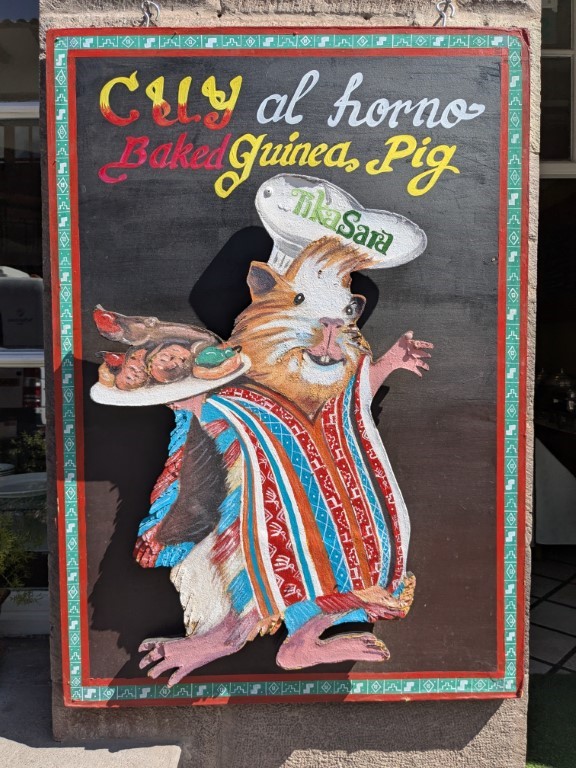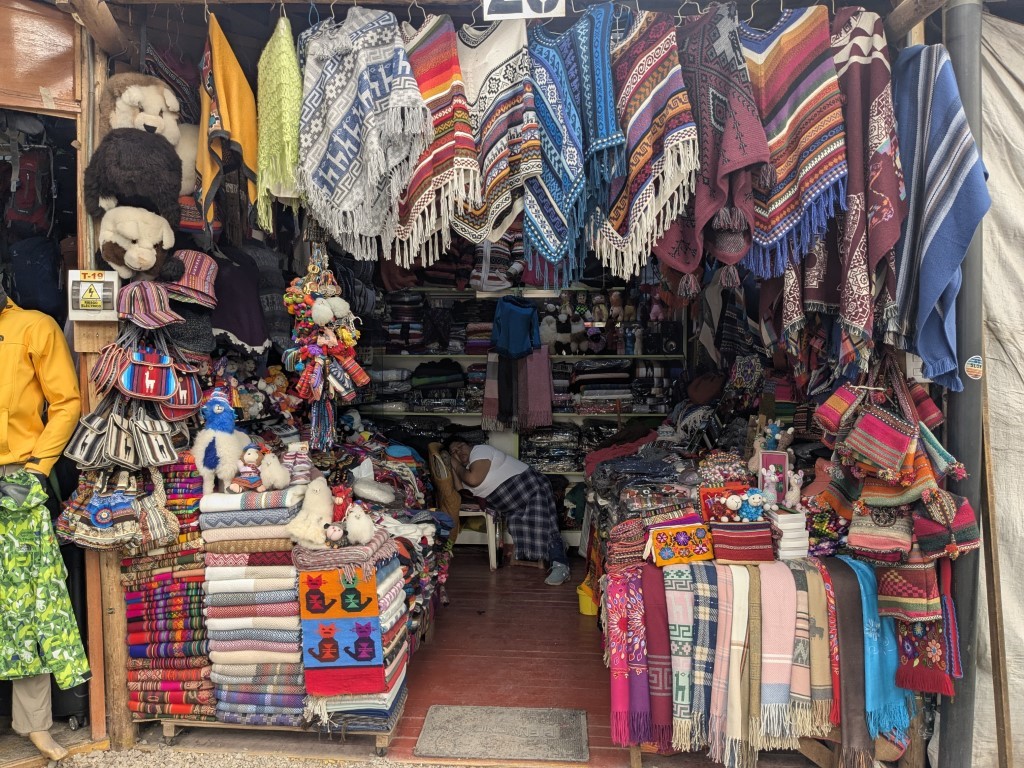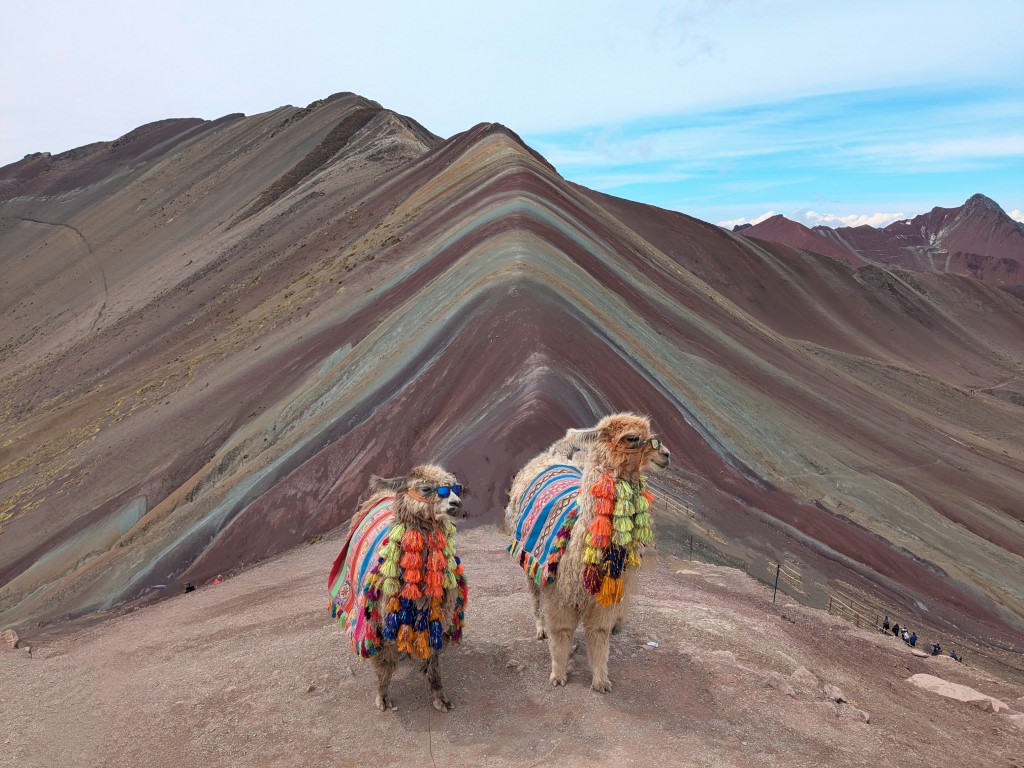
We’ve done so much it’s pretty much a blur but thankfully the pics trigger my memory. I think that life is precious, fragile & short and I believe it could get eaten up if we let it with things that at the end probably wouldn’t matter too much. I hope Jon & I can keep living ours as fully & free as we have been and continue having a great time seeing & doing new things and meeting cool people. It’s a great big world out here and our minds are broadened with the experiences we have. It’s not all easy and fun but the highs make up for the lows.
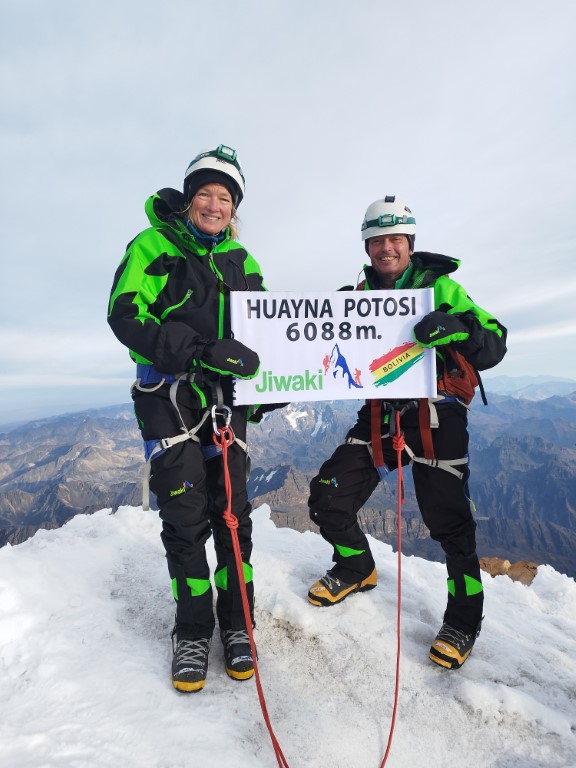
It took awhile to come off the high of climbing Huayna Potosi. Friends sent us another pic. We will never forget that feeling of exhaustion and elation. We took a day to rest but also booked a downhill bike ride of what they call the Death Road for the following day. We would come to realize that the most dangerous part of the Death Rd was the minibus ride to & from it! It started at 6am, getting the cab into downtown La Paz. Then the minibus to the start of the ride which was a long way out of the city. The Death Rd was once the main road for the villages in the mountains well above La Paz and it had such precipitous drop-offs and tight curves prone to washouts and accidents that it was nicknamed that. Then we were told by our guide that Evo Morales promised a newer, safer road as part of his campaign for President and he did deliver on that promise. The Death Rd then became a tourist attraction and the downhill bike route came into popular fashion. It is a beautiful road. You start way up in the high mountains with snow on the peaks and freezing early morning temps. The mountains are bold and dramatic but you are so garbed up in safety gear that you can really just hold on to the brakes as you blast downhill. As you descend, the mountains turn green and the temps warm as you enter the jungle. I think I read it is something like 64km of downhill. We stopped at various places for the guides to take pics with their budget cell phone so nothing really came out but we appreciated their effort. At the bottom of the road a few hours later, we piled back into the minibus to go to a hotel for lunch and a swim. I enjoyed the waterslide and the smell of the jungle air. It felt good to be free of all the heavy safety gear that didn’t seem necessary. Then it took 3 hours to drive back to the city to get our cab back to the truck. What an uncomfortable ride in fumes, traffic and curves. Boy, were we glad to get home! It would have been so much nicer to do this ride on our own but logistically, it was too complicated.
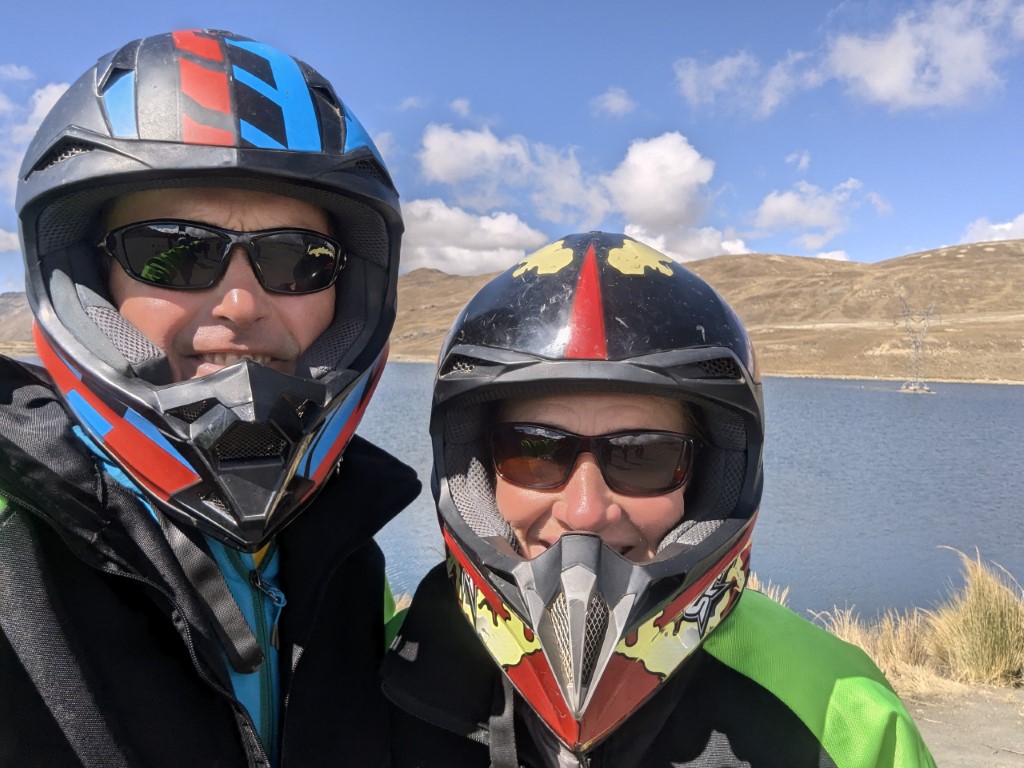
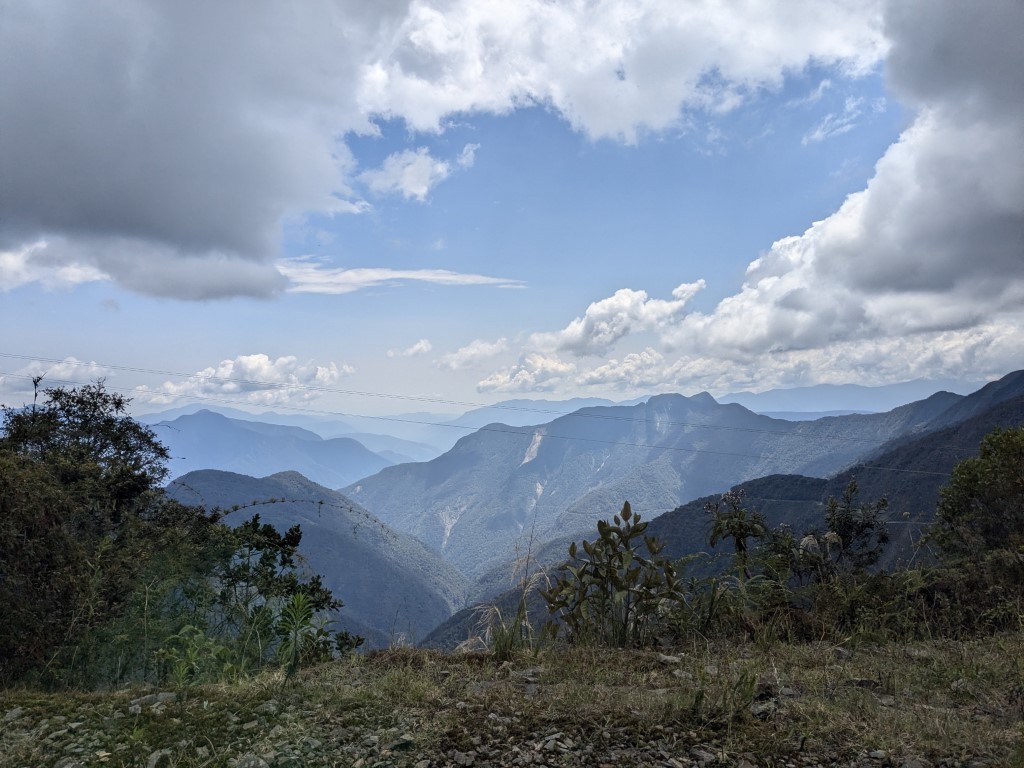

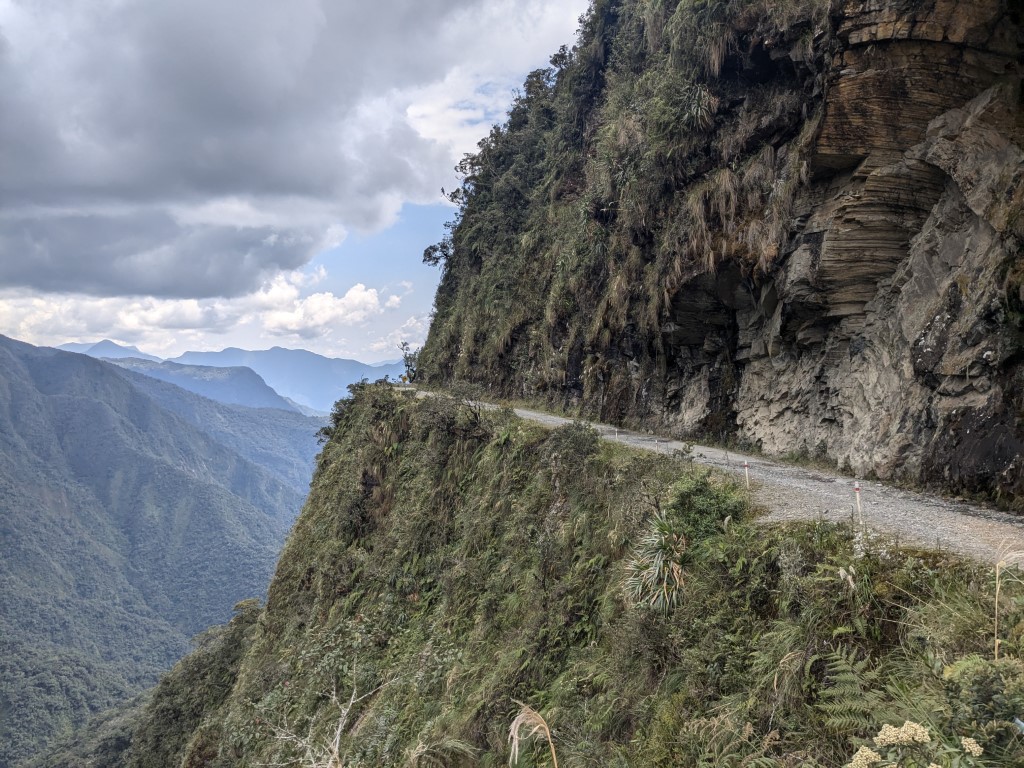
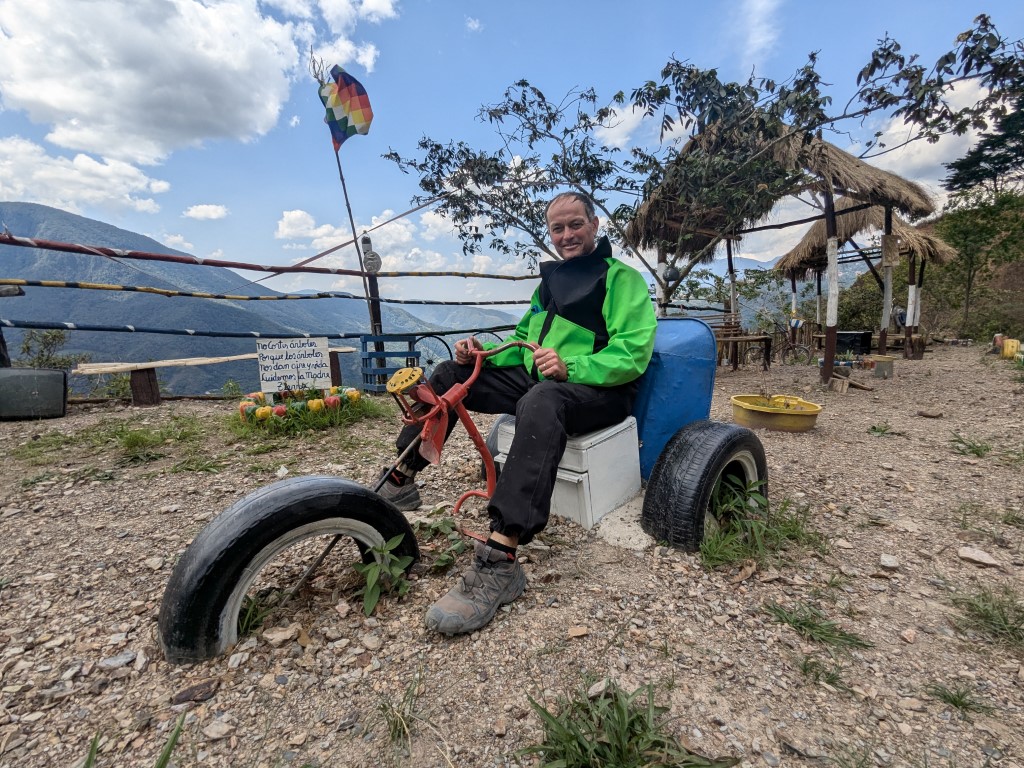
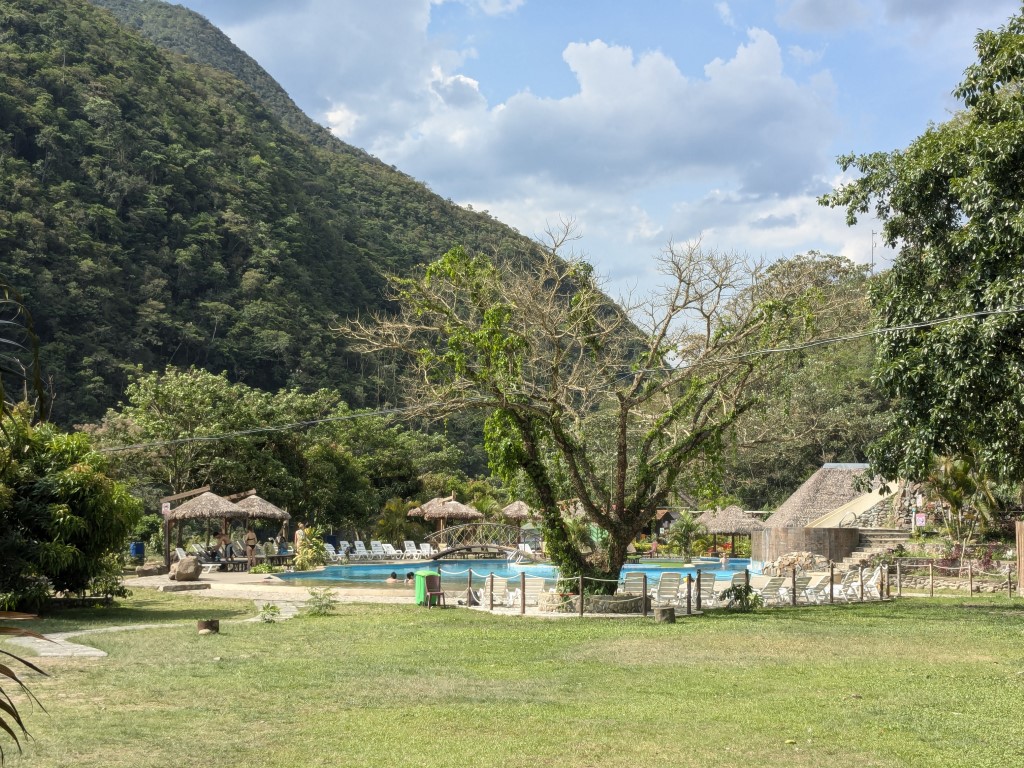
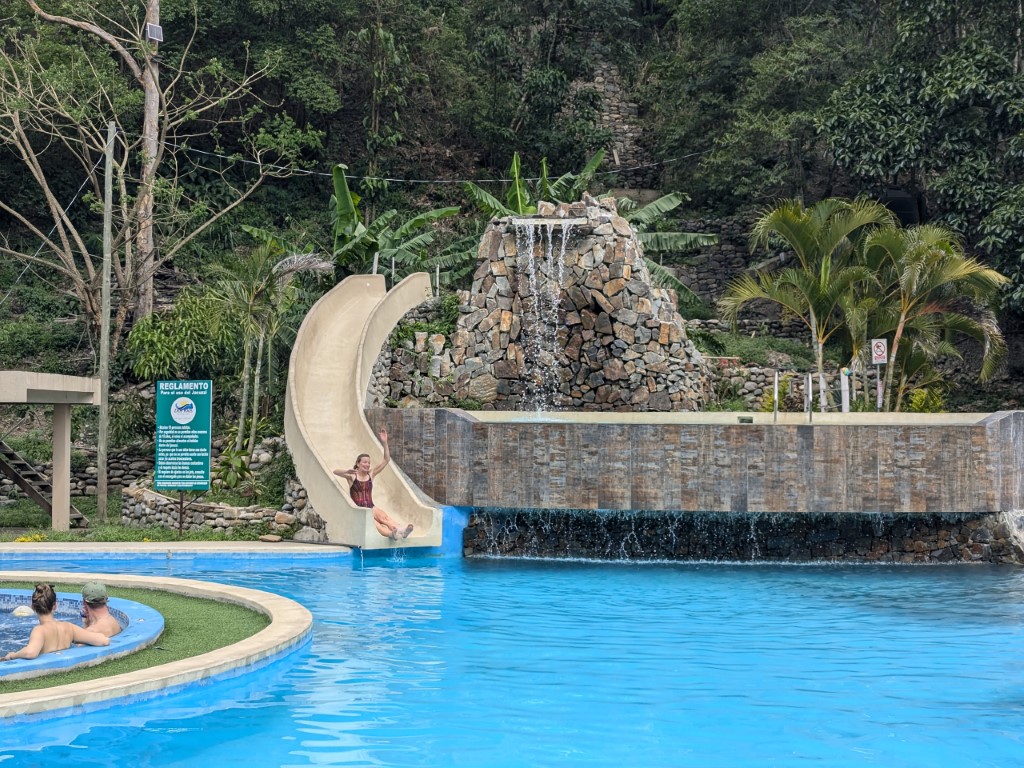
While we had hoped to do some more hiking around La Paz such as Pico Austria, the truth was we just wanted to get outta there. The city is too big & it’s too hard to get around in the truck. So we headed off the next morning toward Copacabana, on the Bolivia side of Lake Titicaca. It felt so good to get out into the open roads again with something pretty to look at. One thing about Bolivia (and Peru too) is no building is ever completed. They use this orange colored brick and the cement oozes out of the corners and dries haphazardly and everything looks undone. It makes for some unattractive residential areas and coupled with all the other factors, it’s sometimes hard to see the pretty pockets amongst the rough. But if you get out into the countryside, it is visually very beautiful and the traditional indigenous homes look pretty in that setting. Some towns are really neat and others are not. When you’re nearing the Lake, you take a little rickety ferry as a shortcut to save some driving time. Oh boy, you just hope the wooden raft doesn’t come apart with your truck on it! But it was a beautiful day and it felt kind of nice to be on the water. Approaching the town of Copacabana was pretty and we felt excited about the campground we were going to beside the lake.
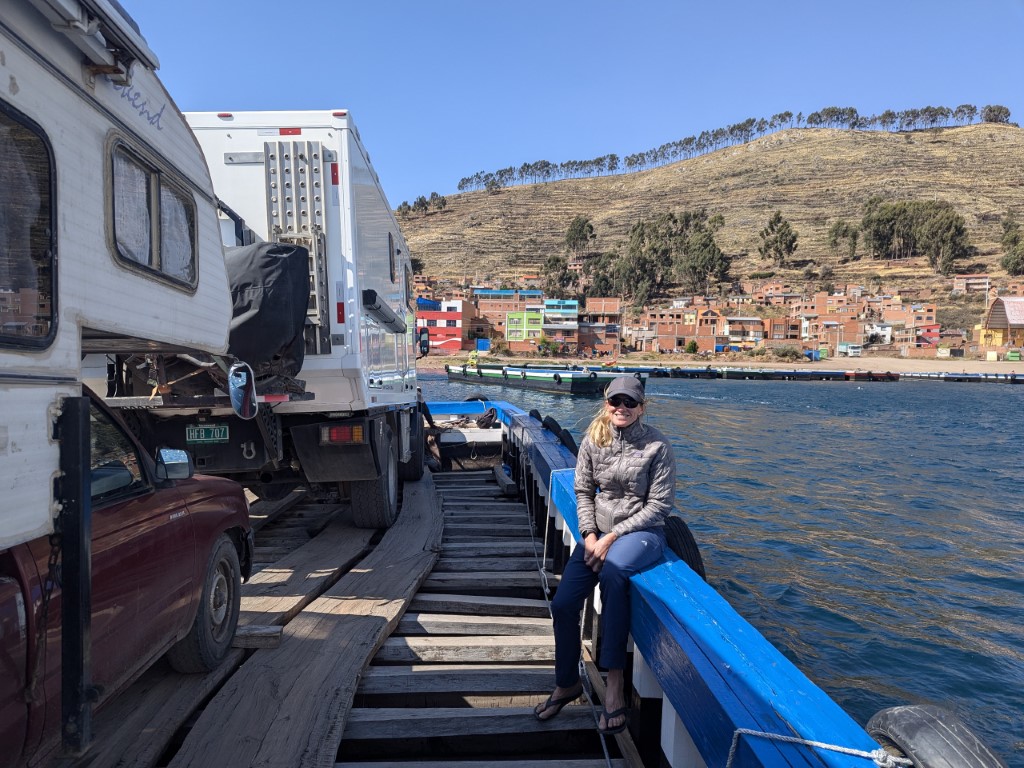

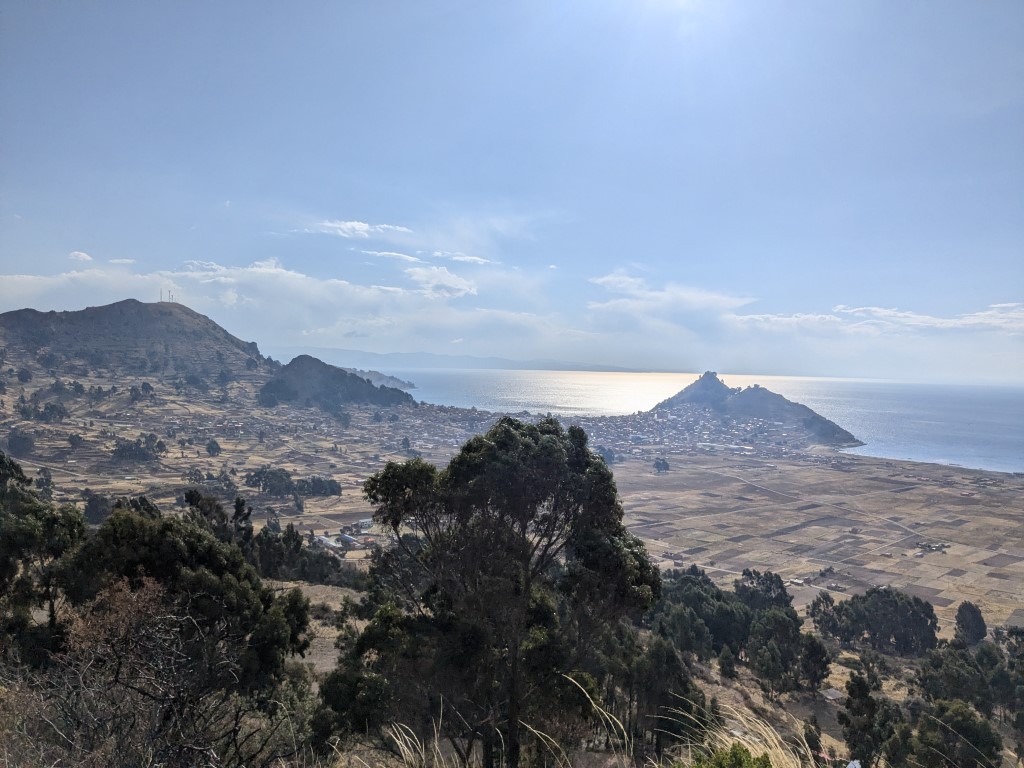
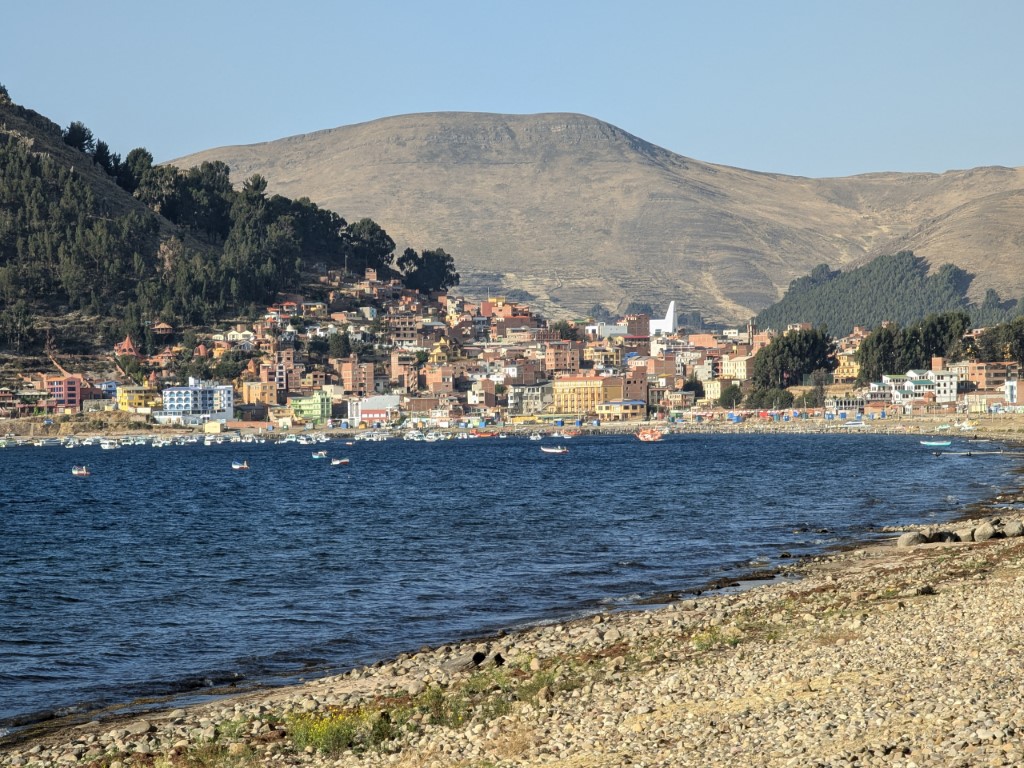
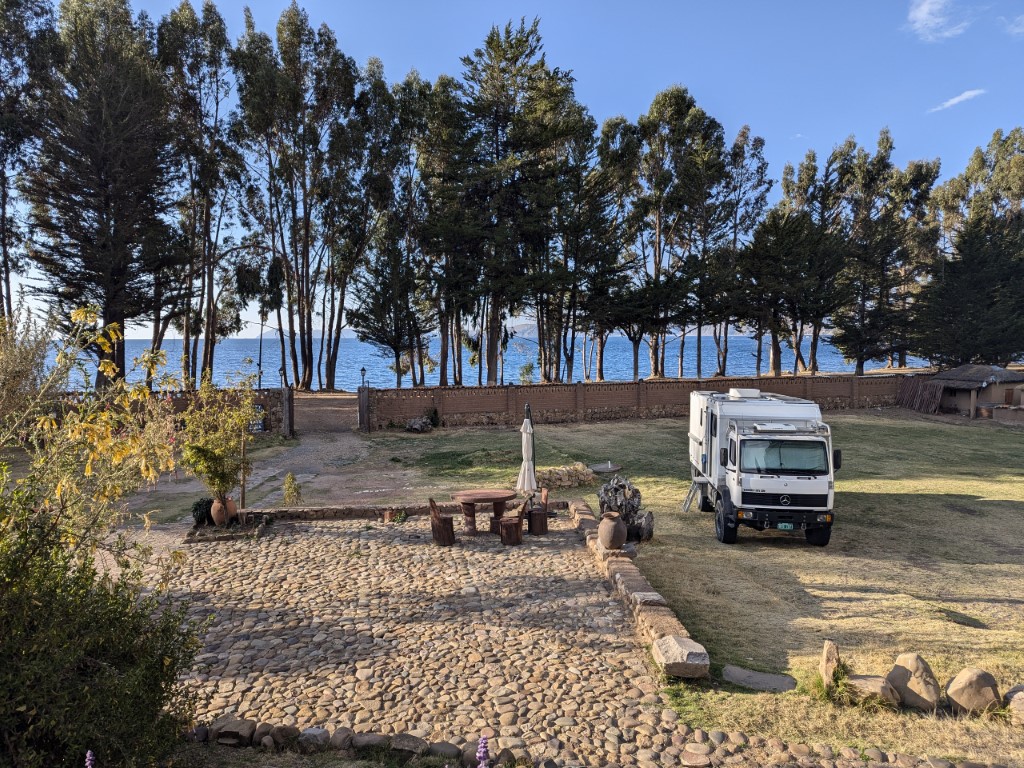
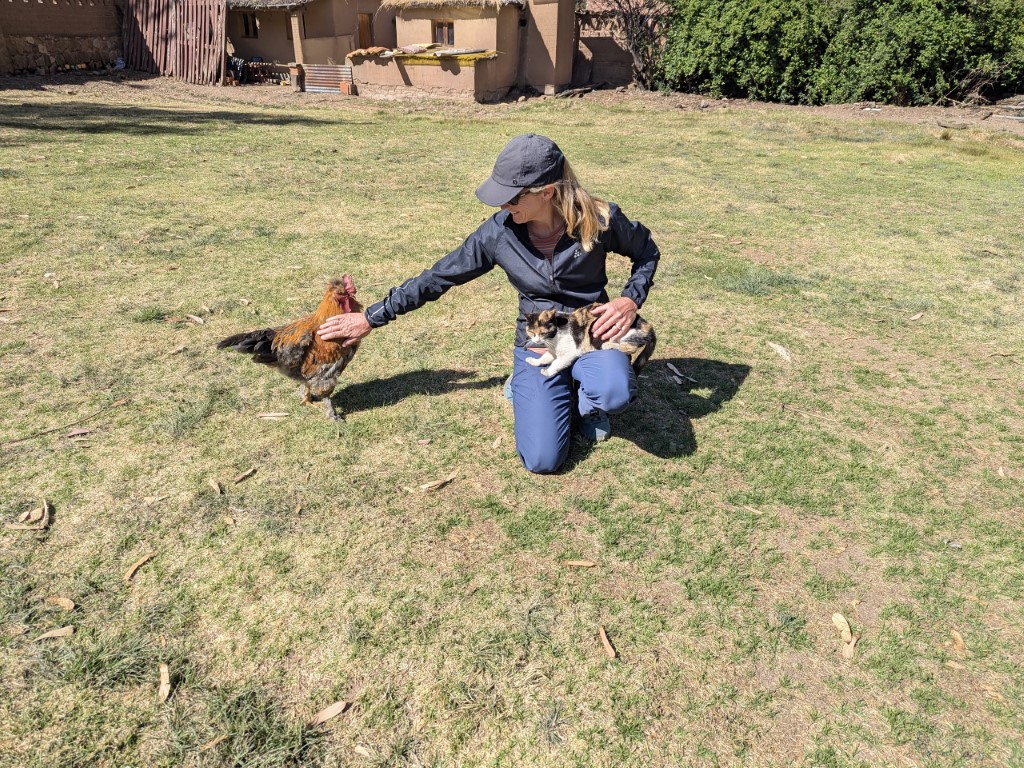
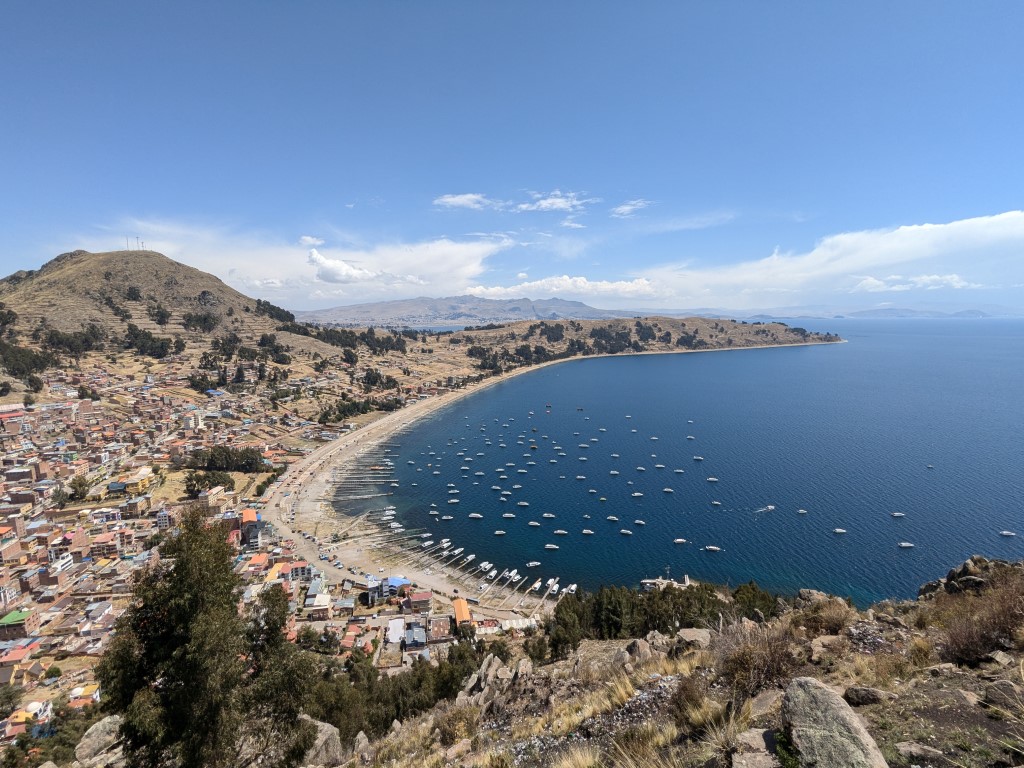
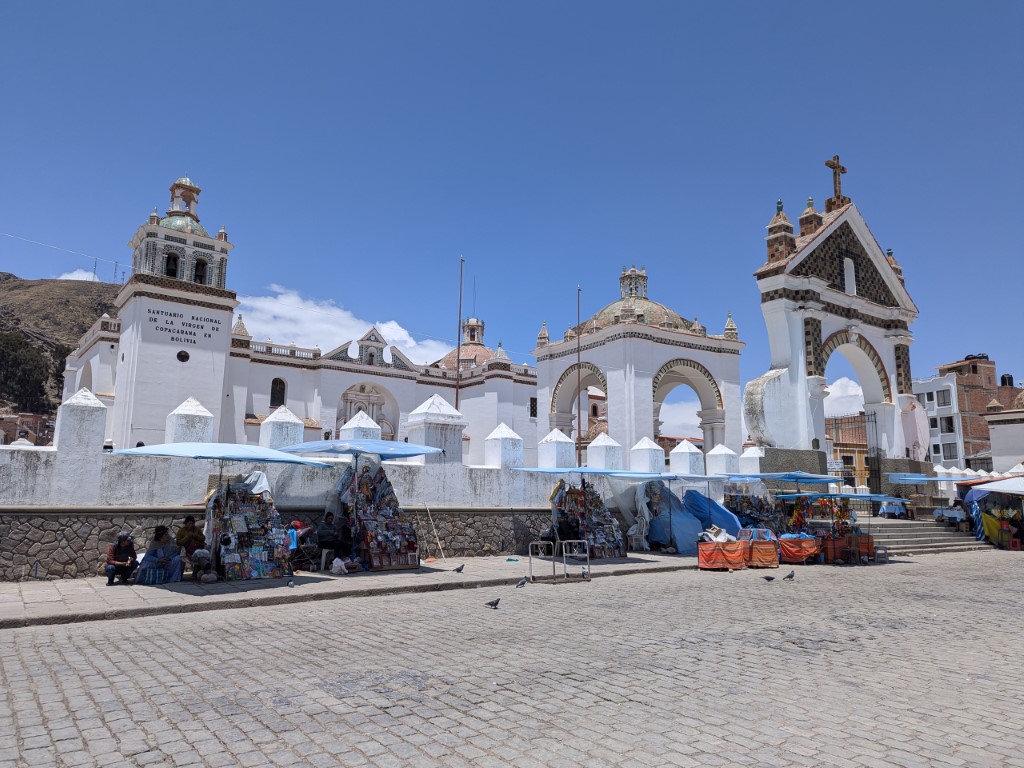
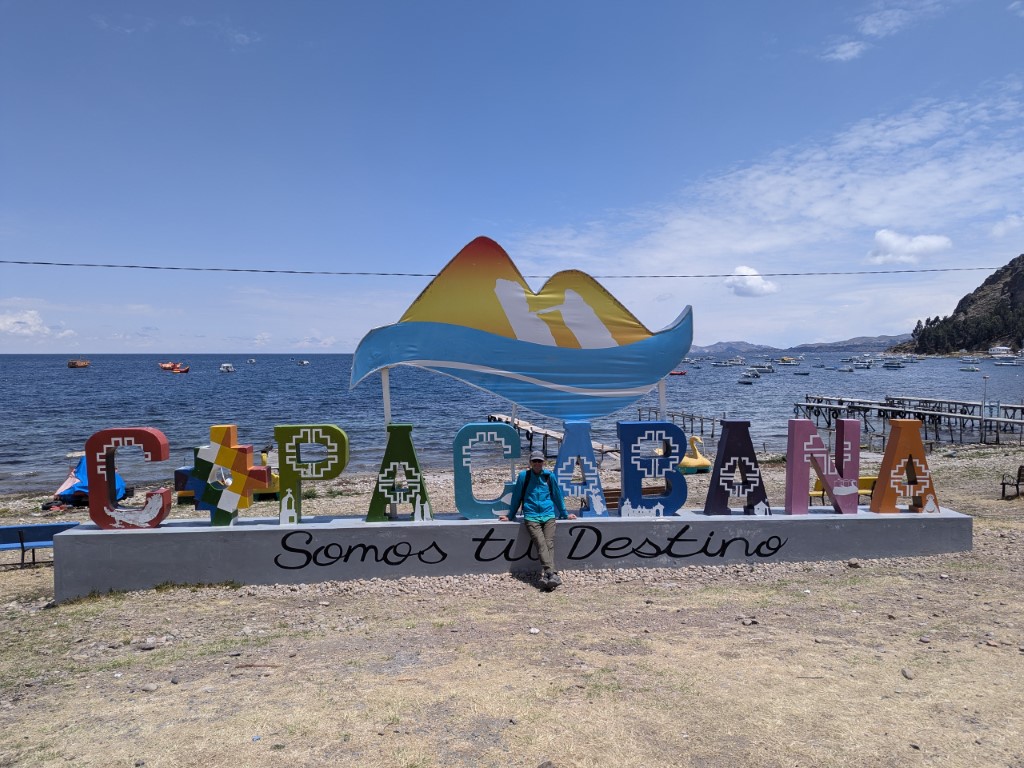
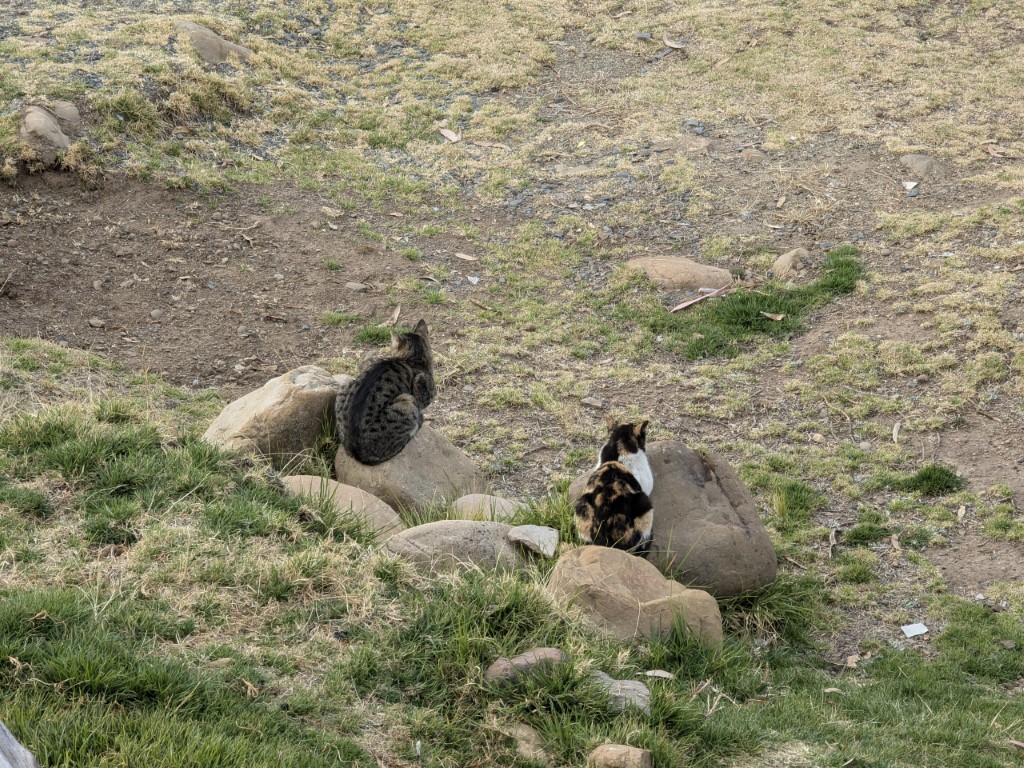
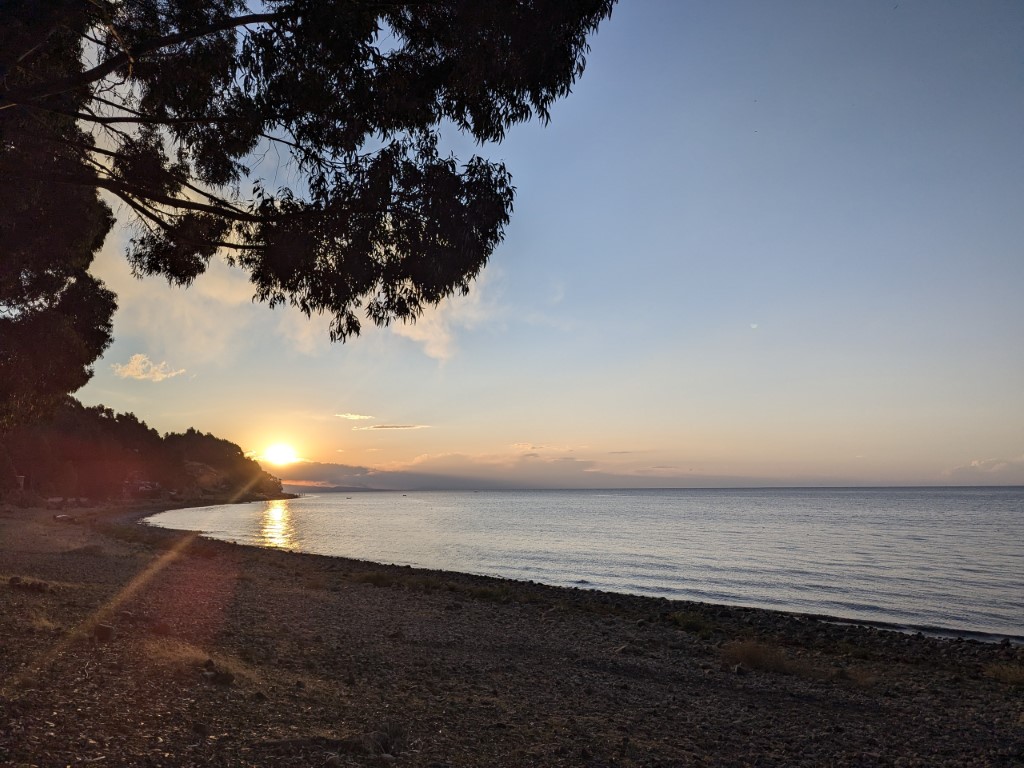
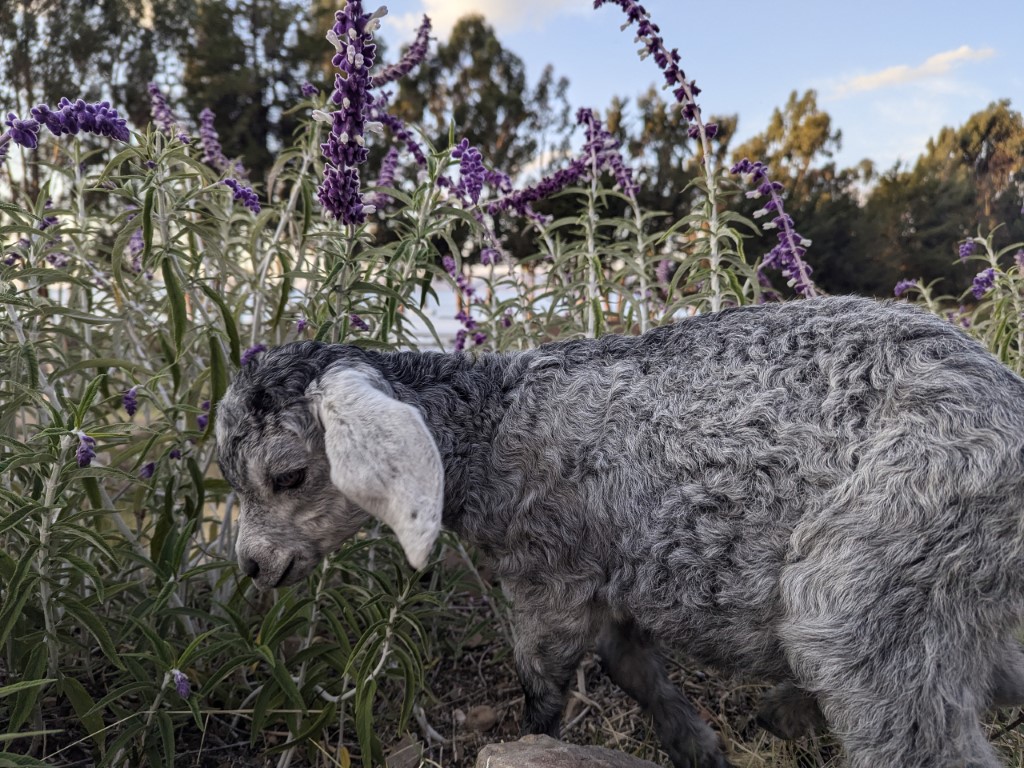
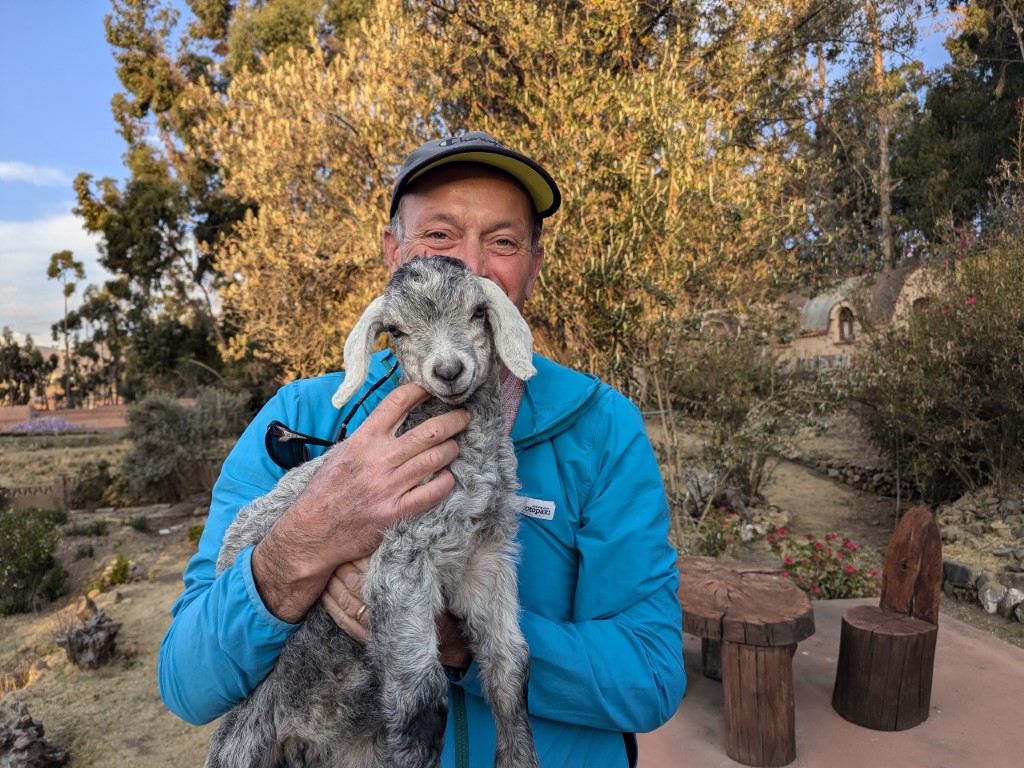
This place had all kinds of animals like baby goats, cats, a chicken and a rooster that didn’t mind being patted…. until he did. Then he pecked my hand to death. We sat outside for happy hour looking out to the lake and couldn’t remember the last time we’d gotten to do that.
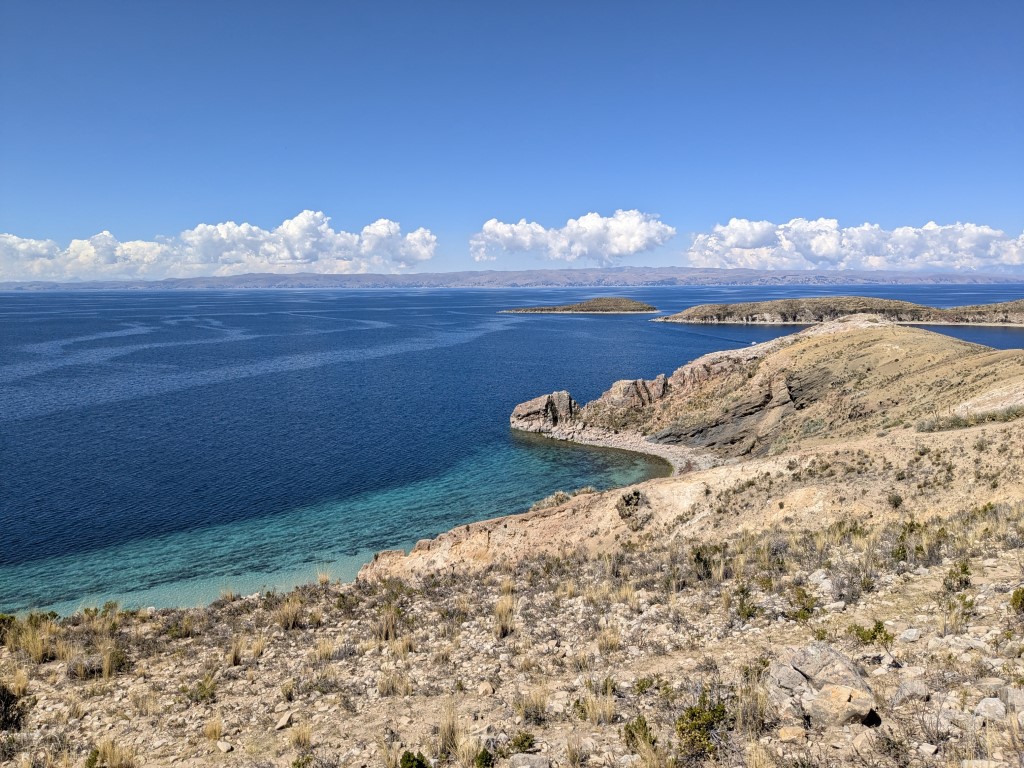
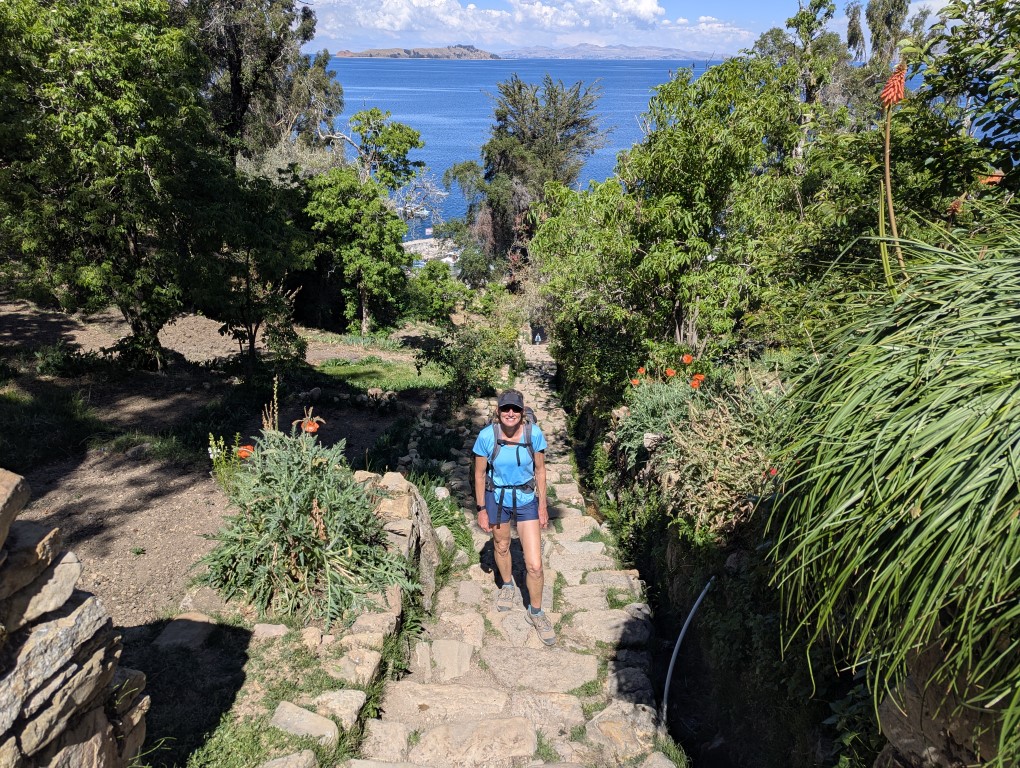
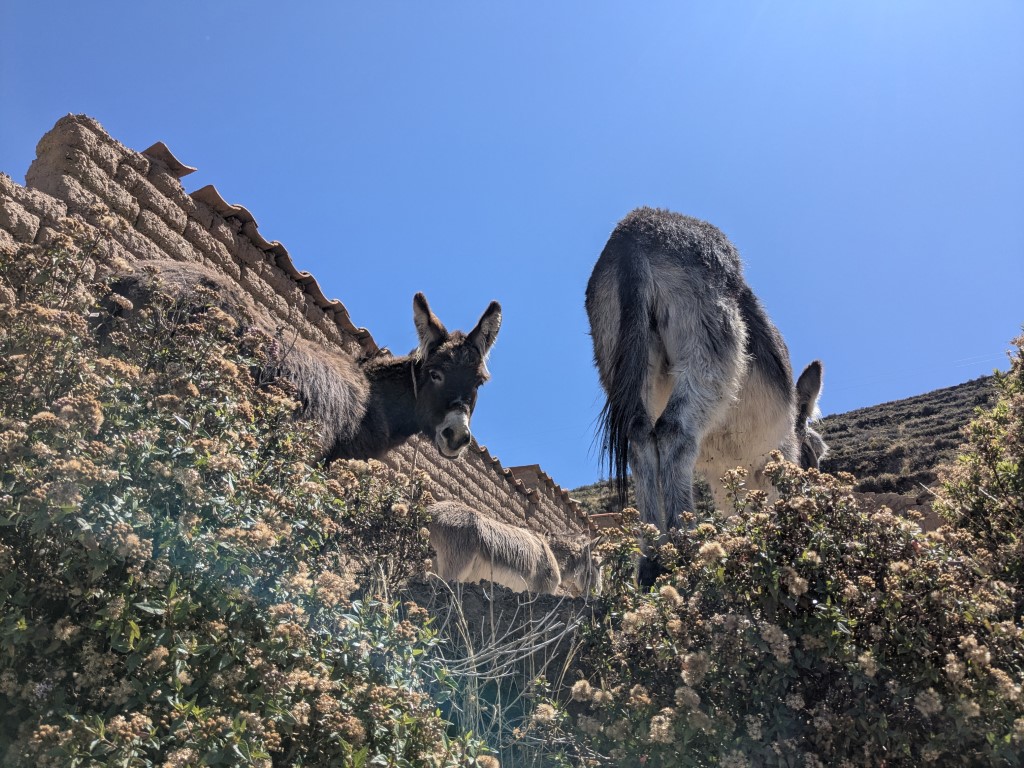
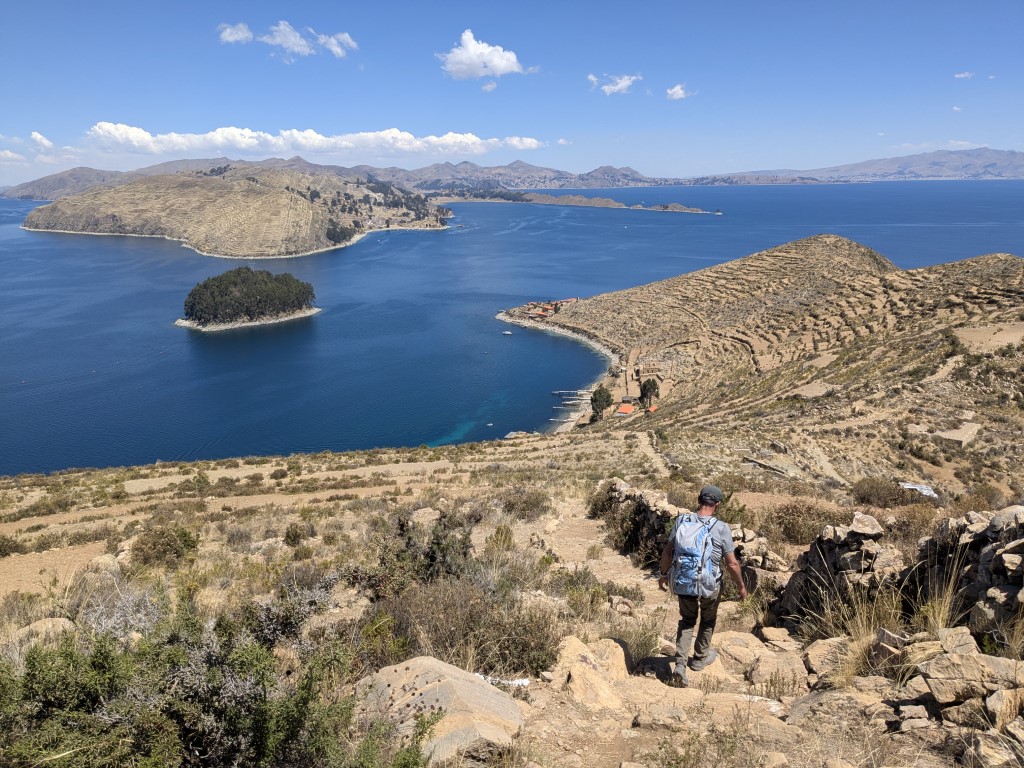
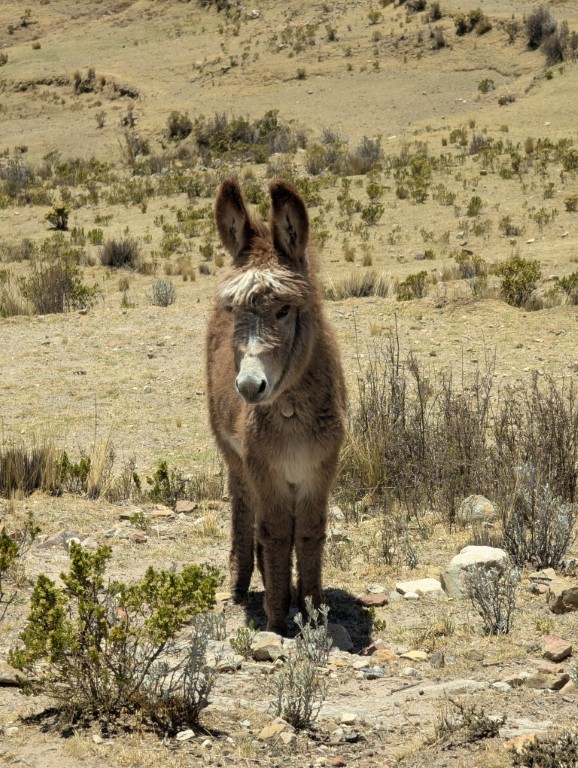
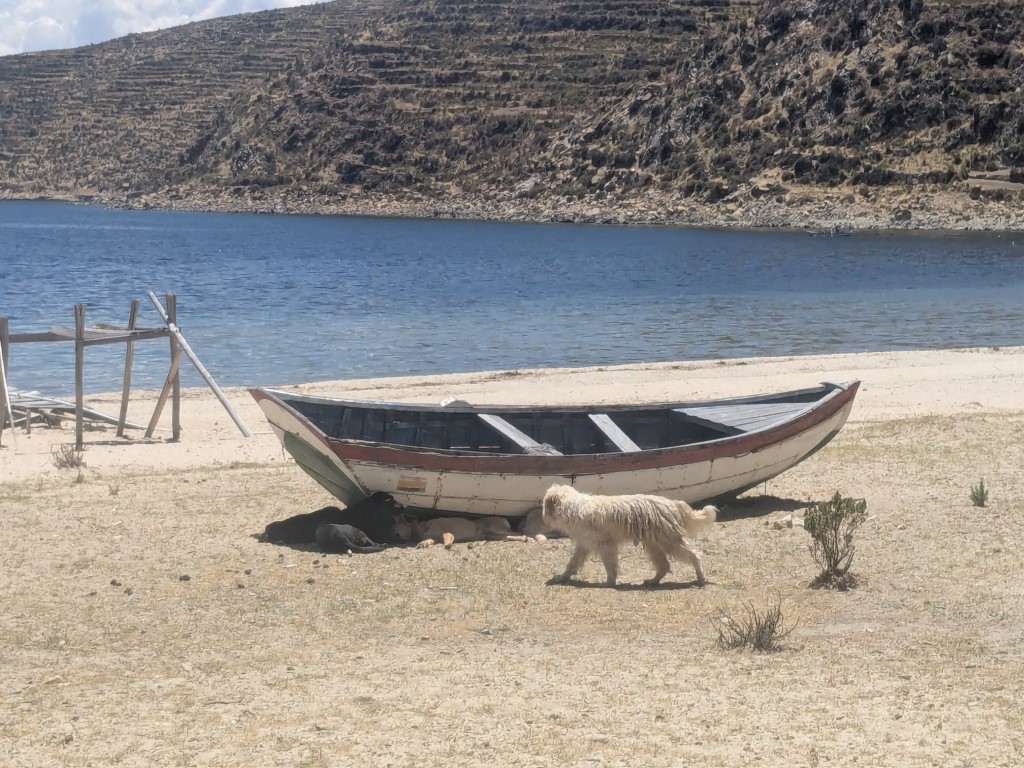
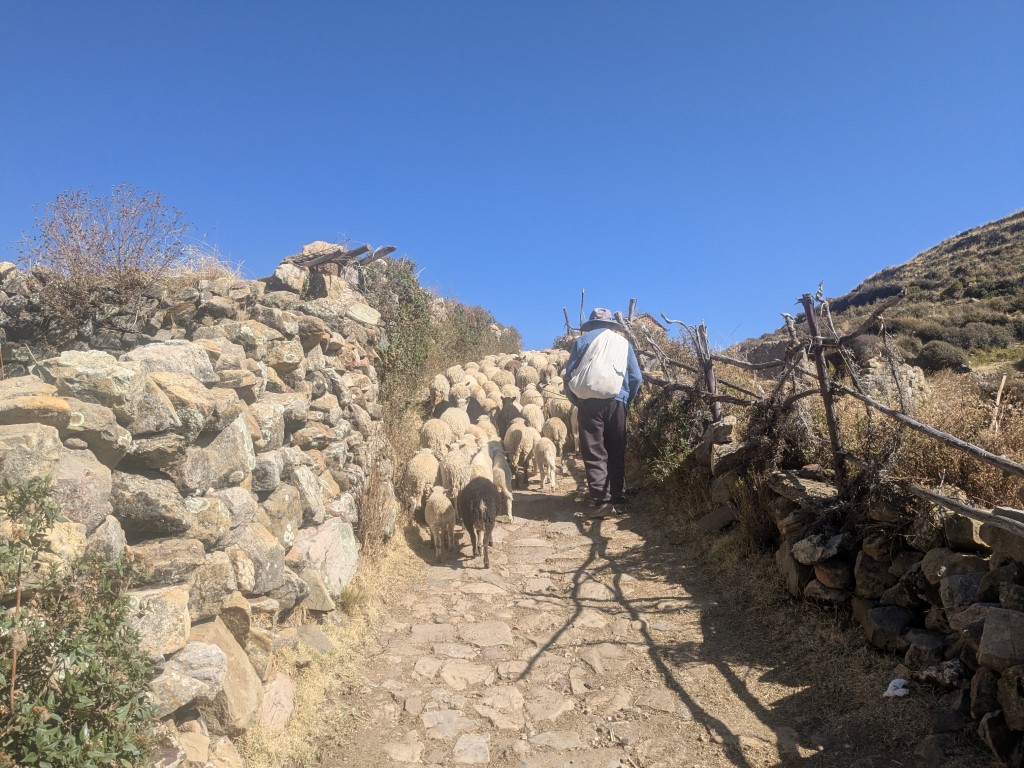
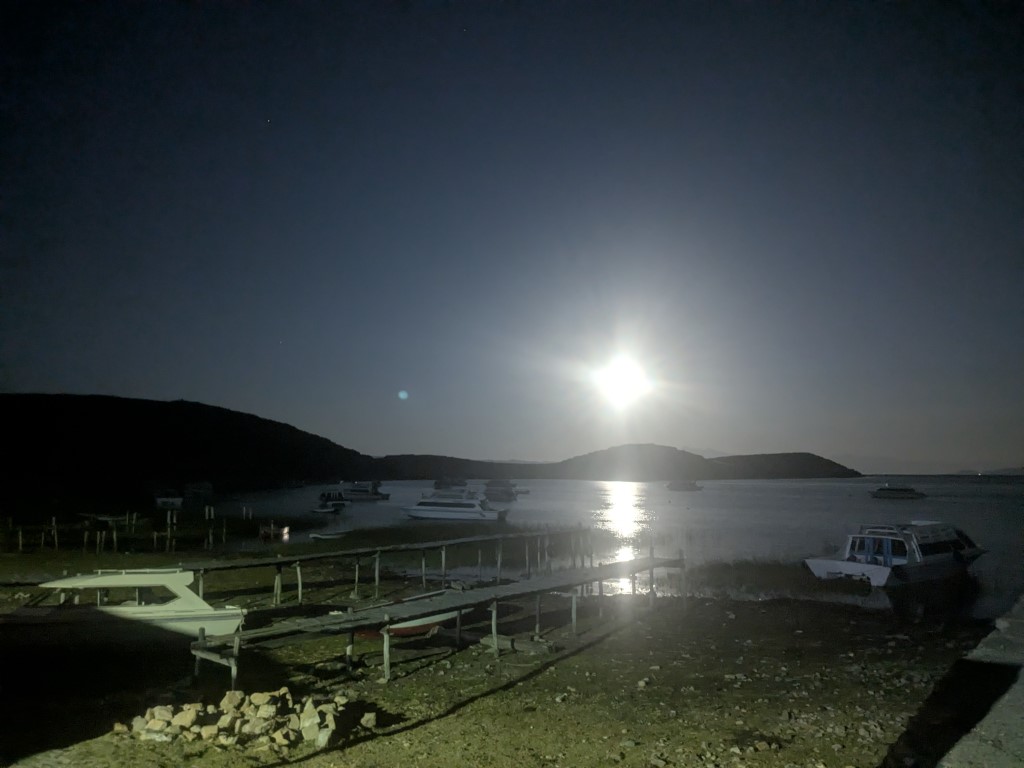
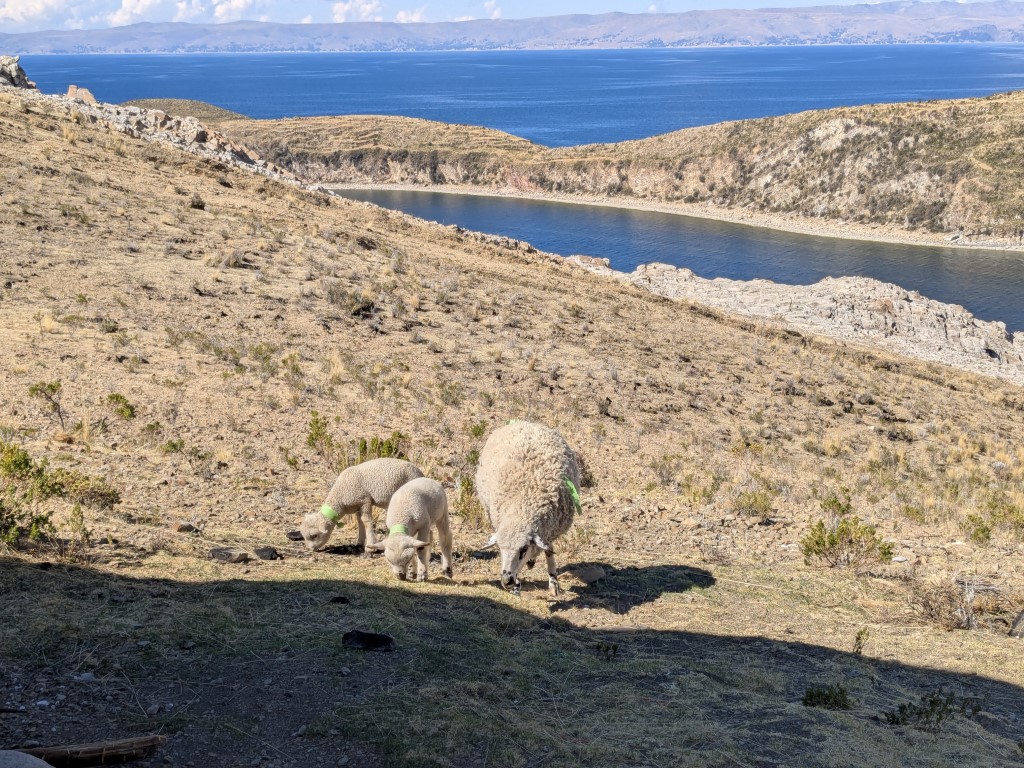
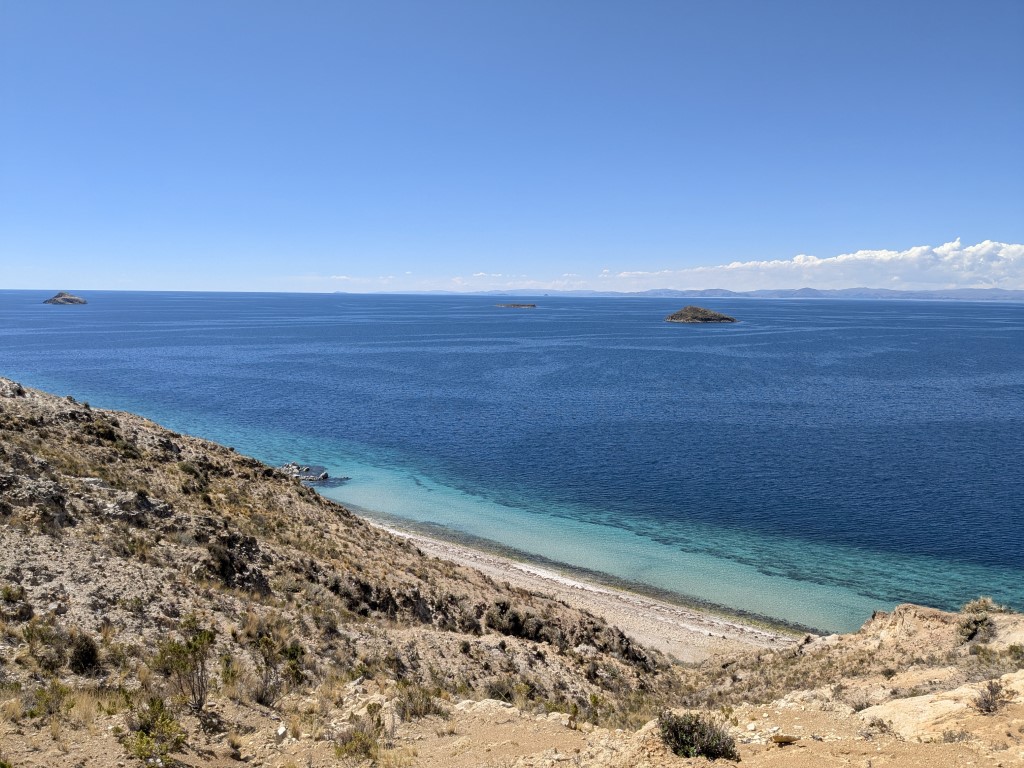
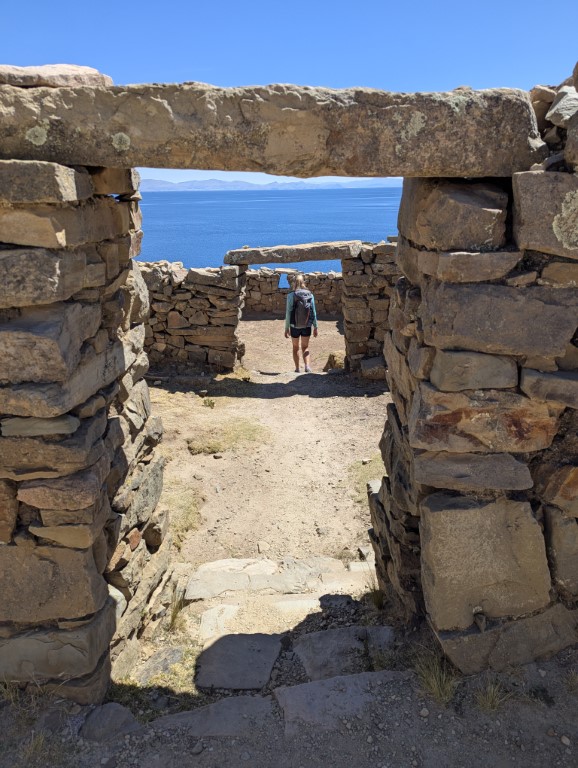
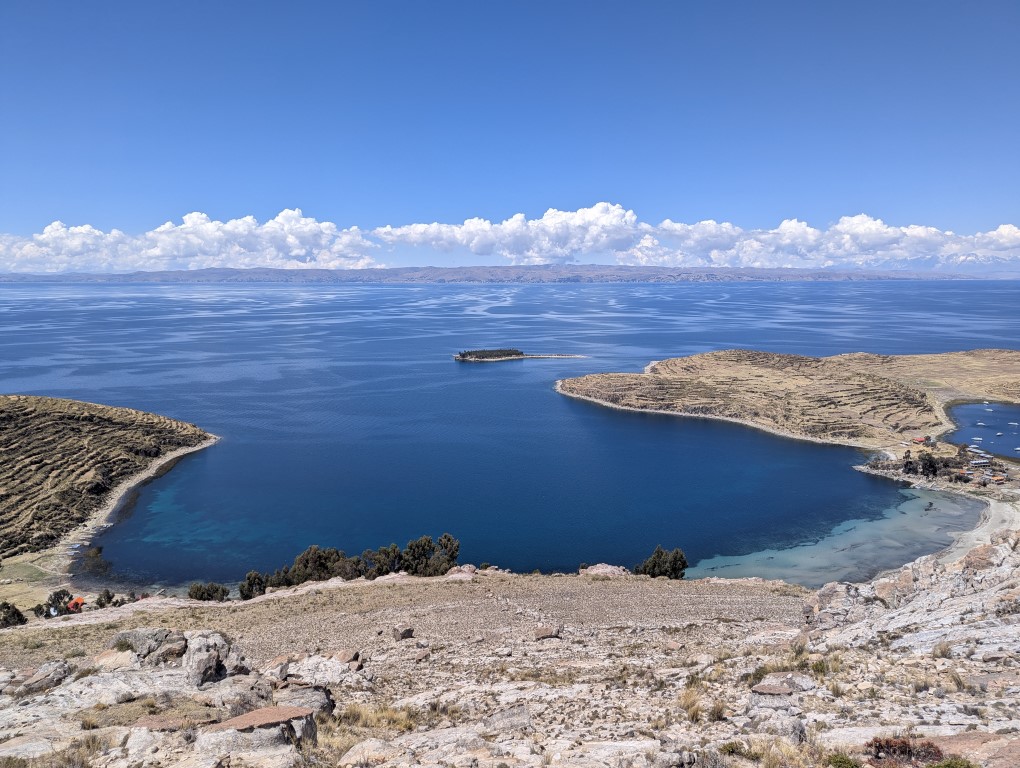
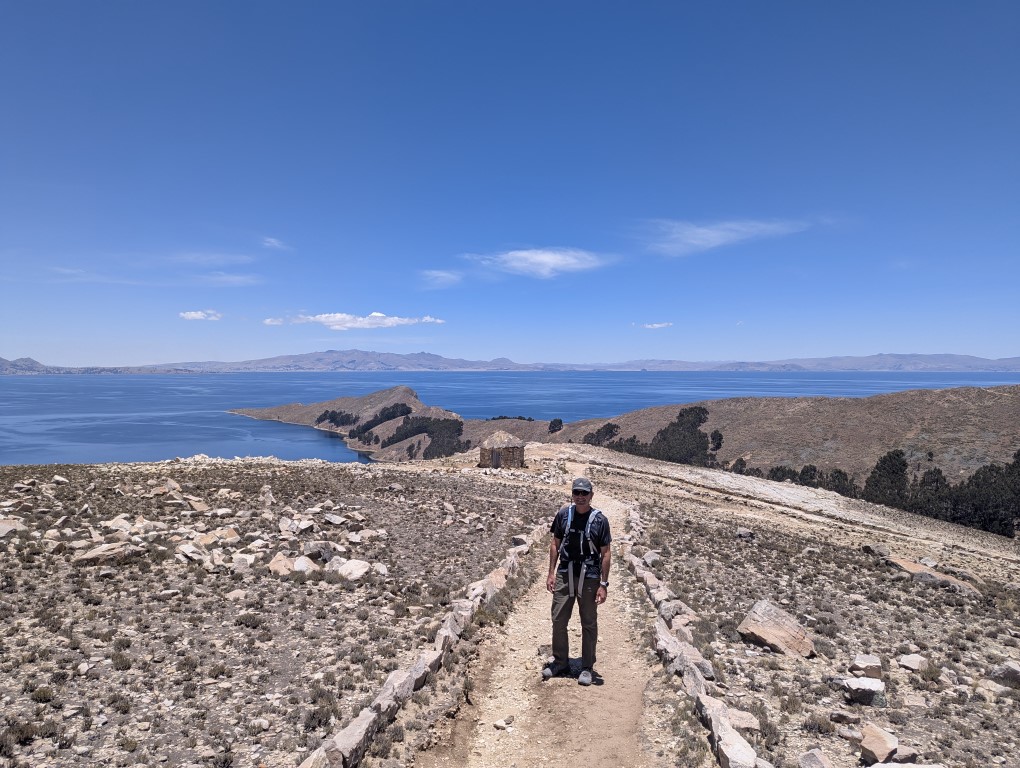
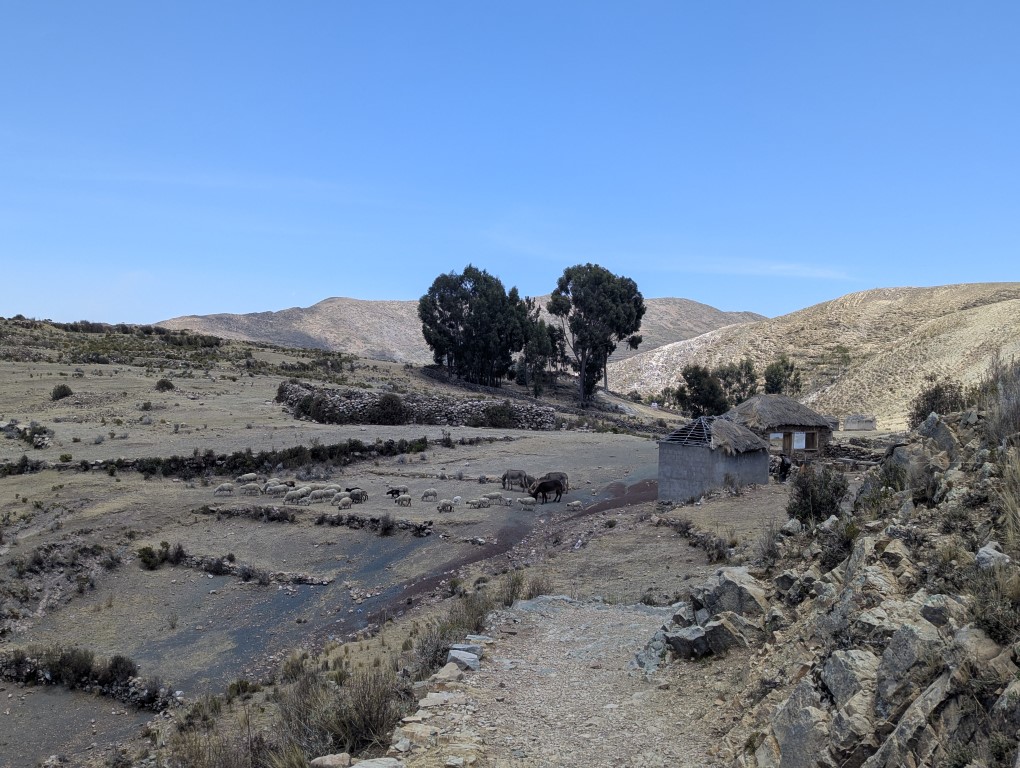

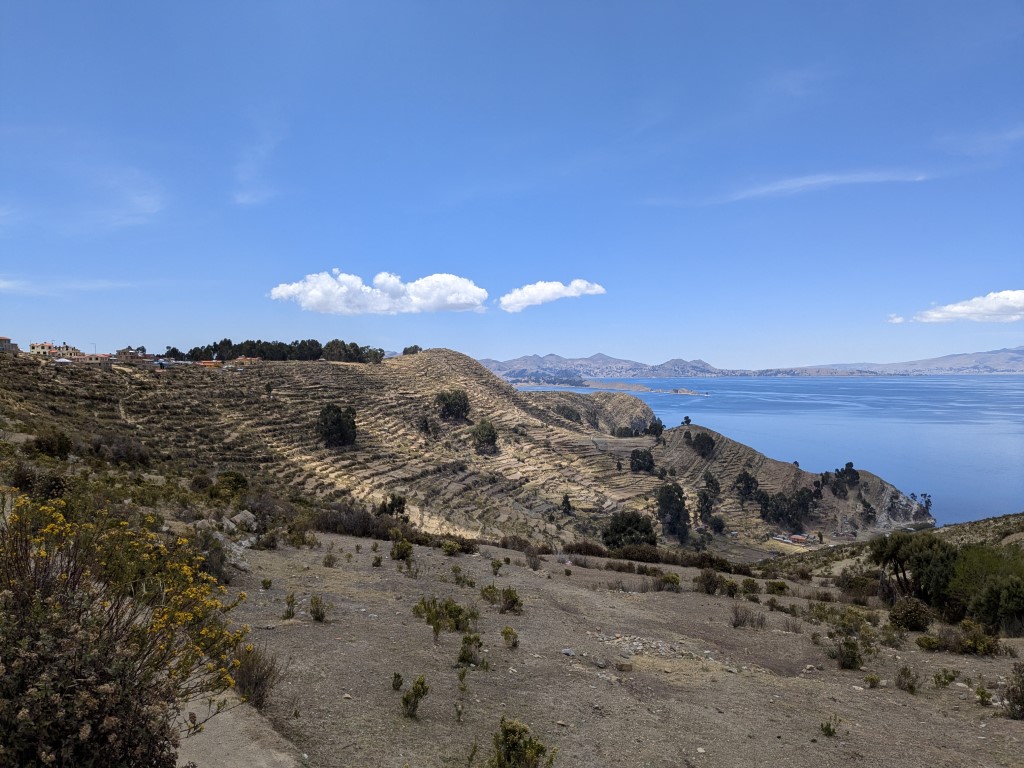
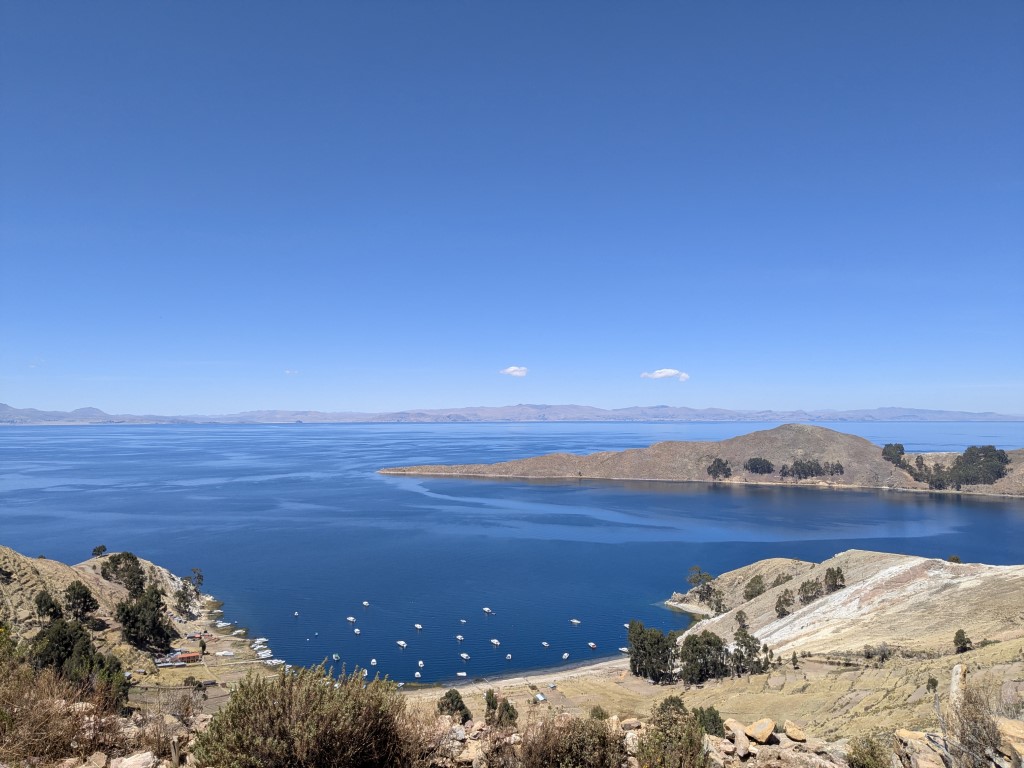
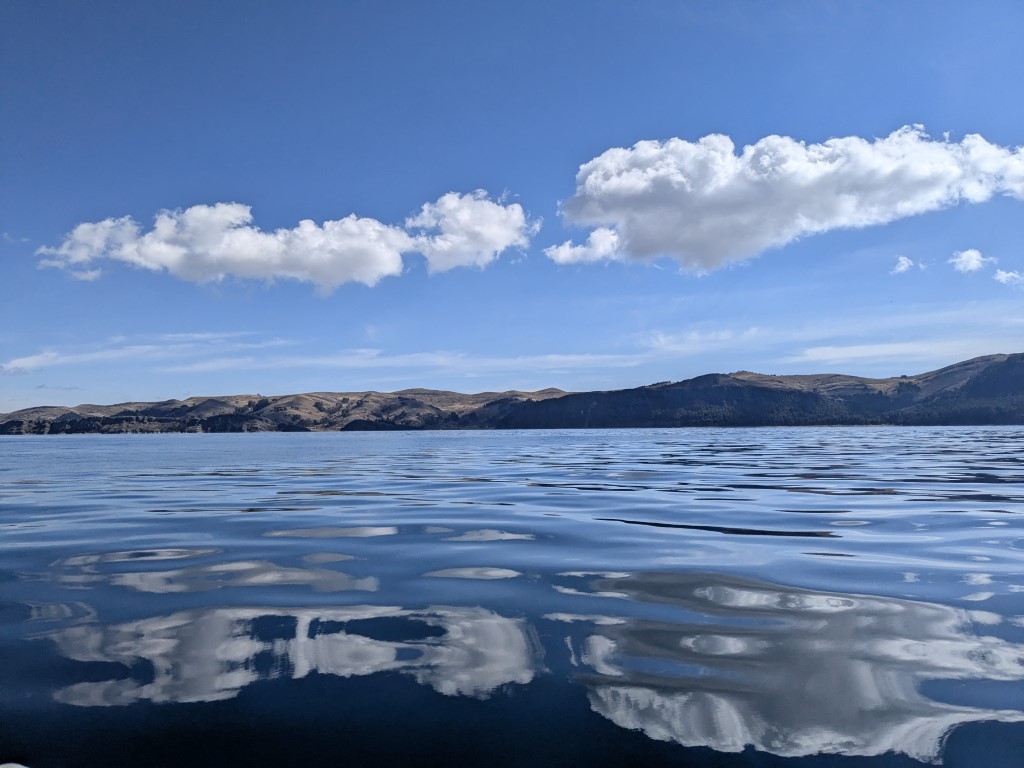
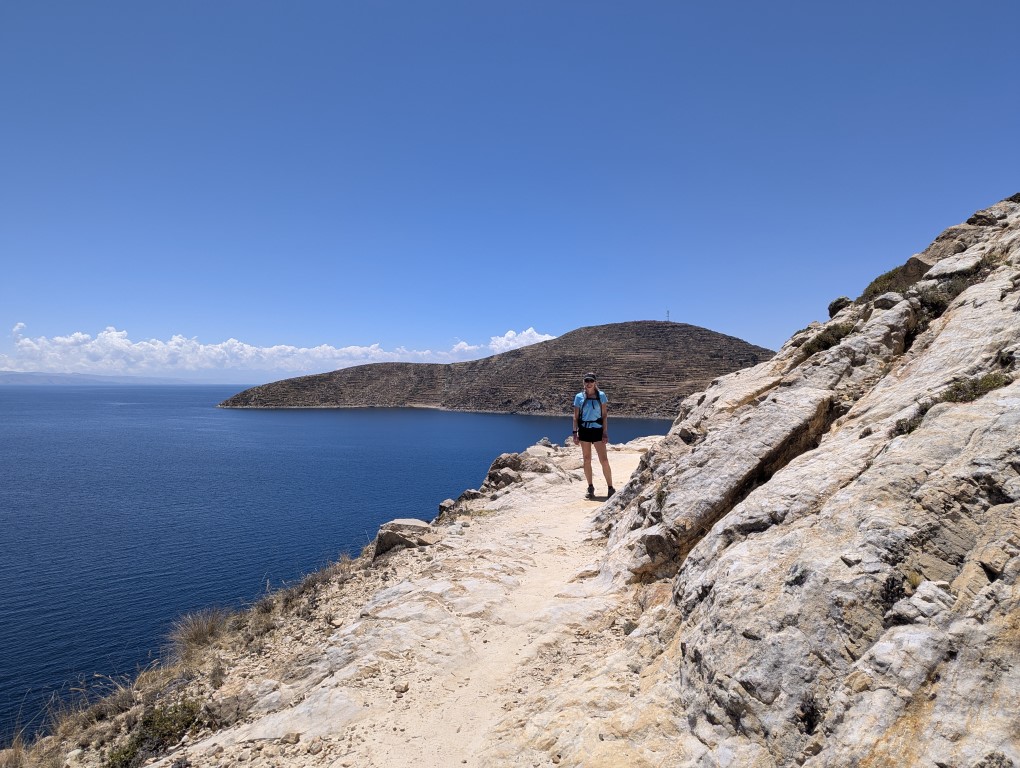
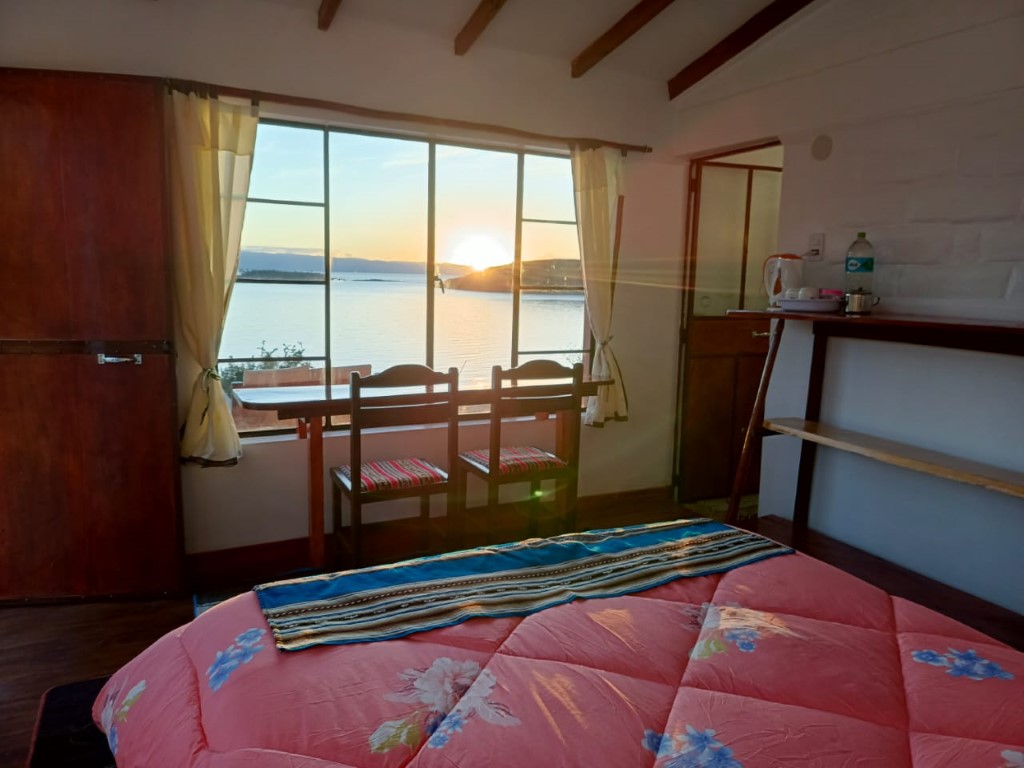
The following day, we toured the town of Copacabana some which is more picturesque from a distance than close up but what we were really there for was to take another ferry out to Isla Del Sol. This island is pedestrian only and you can land at the south end and then walk all day to the north end and get a hotel for the night. So we did just that. I love to put a pack on and have a destination and it was so nice to arrive at an island with a Mediterranean feel full of flowers, fragrant eucalyptus trees, terraced farm plots and pretty views. I had been really excited to swim in lake Titicaca but over time I realized that this lake is used for many things. Boats ply the waters, many people live along it’s shores, on the Peruvian side, there are hundreds that live on reed islands on the lake, they farm trout on this lake, many people do their laundry in the lake…. so better to stay out of it I think!
So we enjoyed hiking all over it, staying in our cute little place, going out to dinner that eve and walking back to our place by moonlight. Then we hiked back across it and took the ferry the next day.
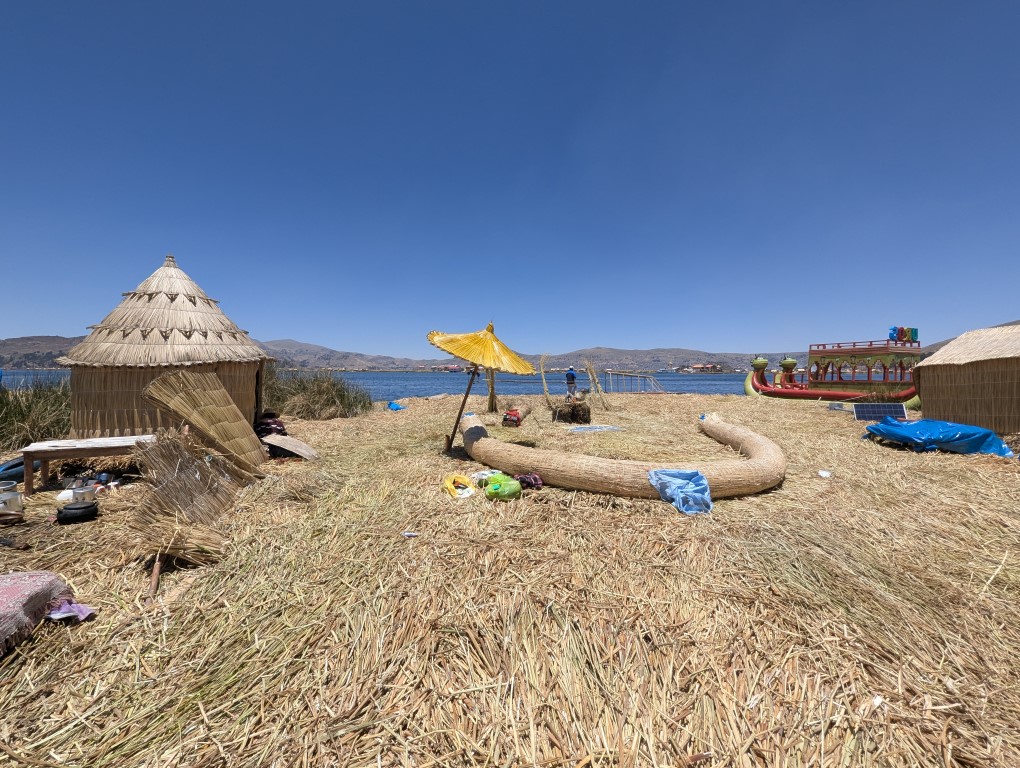
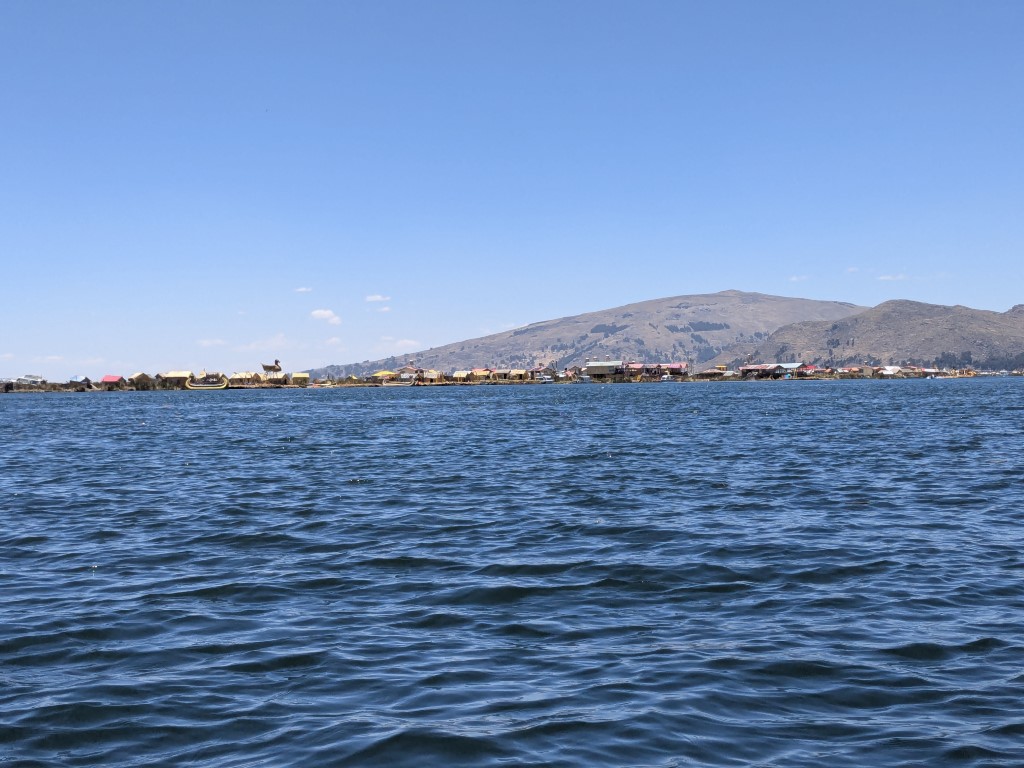
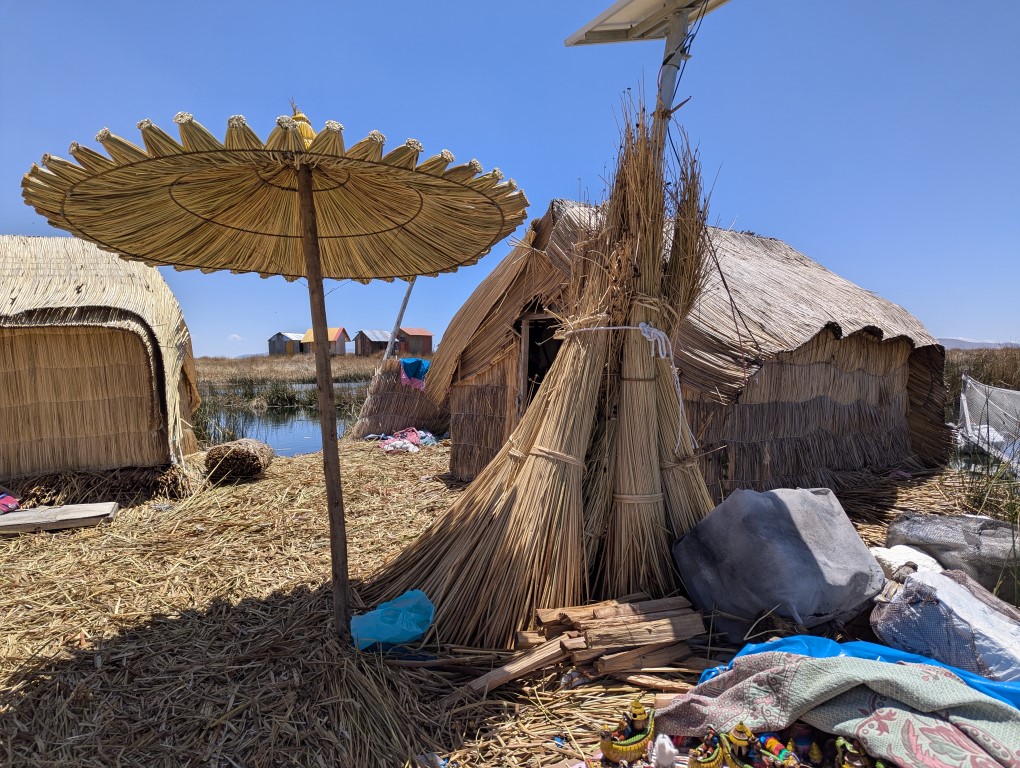
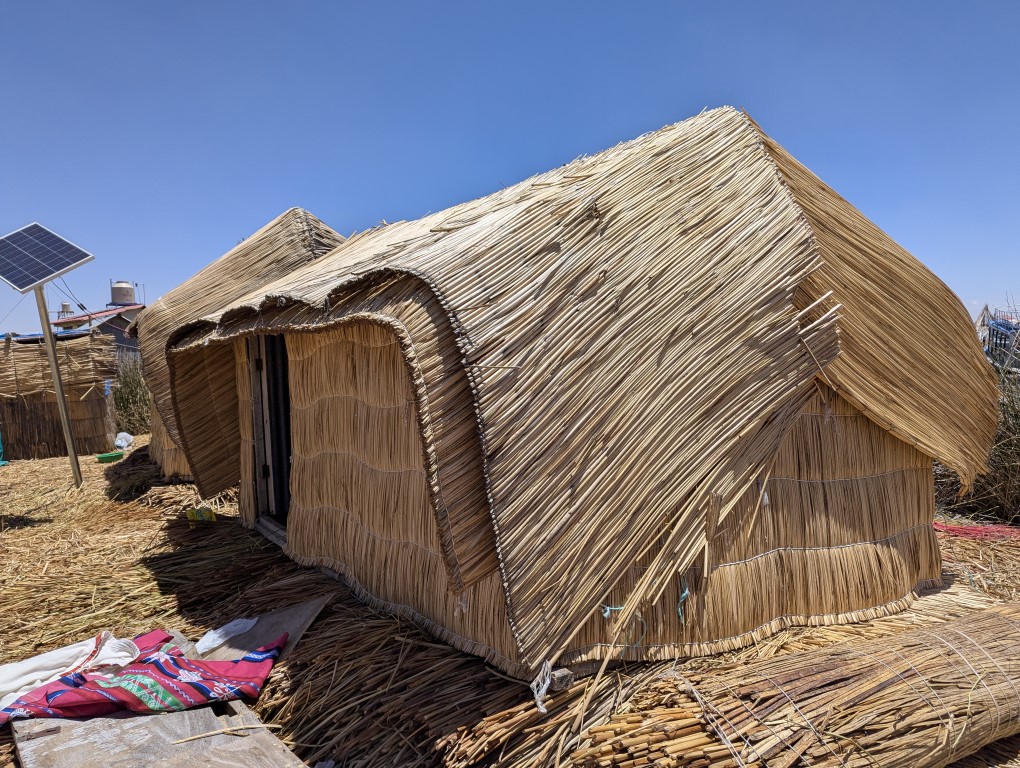
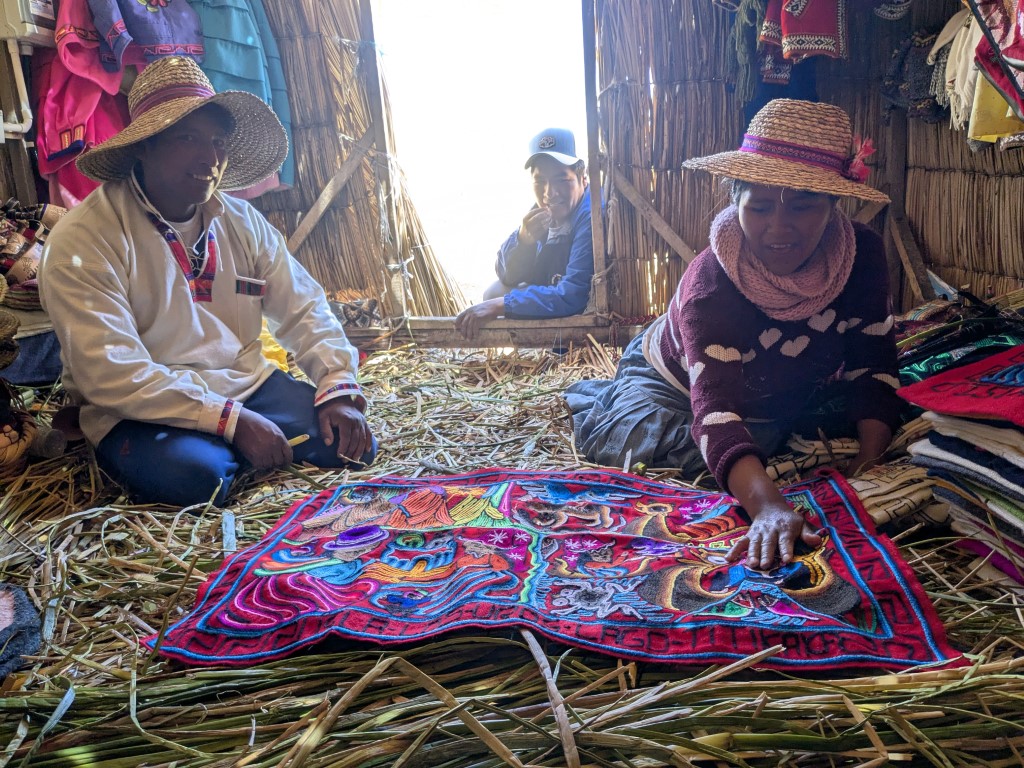
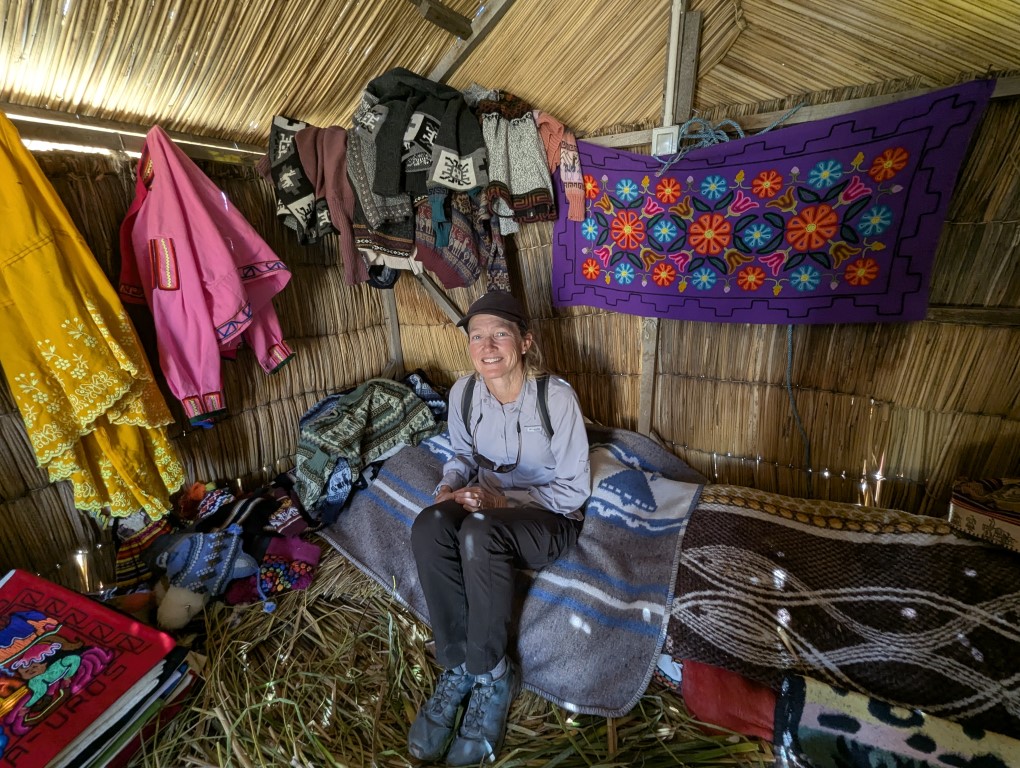
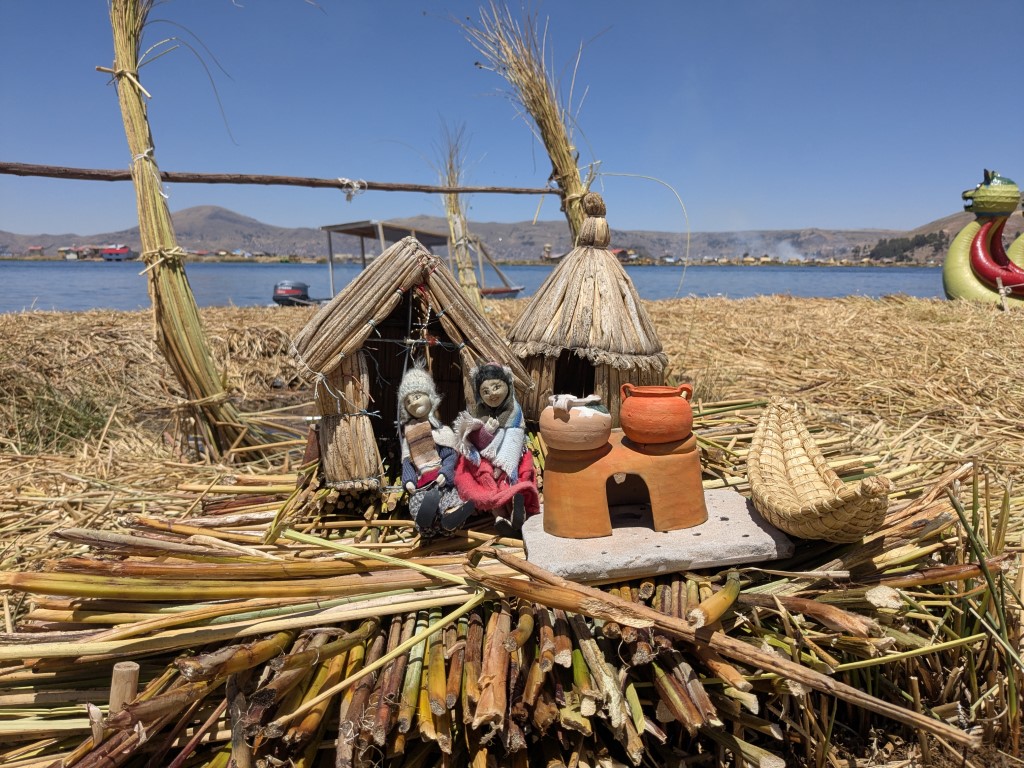
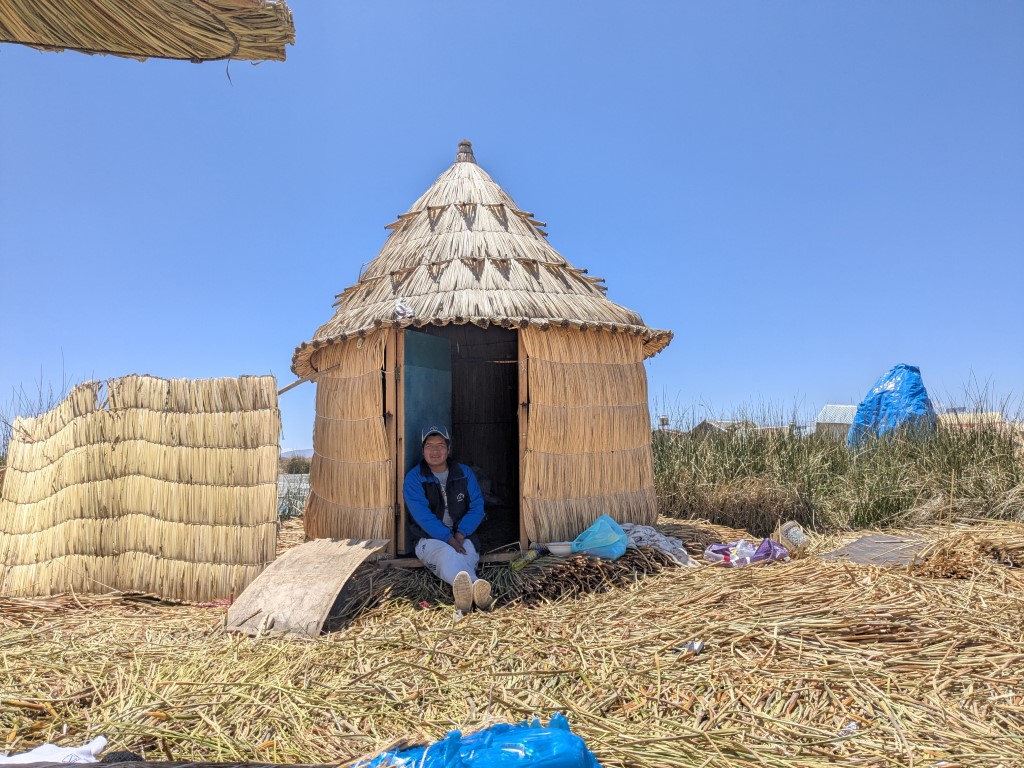
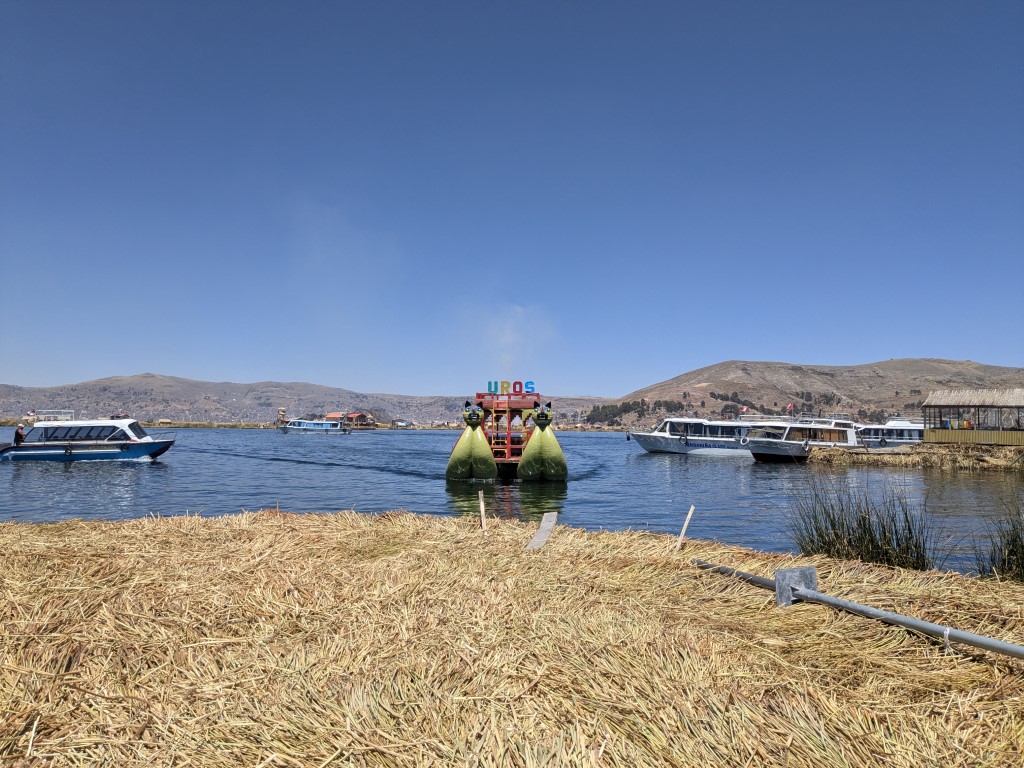
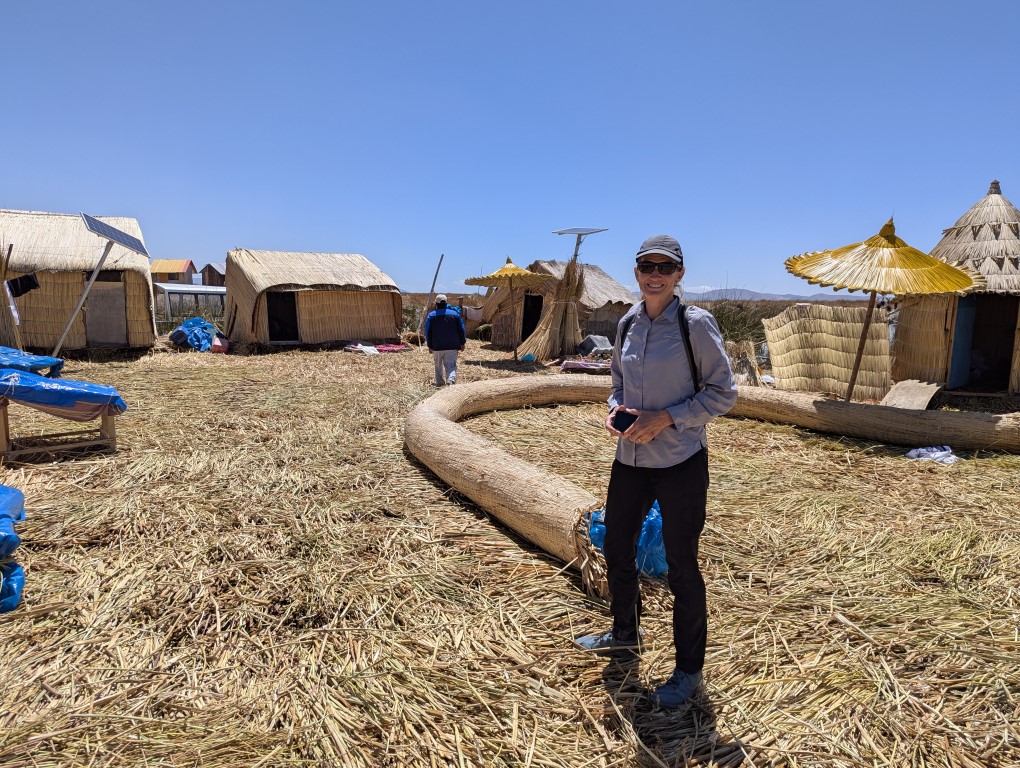
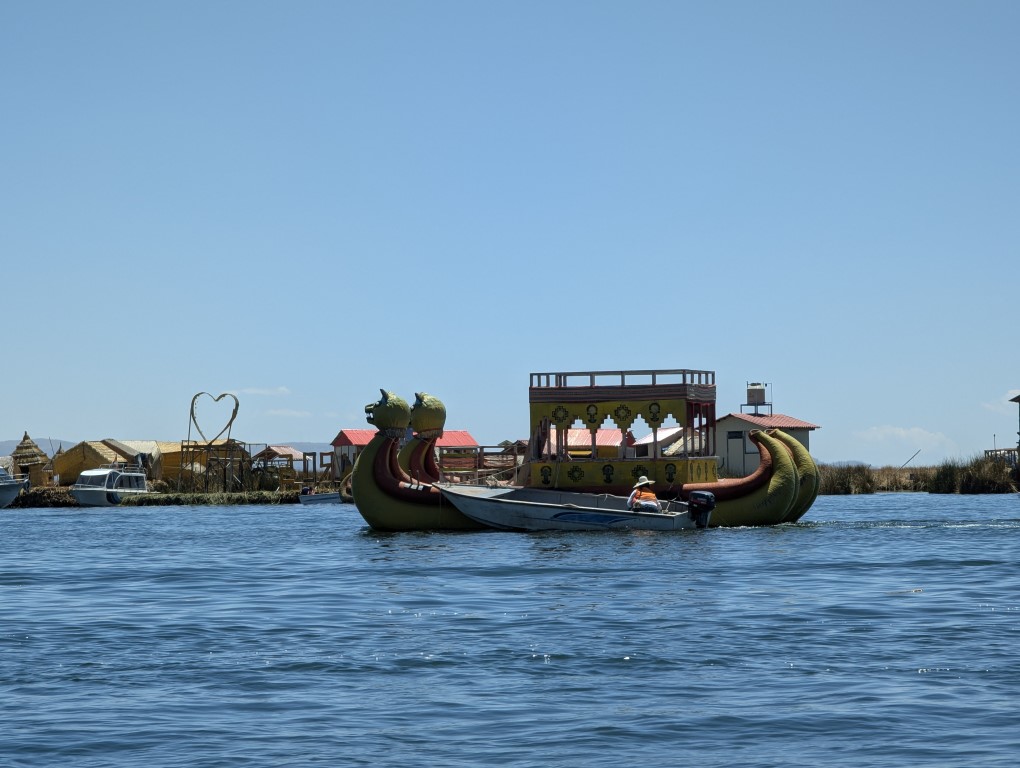
Ivan was waiting for us on the Peru side of the lake in the city of Puno so we got going early to cross the border to meet him. We used the rest of our Bolivianos to buy some expensive fuel and said goodbye to Bolivia for now. We loved the things we did there but wish that getting fuel wasn’t an issue because it’s a stressor that no overlander wants to put up with for long. It seemed to take forever to get through the border and even though everyone was very polite, you can’t help but wonder why people make things so complicated. But that is a universal experience.
It was great to park beside Ivan again even if it is for the short term. While we knew it would be a tourist trap, we felt obliged to visit the reed islands of Uros because that is what you do on Lake Titicaca. We set up a brief tour for the following morning. We walked out to the mud docking area for the little tour skiffs and were brought to the reed raft of one of the many families that live out on the lake. It is truly a whole society out there living on floating grass called totora. Probably the poorer of the citizens in the area, they mostly make their living now bringing tourists out to see how they live. They have to diligently work to replenish the reeds that their homes sit on and to stitch crafts to sell. The whole scene reminded me a lot of the San Blas islands and it didn’t take long for us to realize that the faster we bought some pillow covers, the faster we could get back on the skiff. Touring around the rest of the flotilla of families, we could see a lot of creatures made of reed along with their large reed rafts that tourists can also go out on. It was interesting to finally see this popular spot and now we have pillow covers to add to our mola collection in storage.
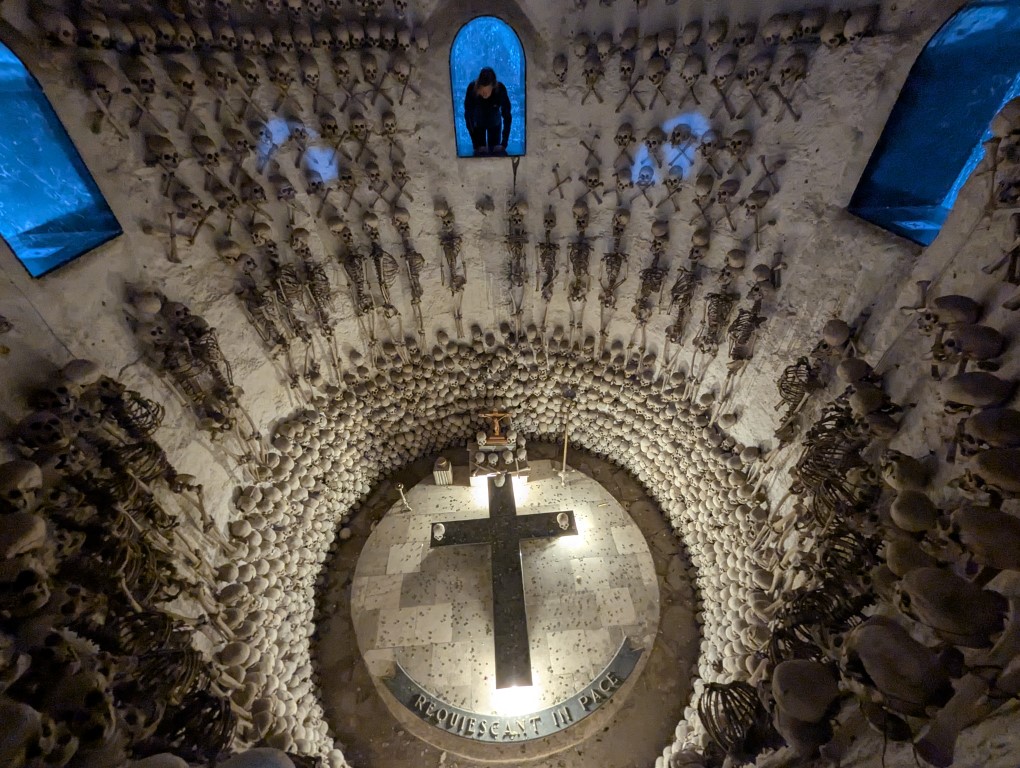
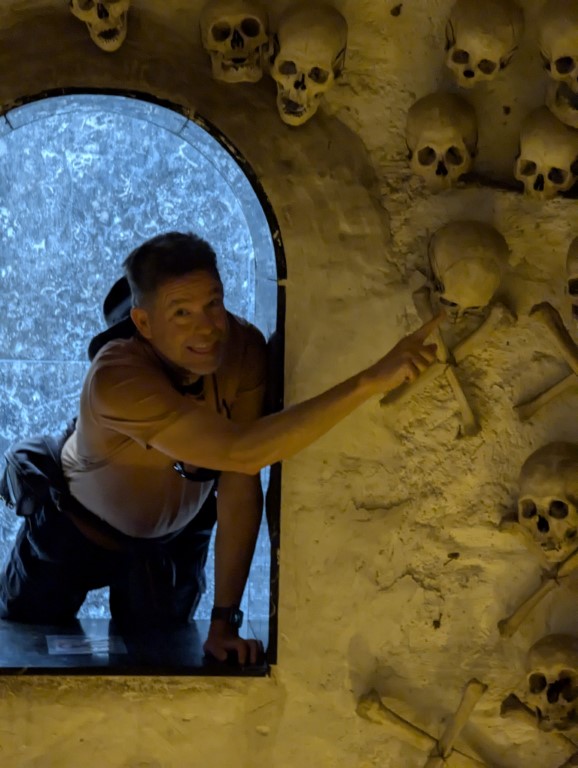
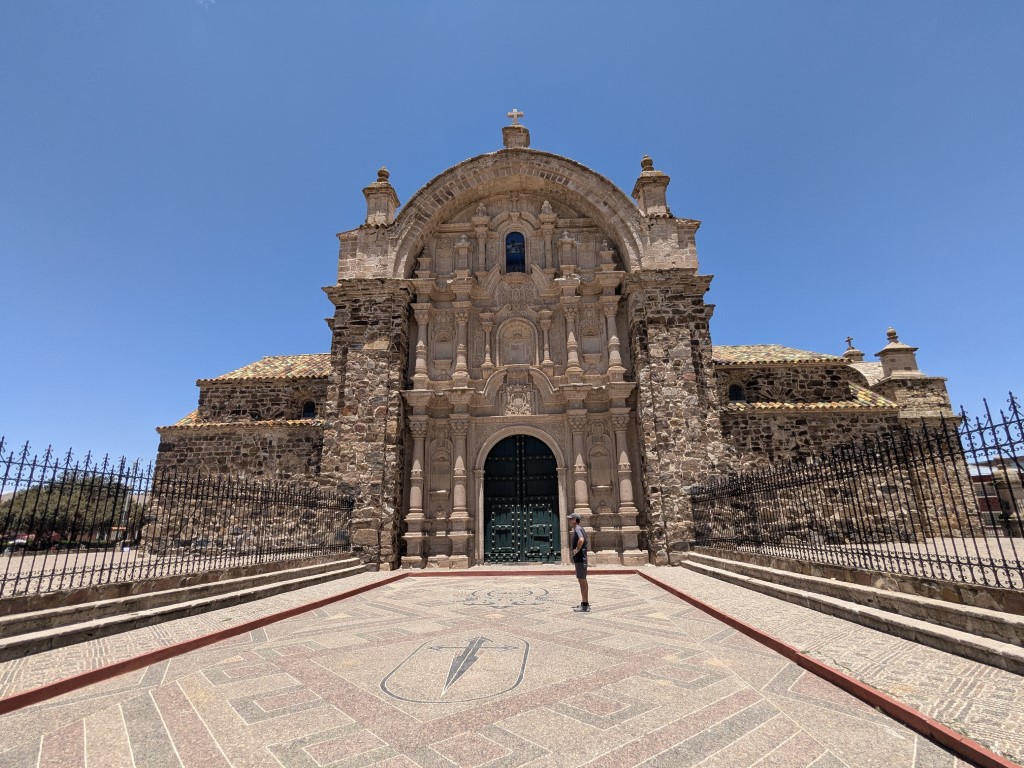
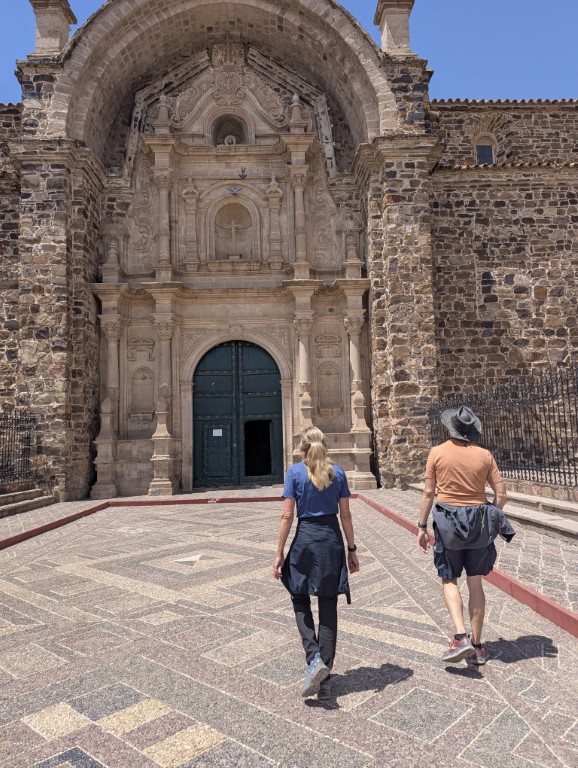
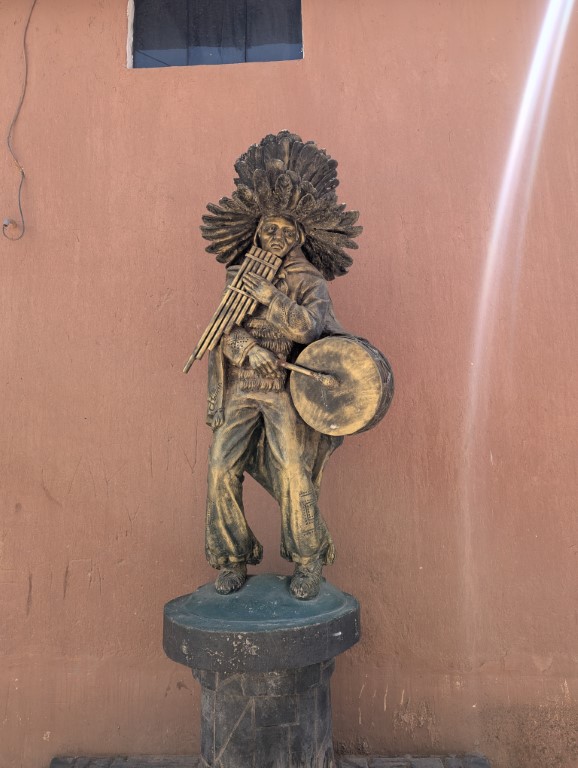
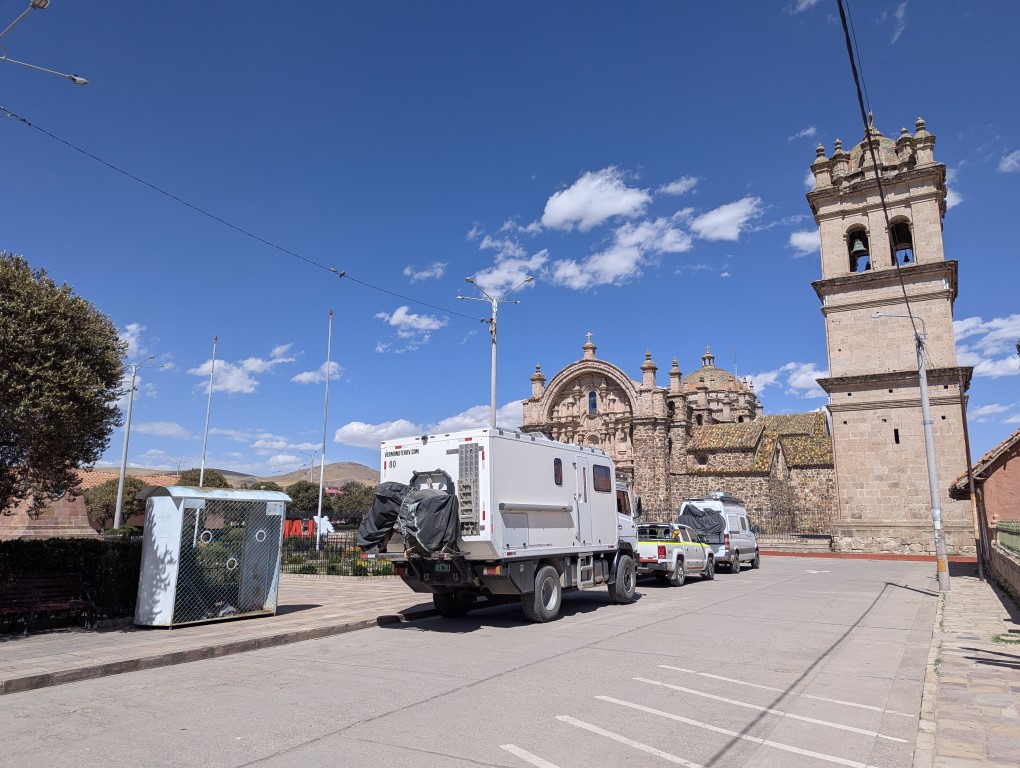
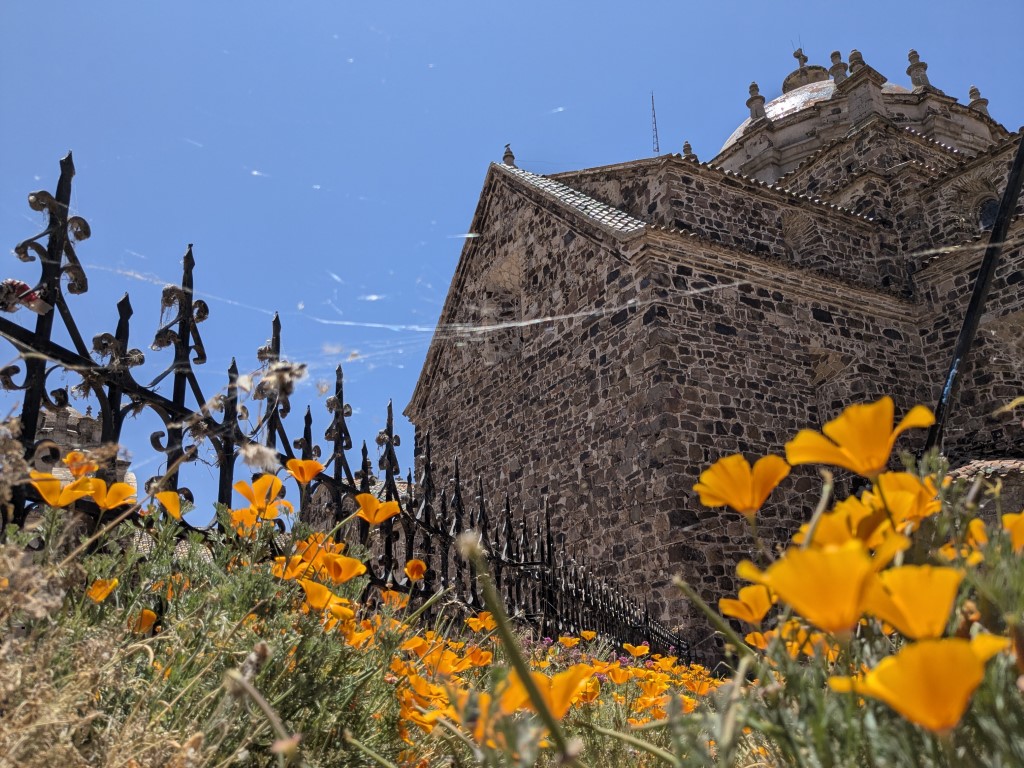
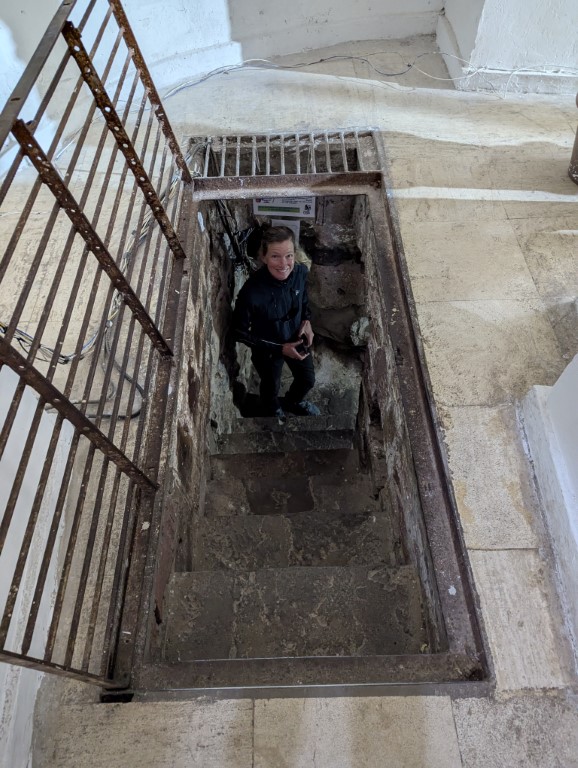
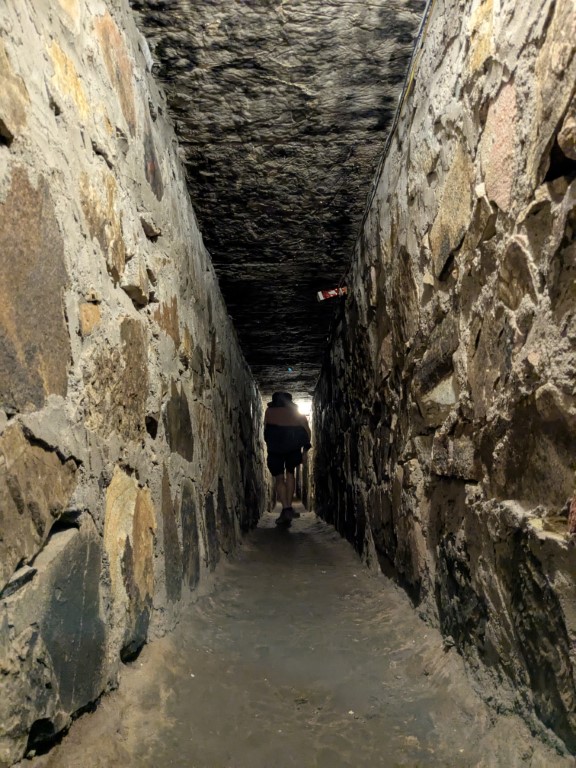
To the north of Lake Titicaca lies the little town of Lampa. It is known as the pink city because of it’s dusty, pink colored buildings and its Spanish colonial influence. We parked on the square and walked the town which was cute. We like the stonework in their little roads and the narrowness of them reminds me of Europe. We had to wait till morning to visit the Santiago Apostle church with its beautiful green roof so we stayed overnight on the square. The square was well loved and they even covered all of the flowers with tarps overnight. In the morning, we got to tour around the bowels of the church which was complete with catacombs, tunnels and a creepy round dome full of skeletons!! No explanation for whose bones these were but everything reminded me a bit of the stuff we saw in Sicily! We all surmised that they must have been Spanish bones given their length.
It was time to start moving toward Cuzco and the Sacred Valley. We would now be entering dense Inca ruin territory. But also colored mountain territory! We were finally getting into some of the mountain scenery that we love so much and had seen so many pics of in Peru. However we are sad to realize that we are now on the shoulder of the rainy season and that will probably affect what we can do overall come January-March. I had my heart set on backpacking in the Cordillera Blanca further north.
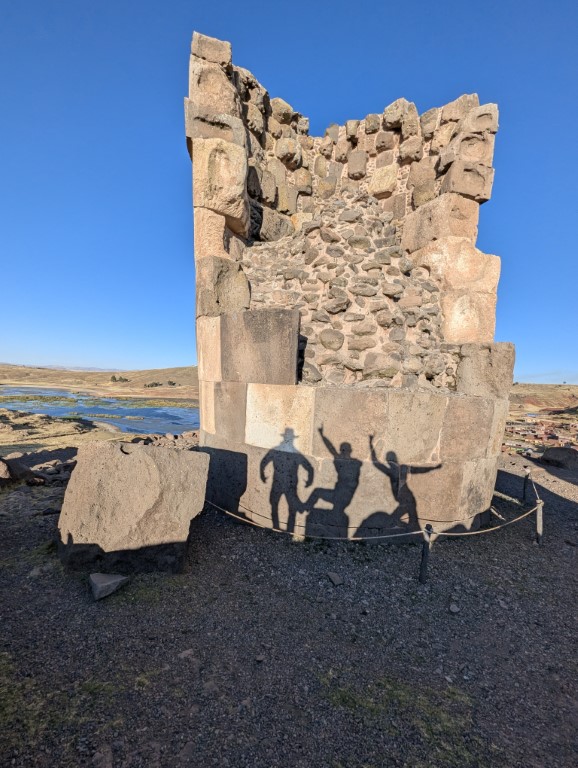
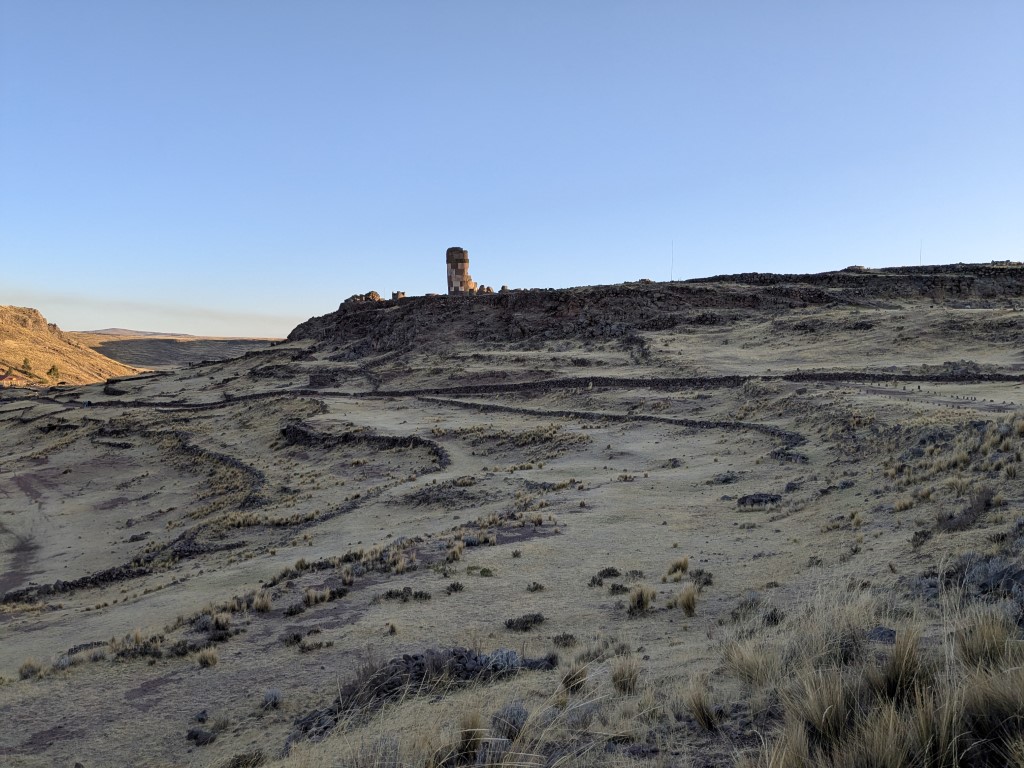
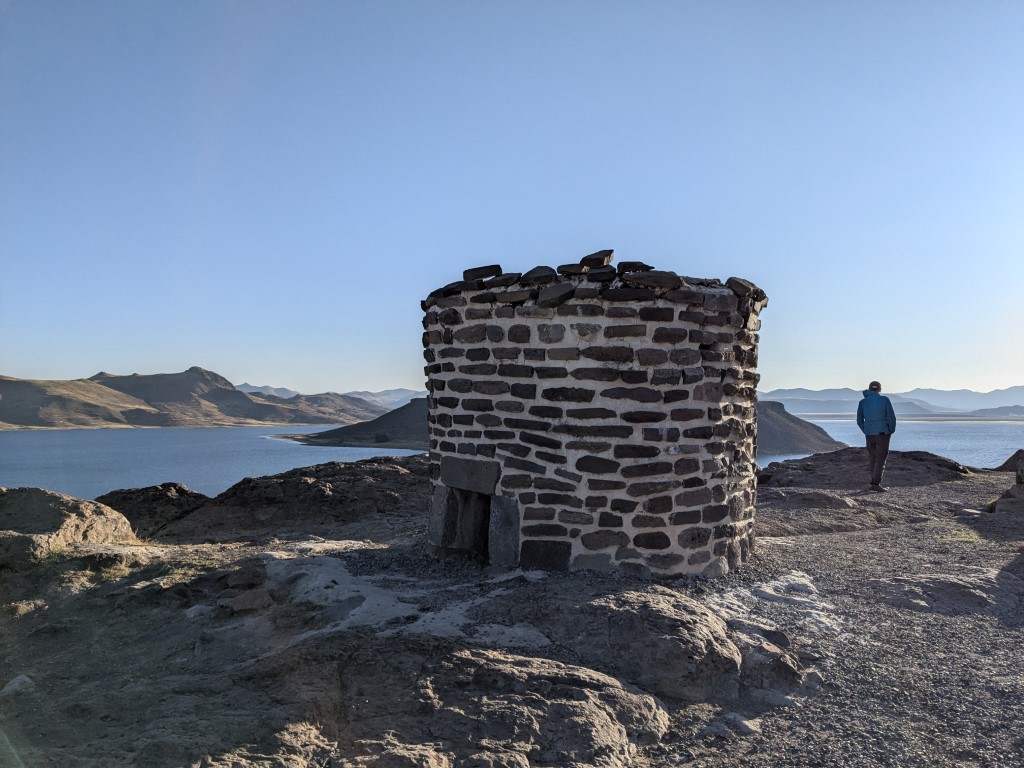
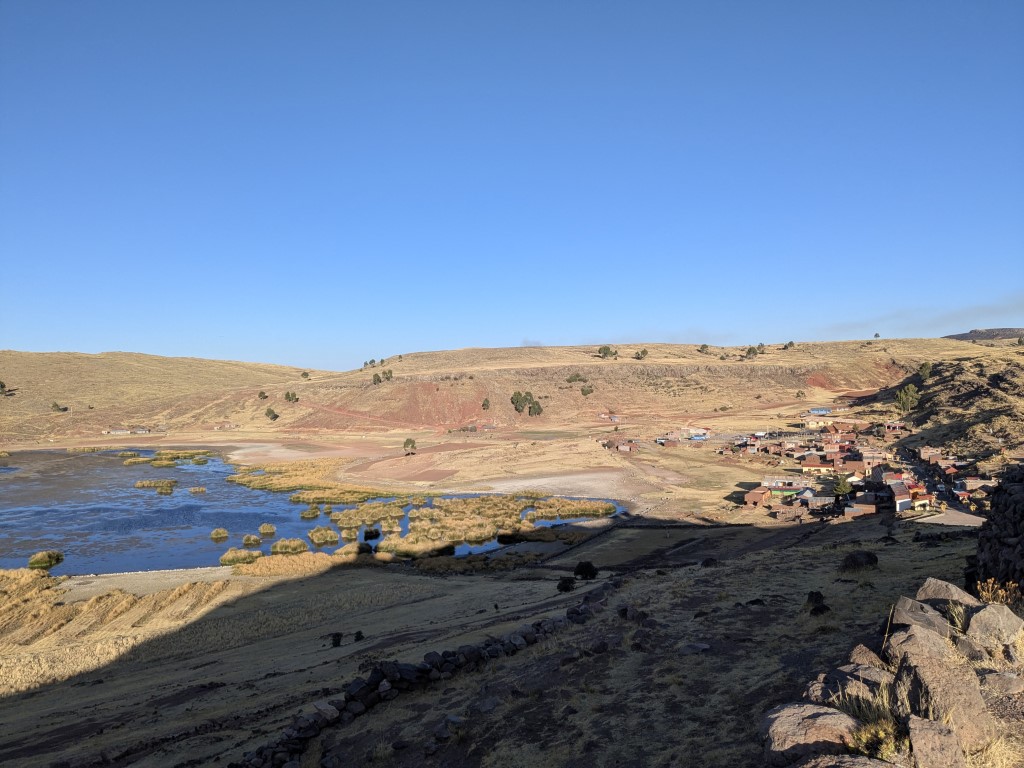
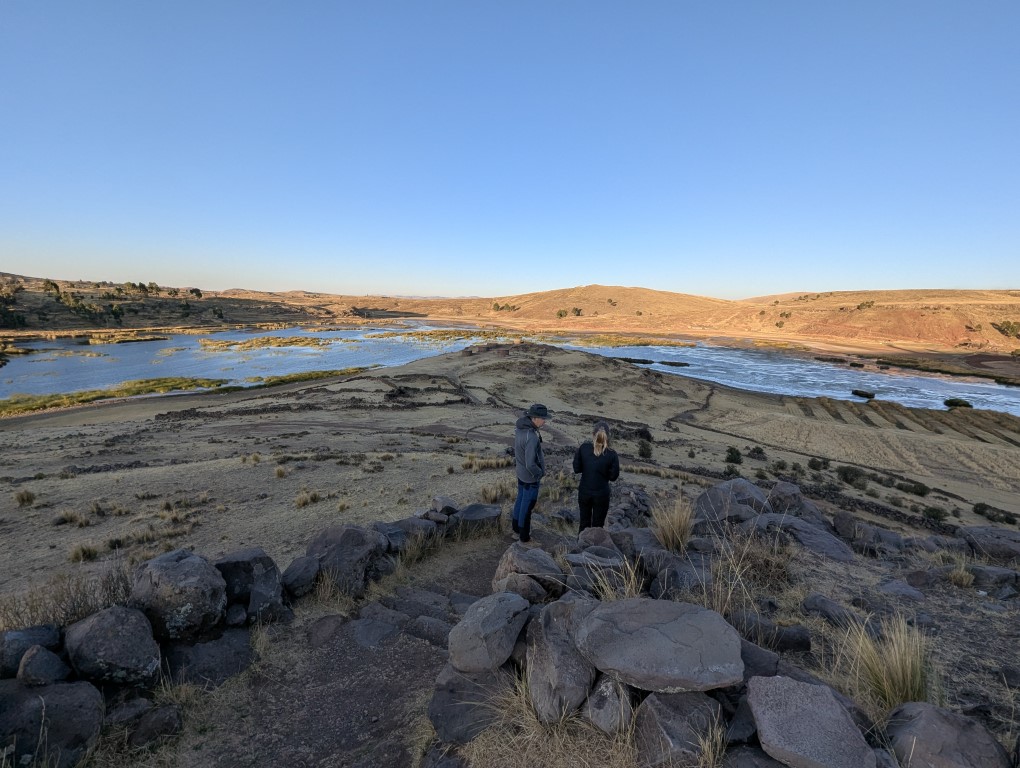
We visited an old Incan funerary ruin site that I can’t even remember the name of now but these are some pics.
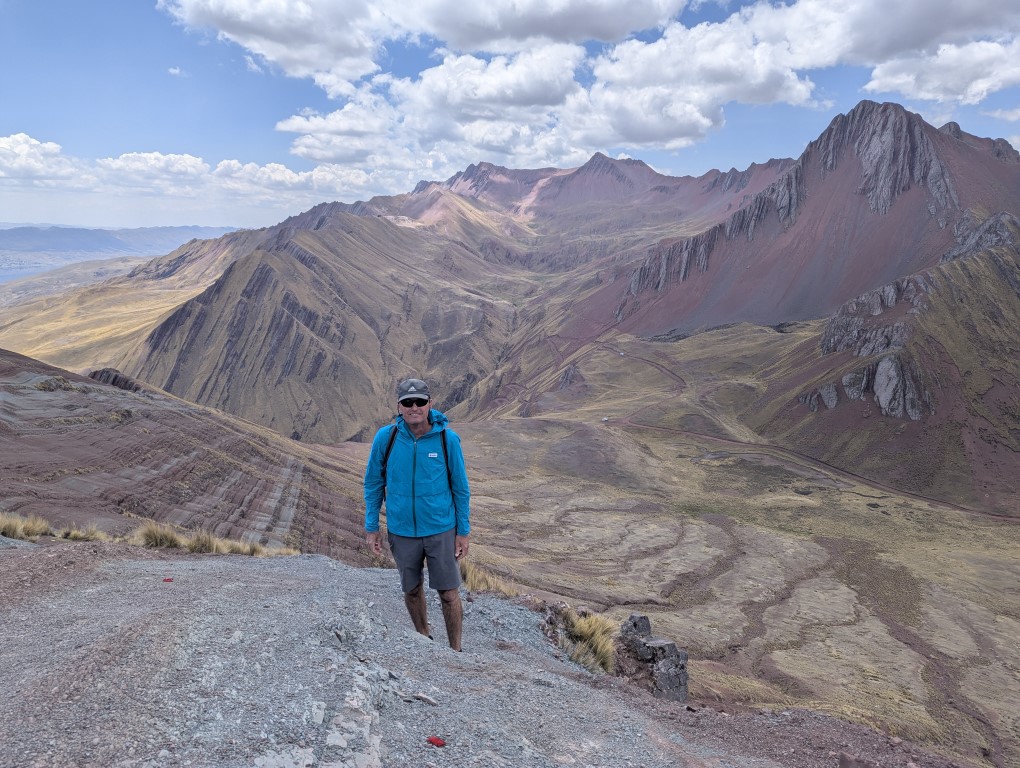
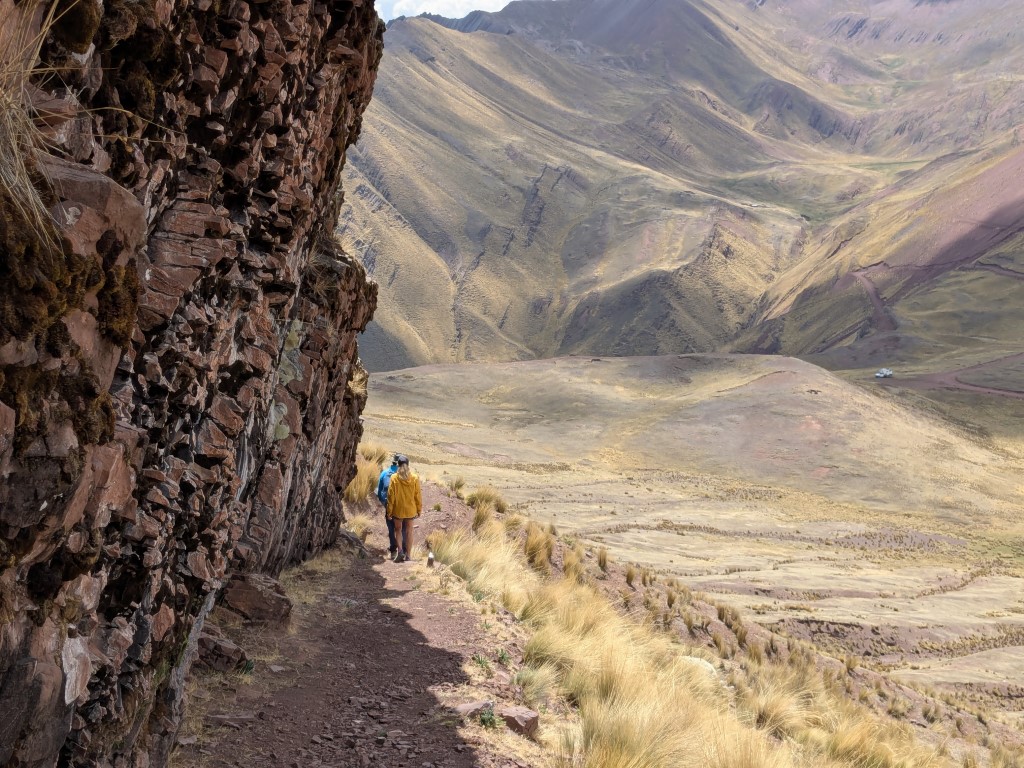
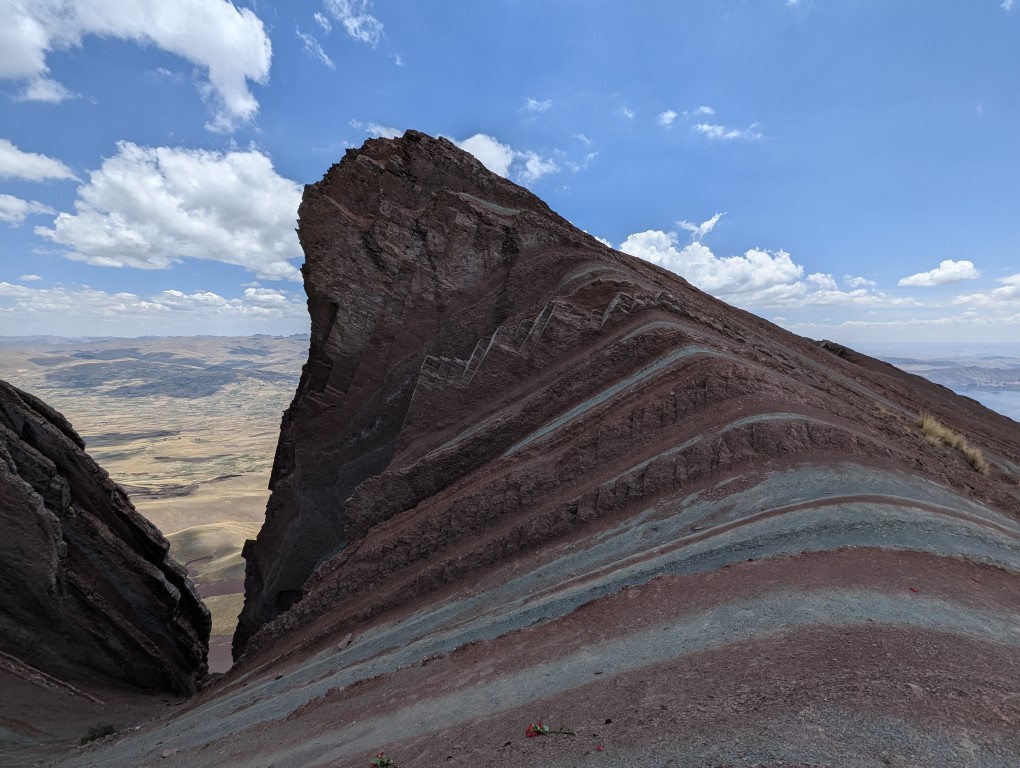
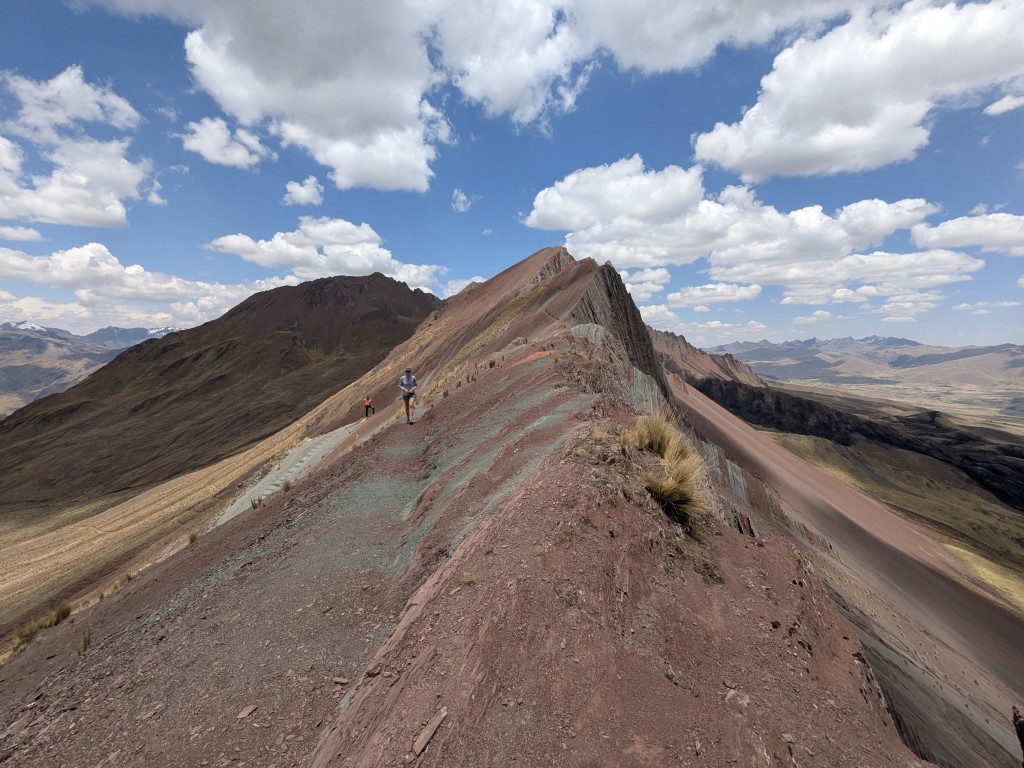
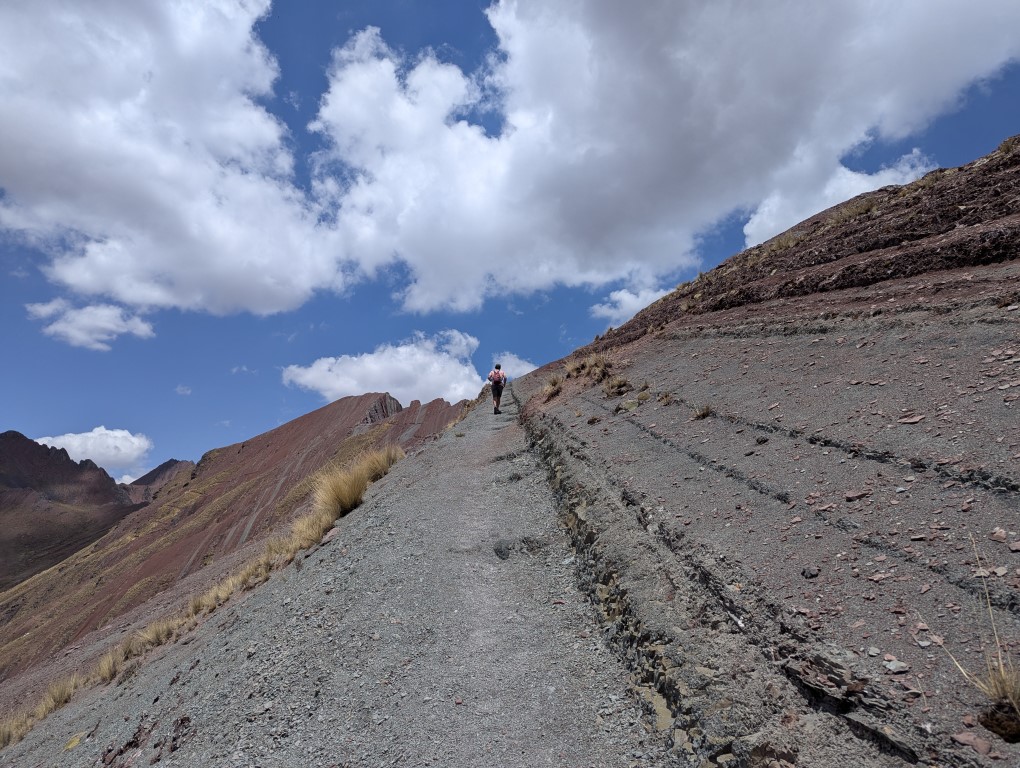
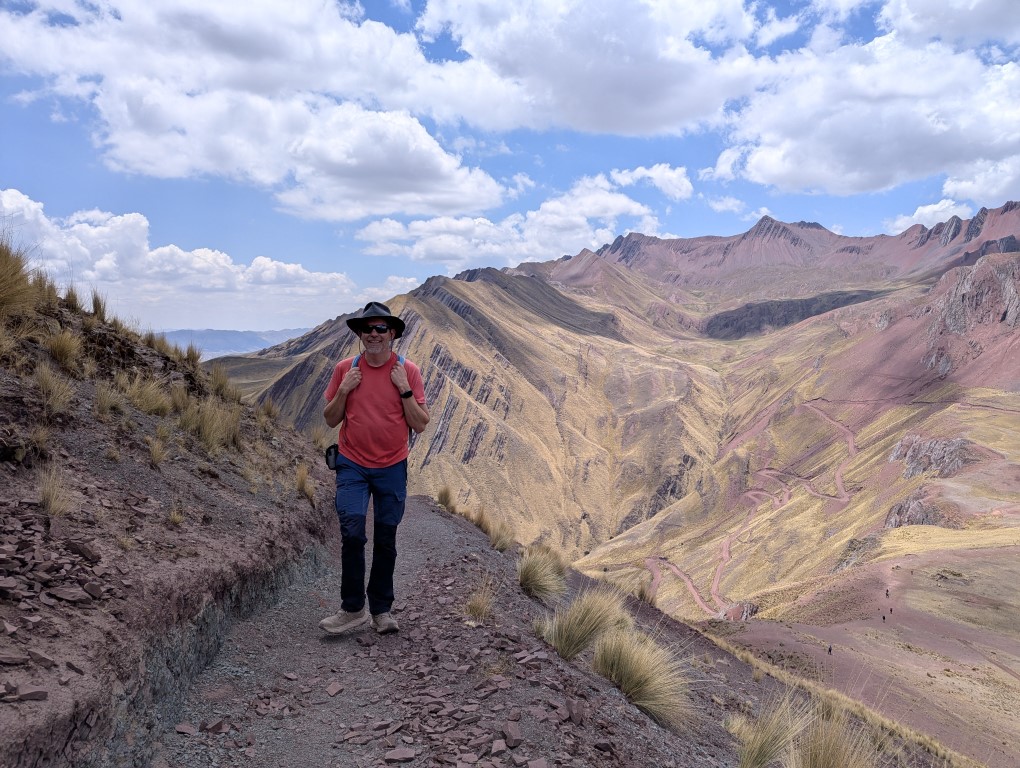
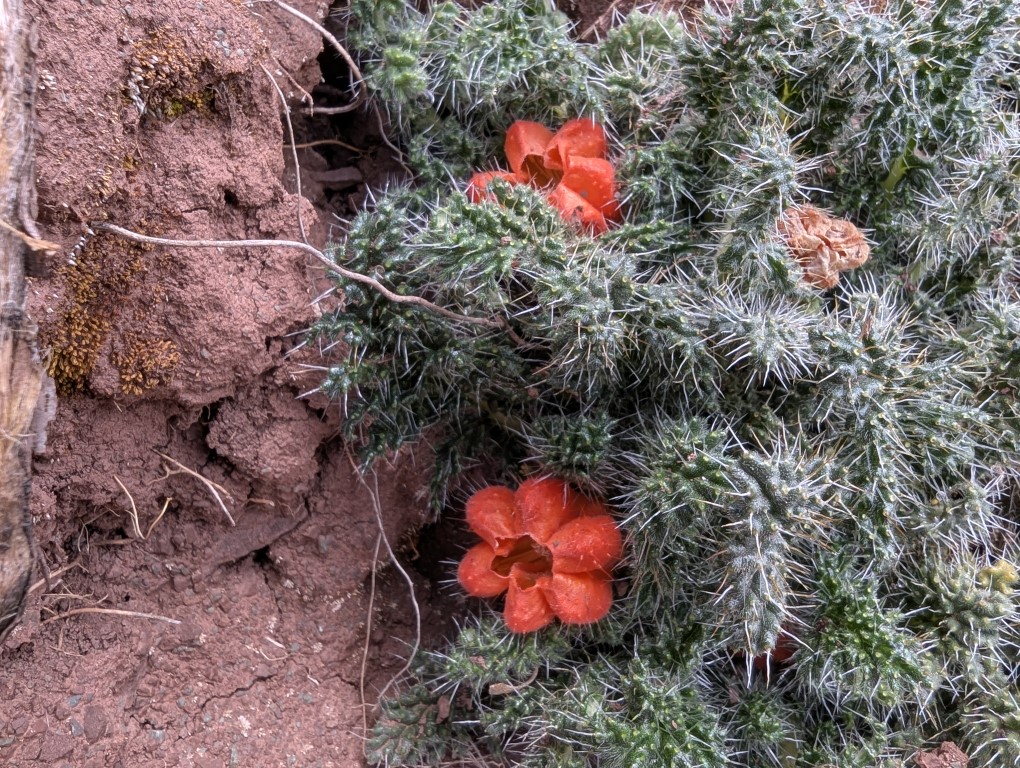
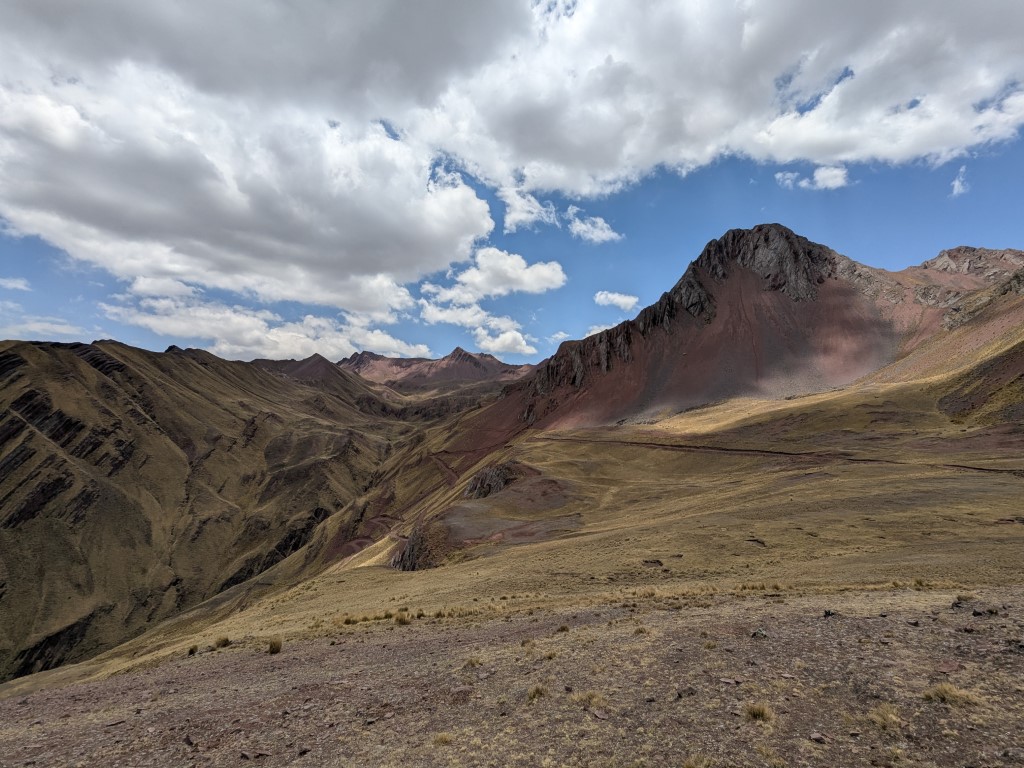
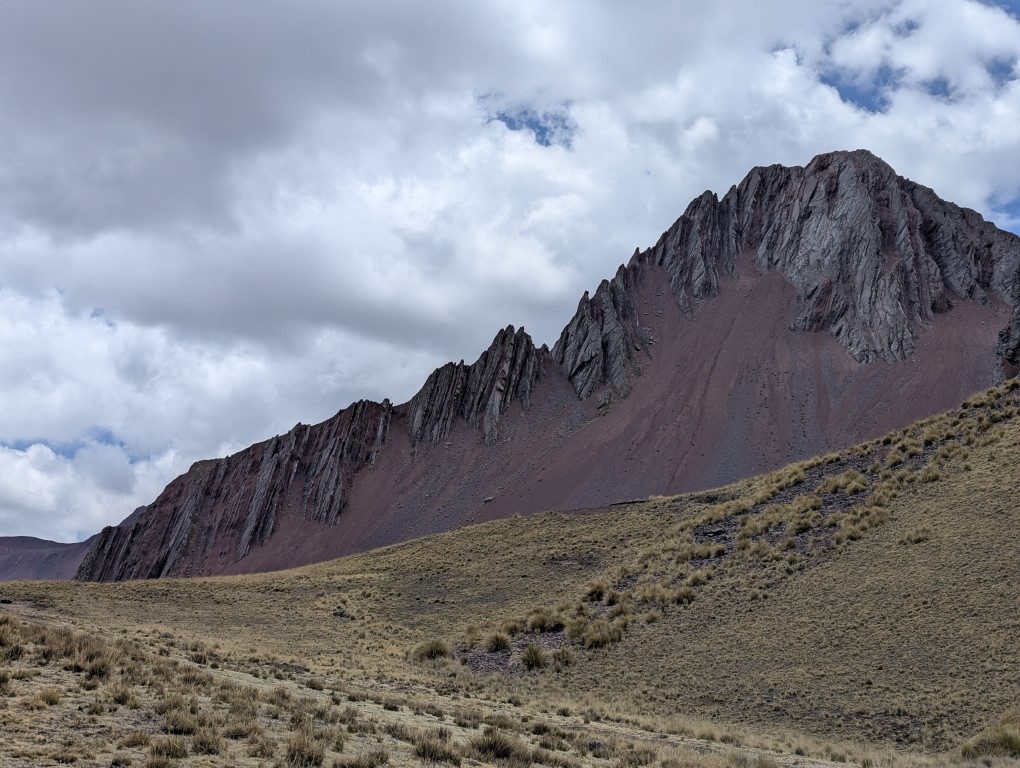
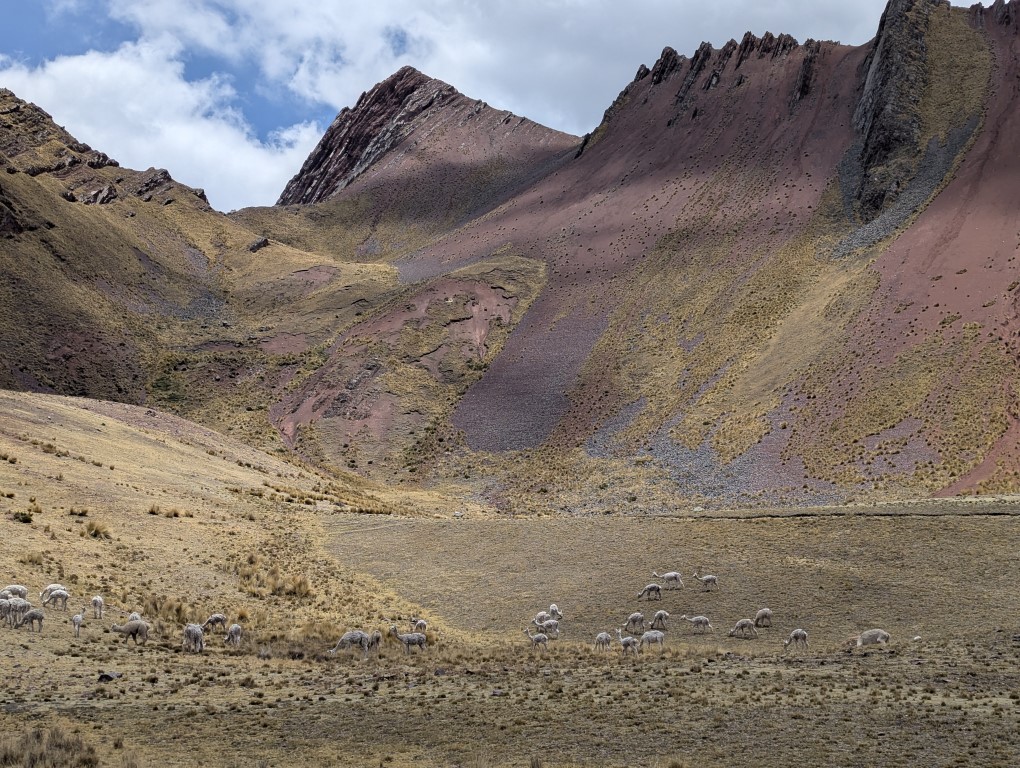
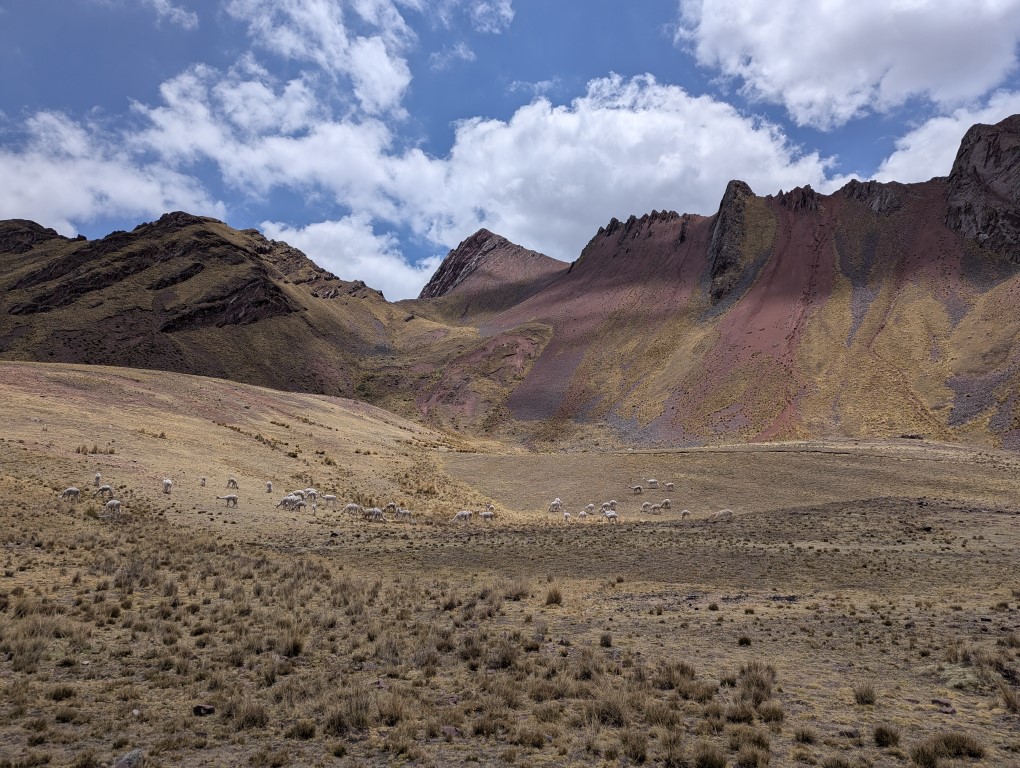
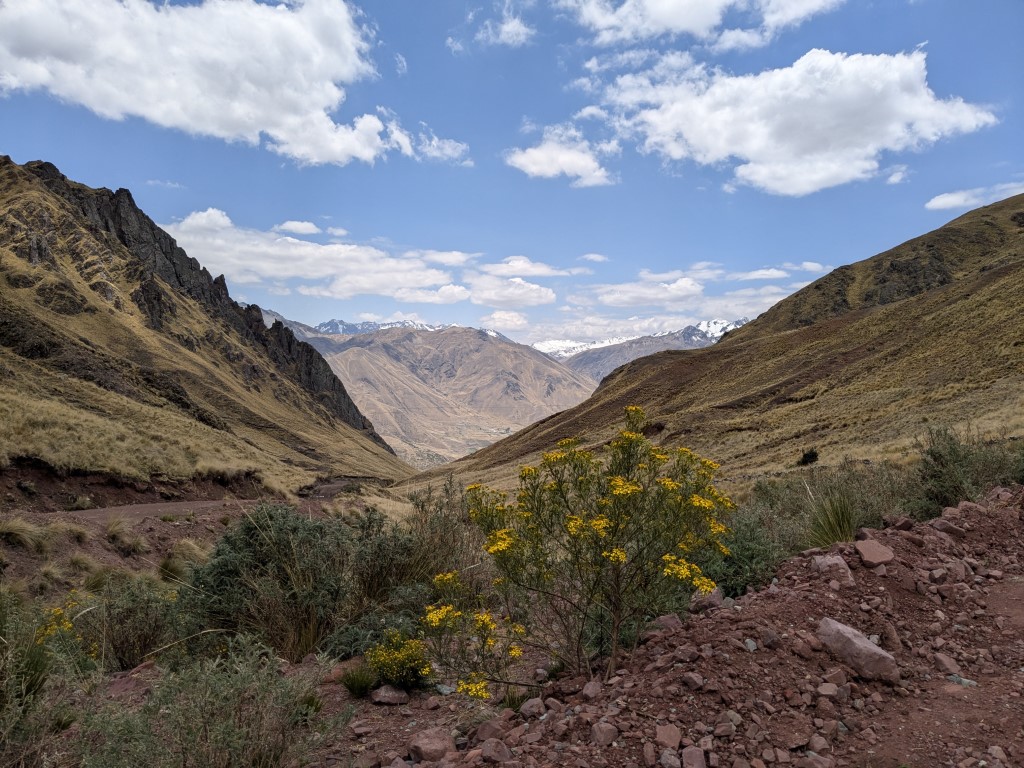
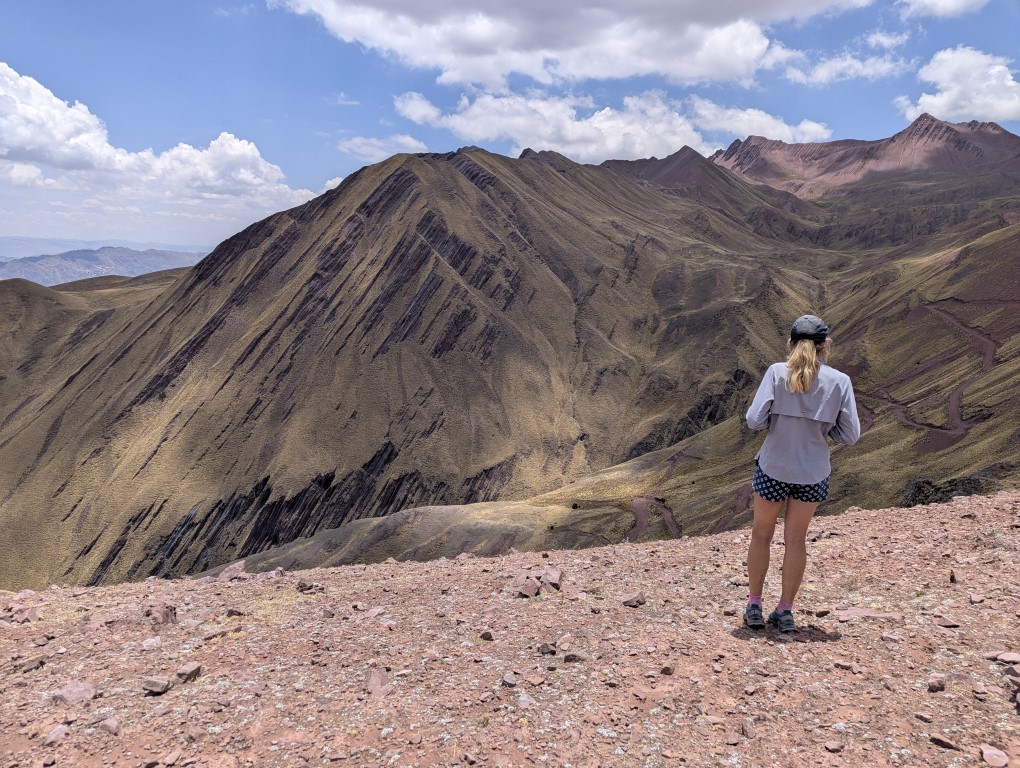
We drove up to the vicinity of the Rainbow mountains and made some attempts to get to some of the less touristy spots. We are finding that driving on Peru’s roads can be a test of patience, of vehicles and of bravery. They are steep, narrow with huge drop-offs and no place to turn around. We made it to one very beautiful spot but because of the narrowness of the road, we chose to park at the bottom and then walk up the entire way. It was a beautiful day and we got a good workout doing it. We are all acclimated to elevation and so could probably win races at sea level with all of the hemoglobin that we’ve made.
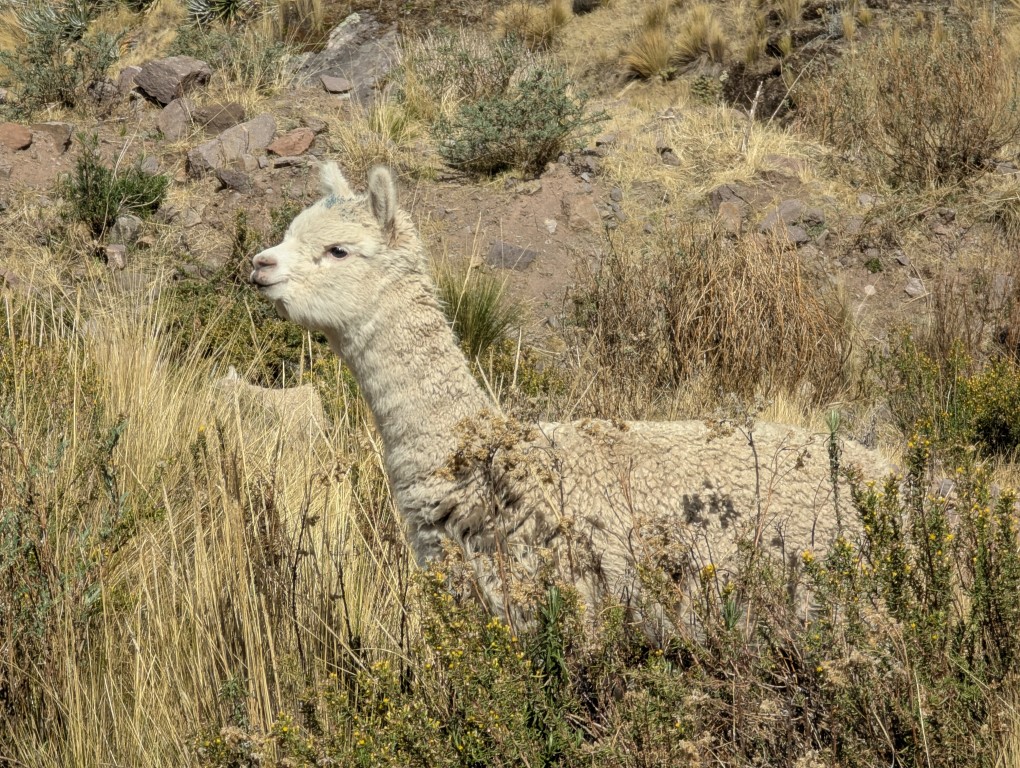
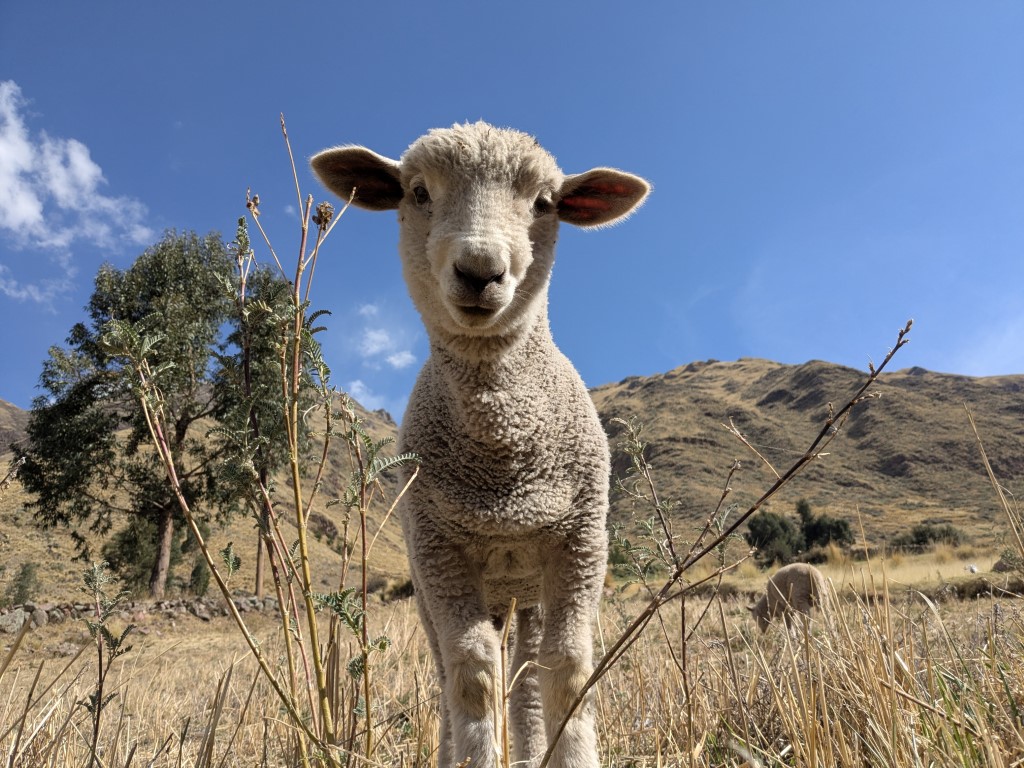
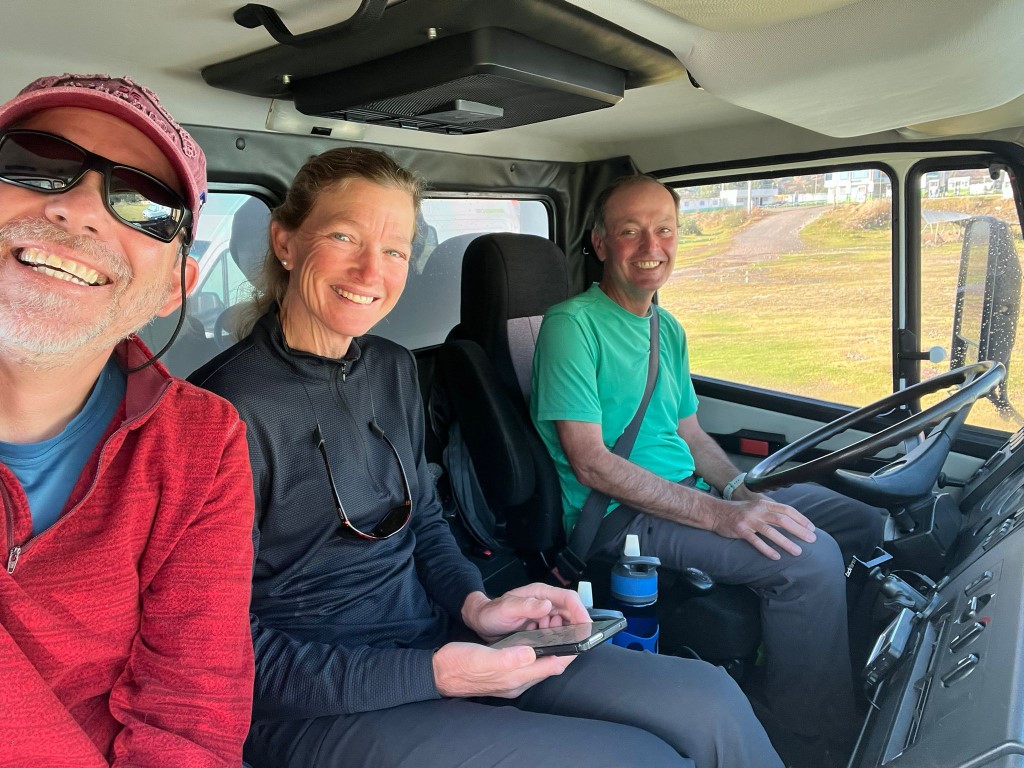
Then we staged to do another spot the following day and got up at 5 to ride all three in our truck to pass the road construction before the road closed but once again, we came upon a stick bridge that would never hold our truck so had to turn around and bag that idea. At this point, Ivan decided to leave for lower elevations because his van hasn’t been tolerating the high elevations. Jon & I regrouped and headed over to the town of Pitumarca to try and drive up to Rainbow Mountain. Well…. we did 15km on the road up there and it just kept getting narrower and scarier as Jon drove. When he gets stressed out I can smell his armpits and out of the corner of my eye I can also see him working too hard at driving. We both were feeling like if we had any issue with the truck other than falling off the cliff, we would be holding up a constant tourist bus train heading up to the Rainbow mountain and we would surely end up at the same place should that happen- at the bottom of the cliff! Because there would be no way around us. So once again, we turned back and camped on the square that night to get a taxi the next morning.
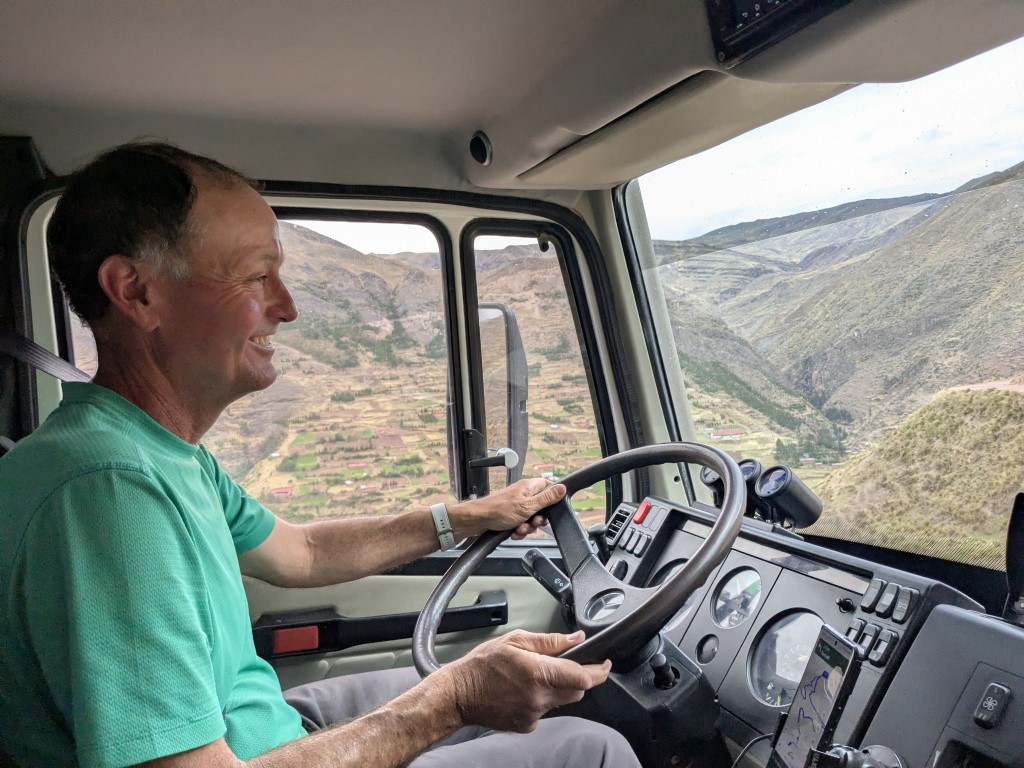
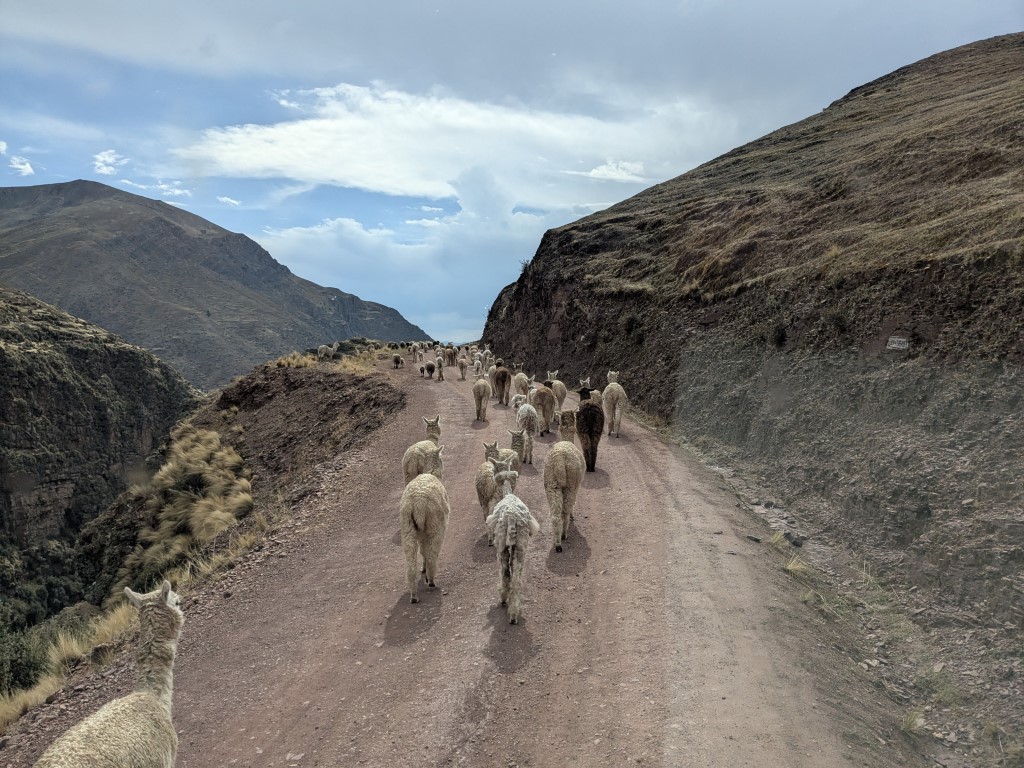
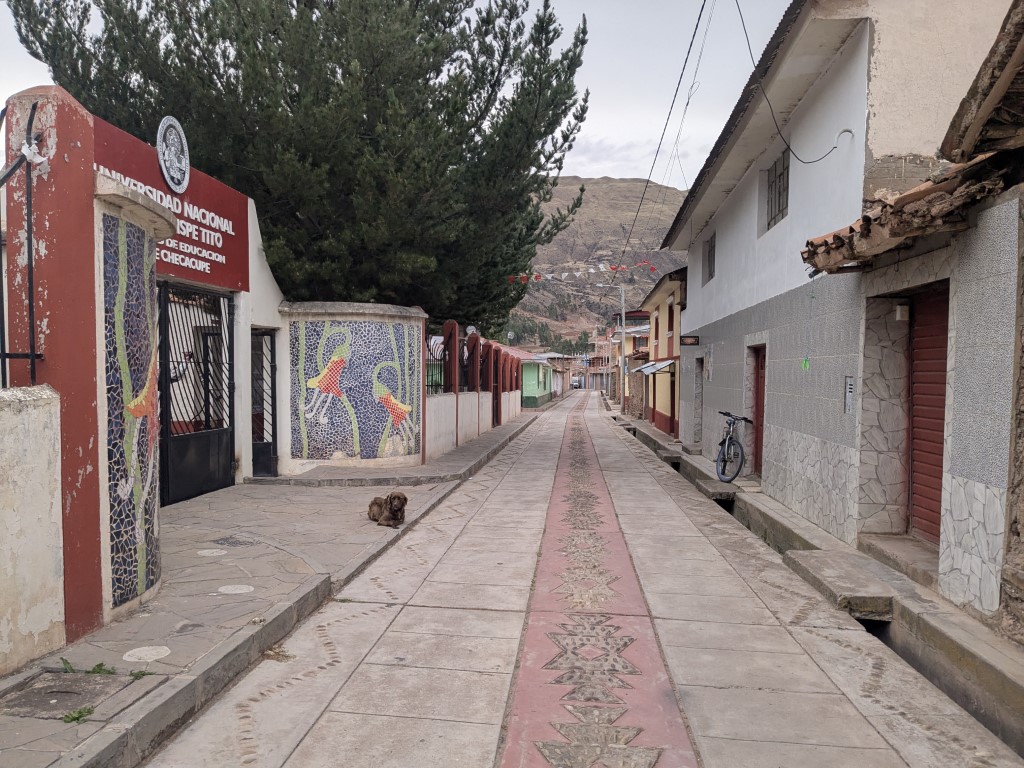
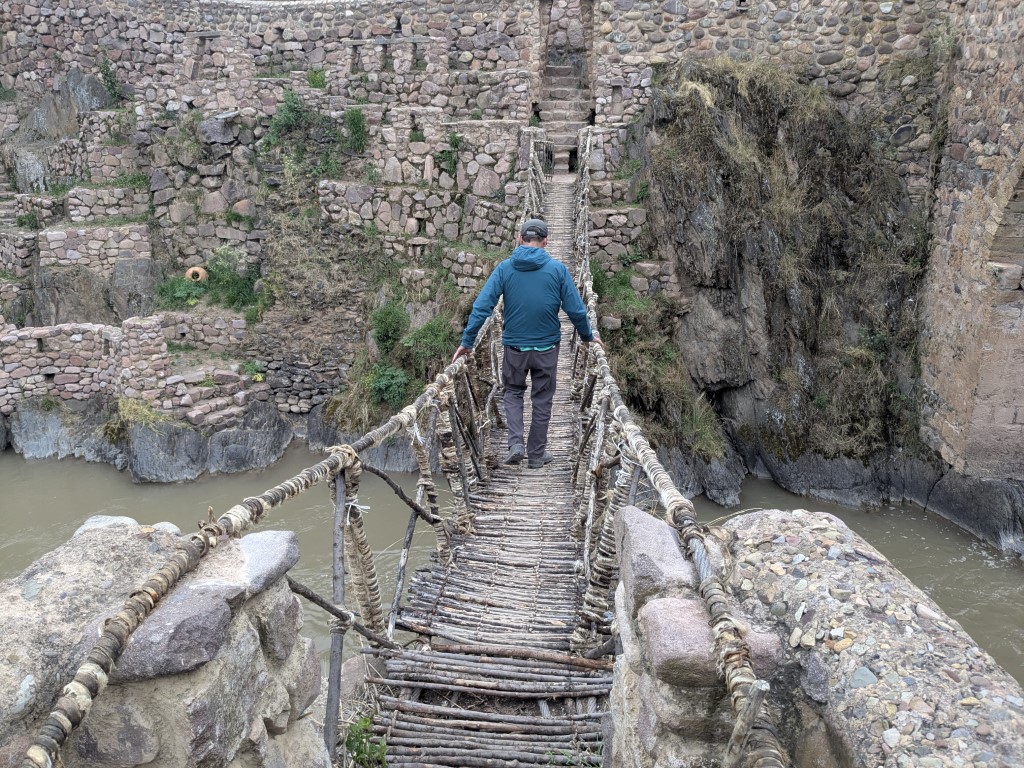
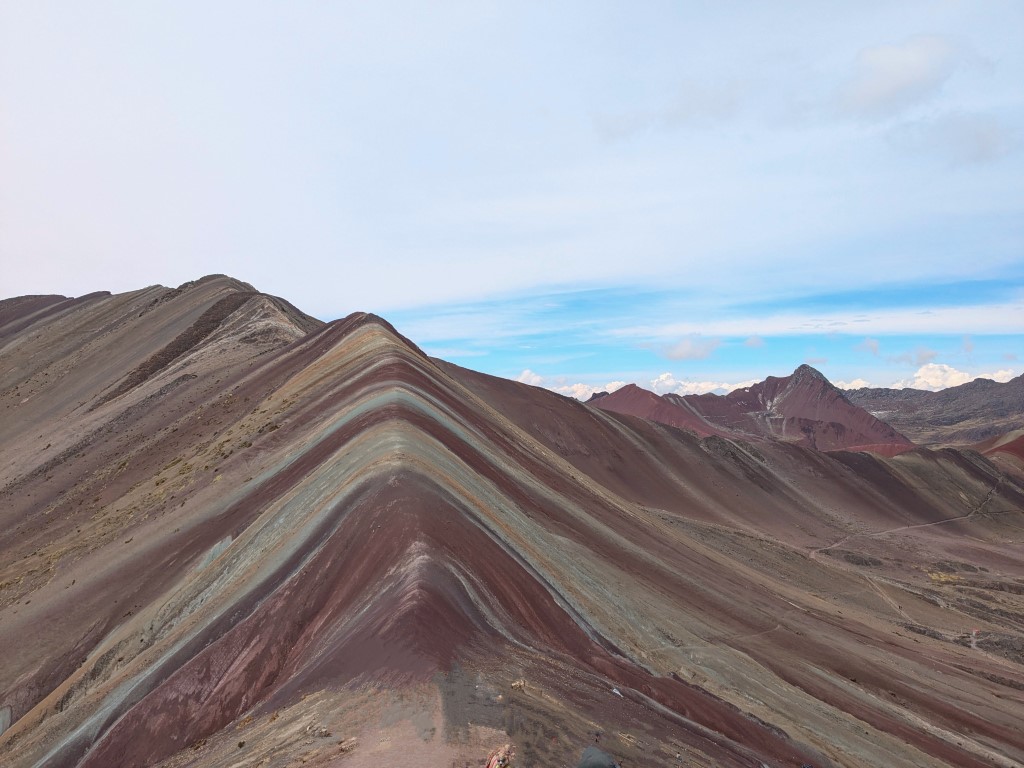
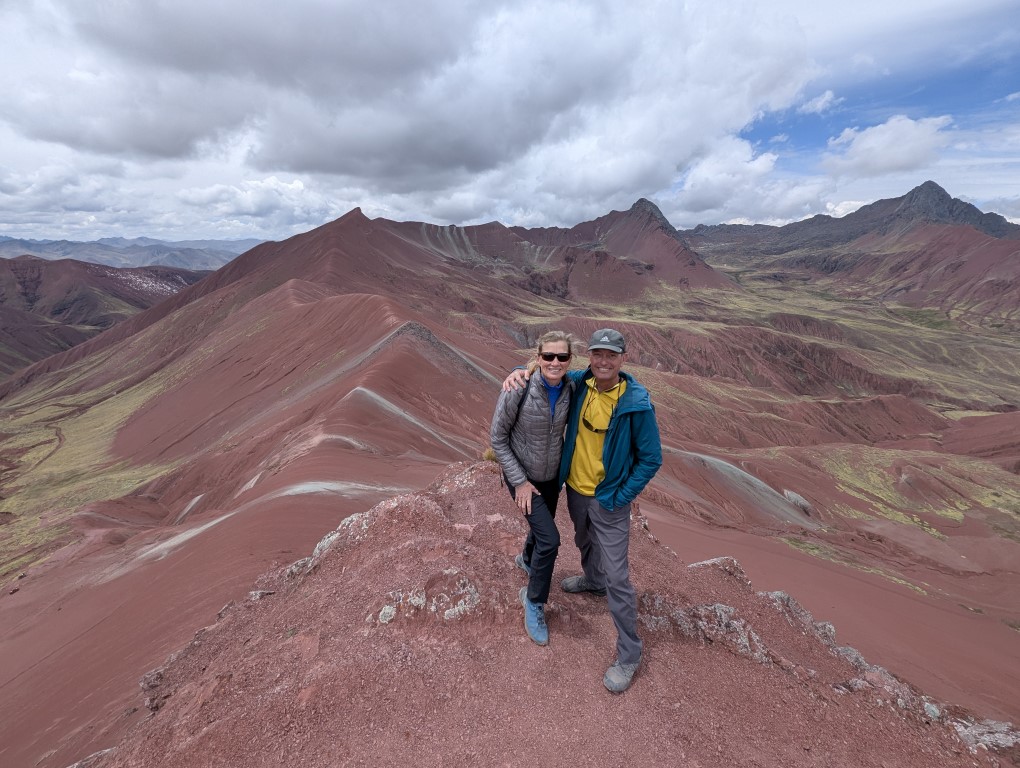
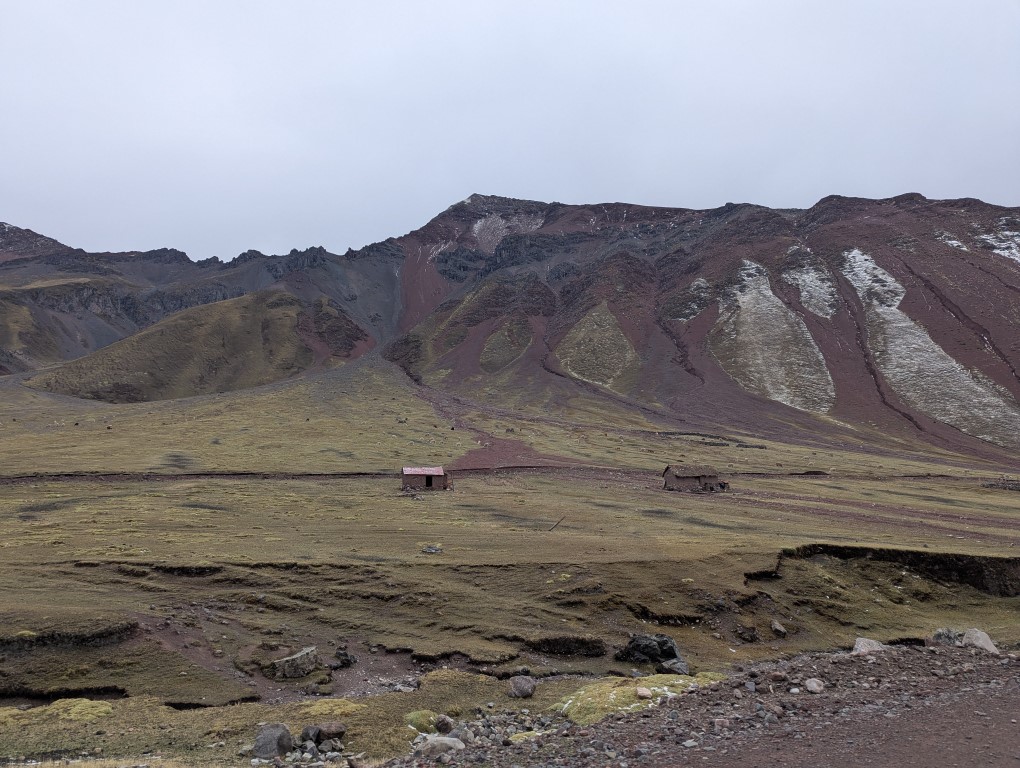
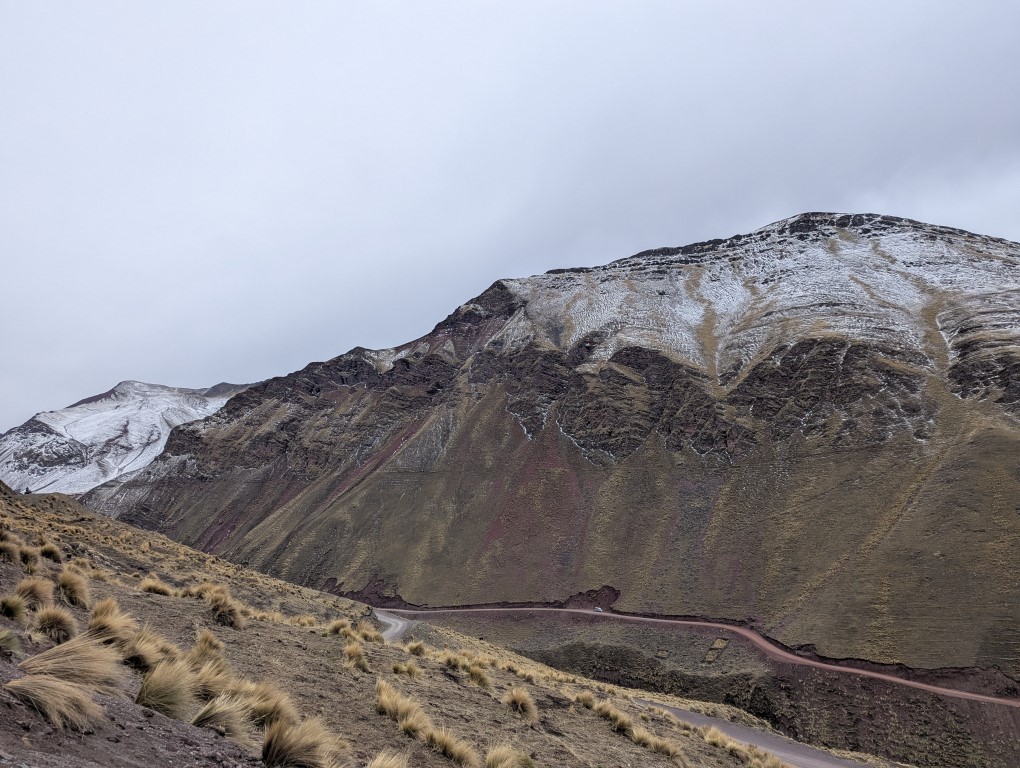
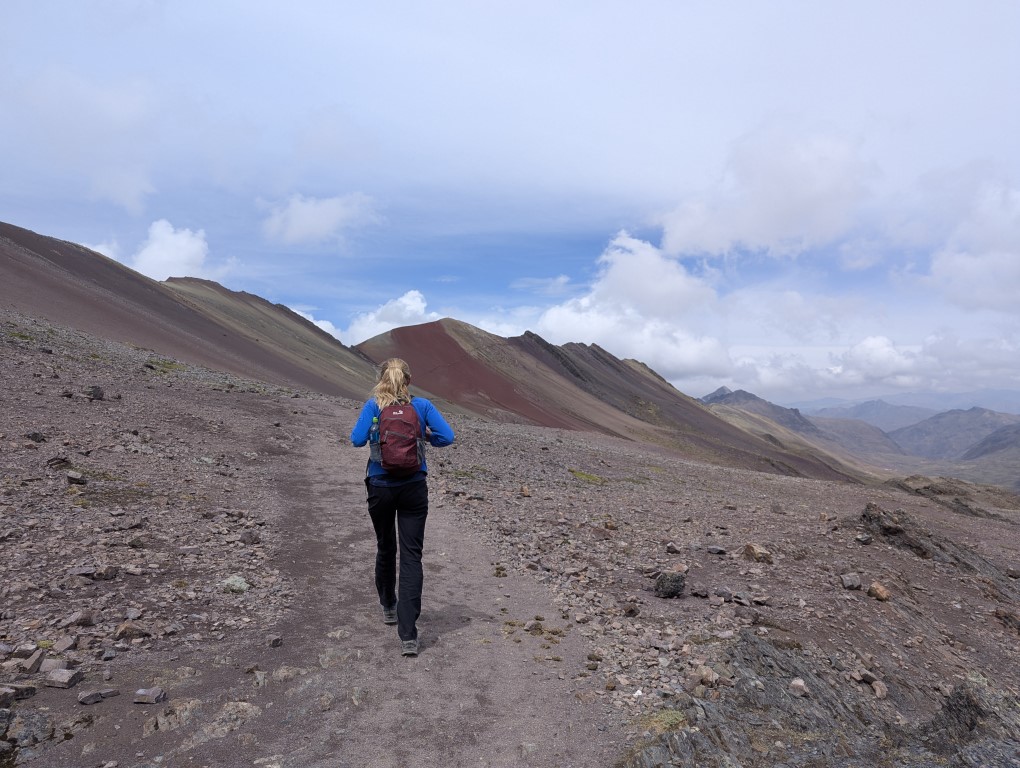
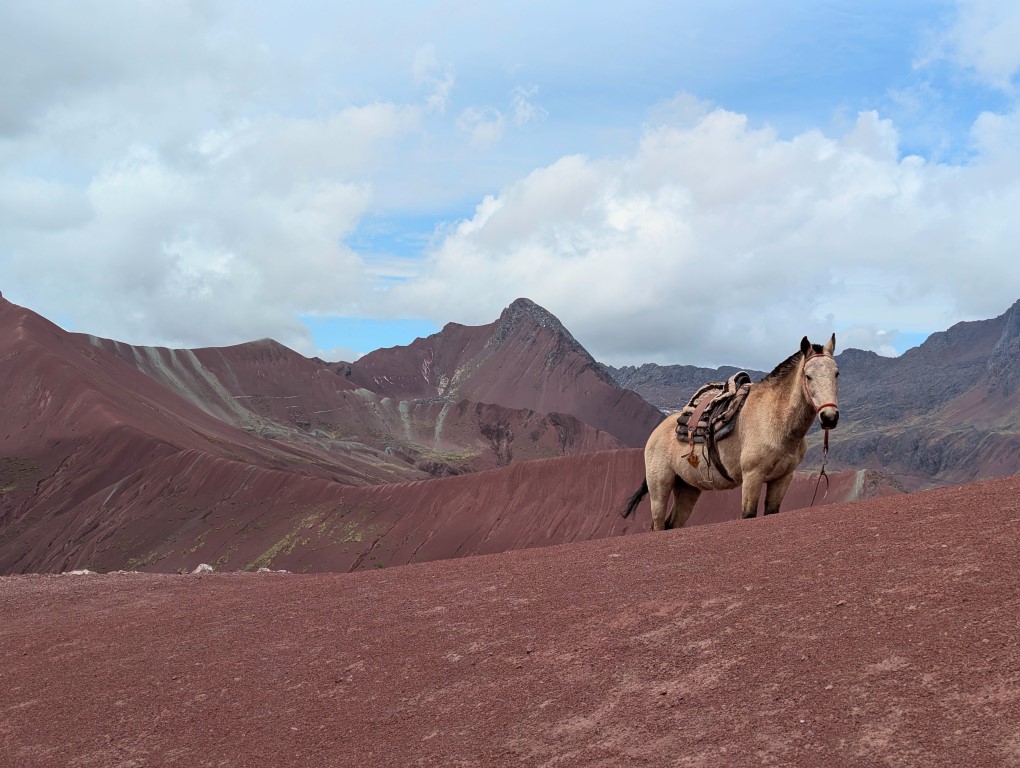
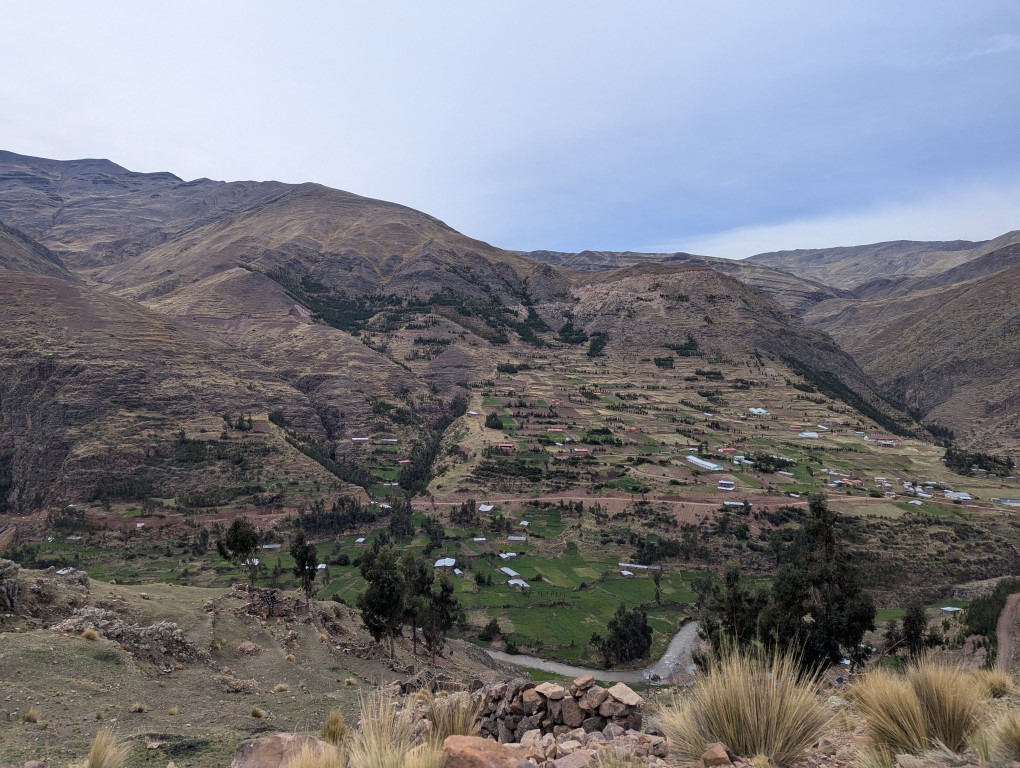
We did some sightseeing on the way up in the cab rather than be white knuckled in the truck and then we had 3 hours to hike as much of the area as we could. The Rainbow mountain is very beautiful and everyone is clustered around the viewpoint but once you get beyond it, there is a whole lot more to see on your own and it’s even more dramatic really. Before we were ready we were back in the cab headed down but it was great to do what we did and we think we can get at that area from the Ausengate side at a later date. But at that point it was time to head to Cuzco to meet back up with Ivan and we were also ready to start the Salkantay Trek.
